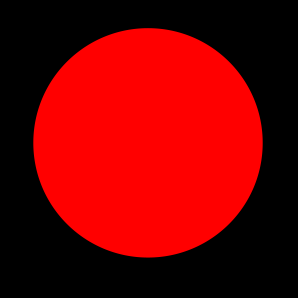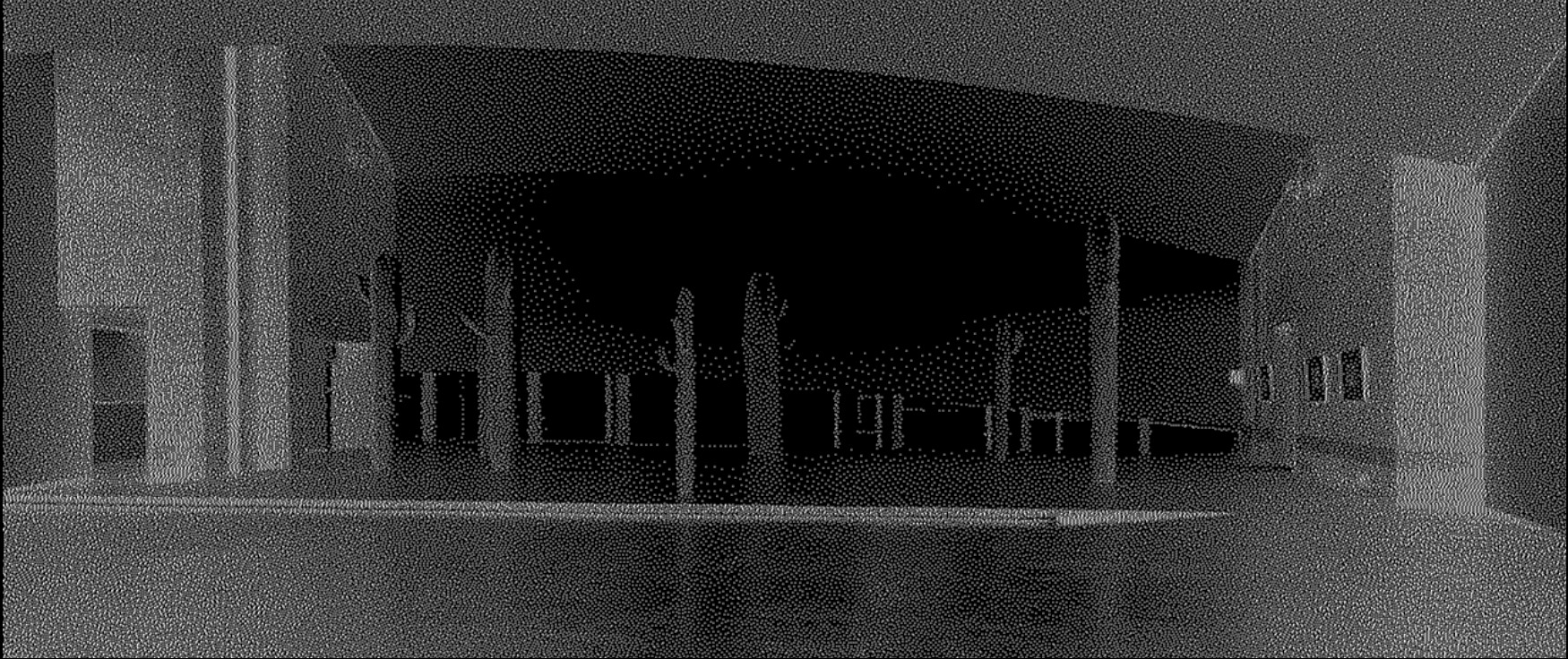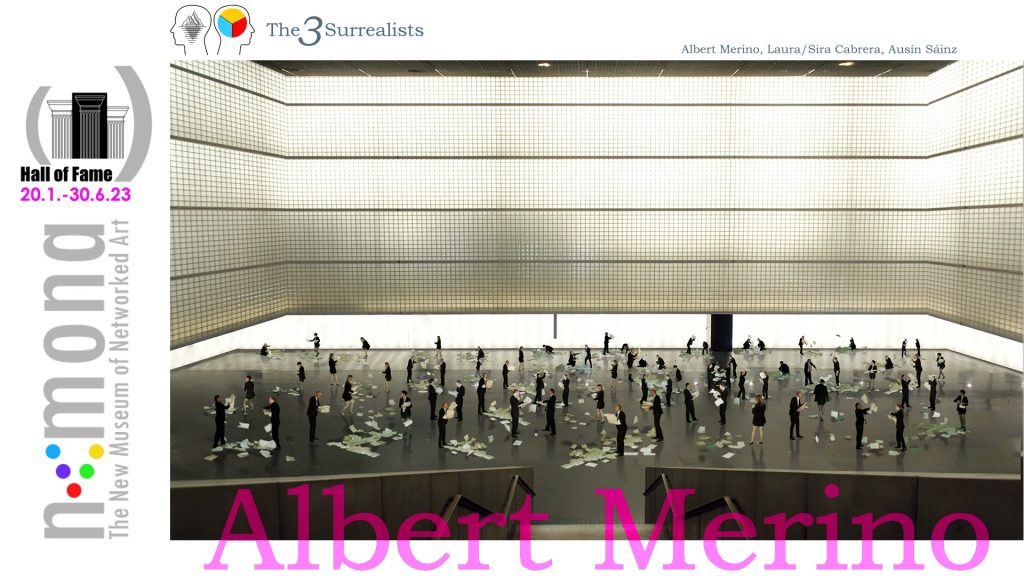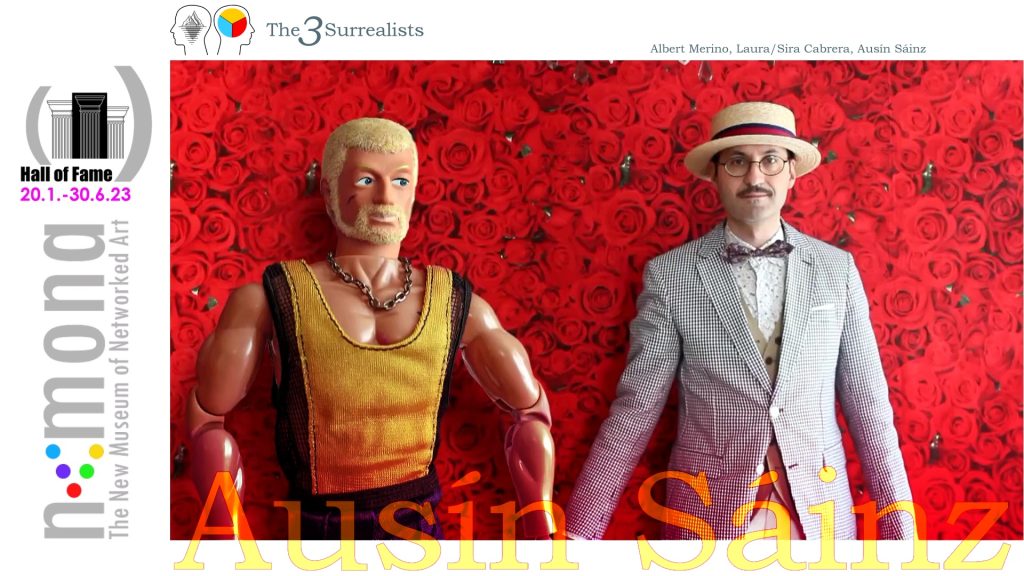
Winter of Enlightenment

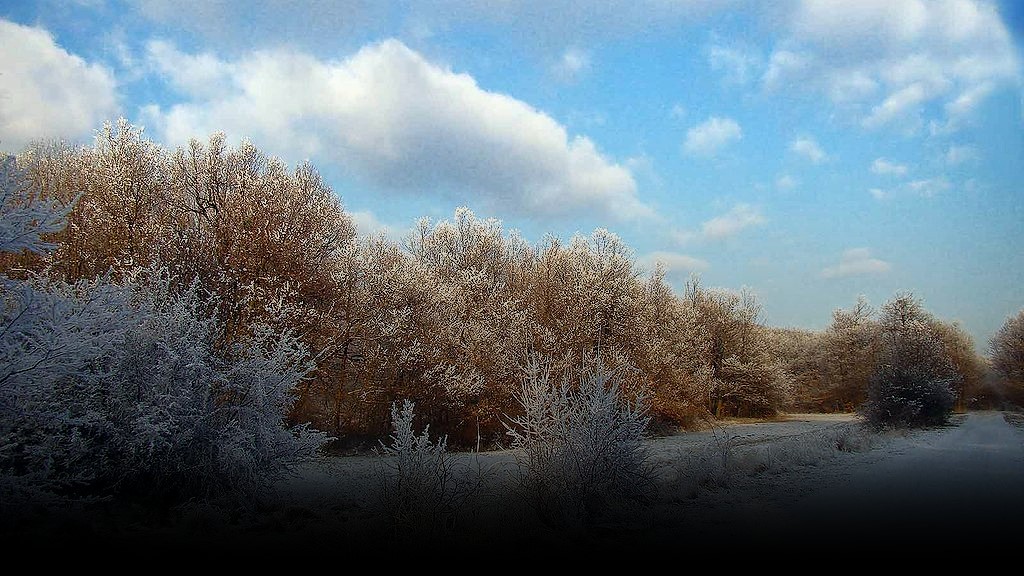
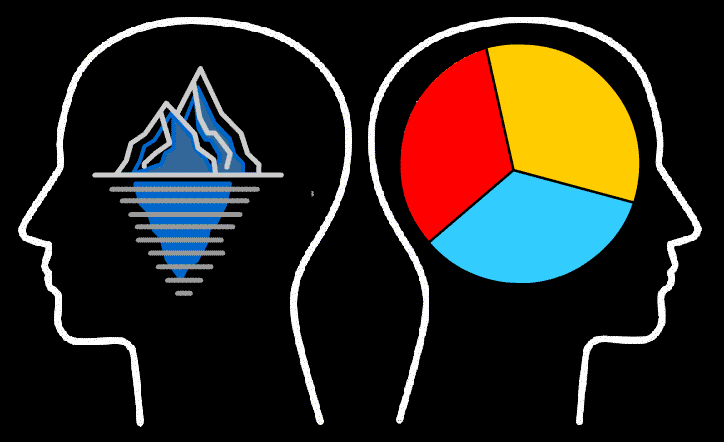
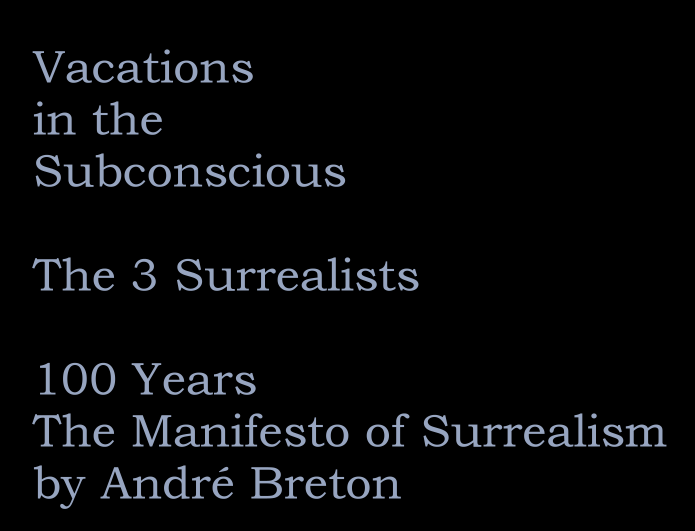


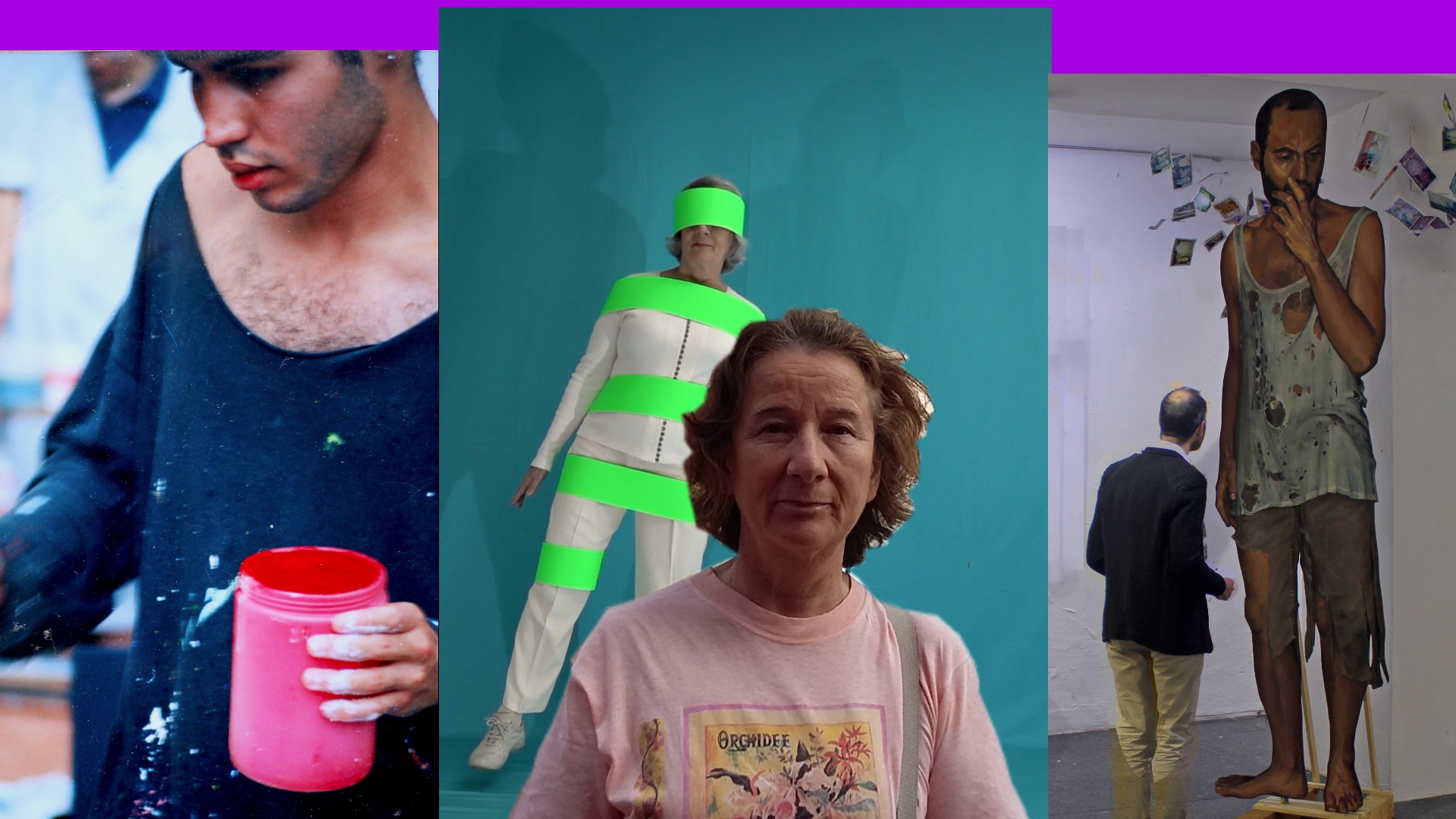
The 3 Surrealists

Concept
The title of the video art project- “The 3 Surrealists” can be understood rather as a kind of provocation 100 years after André Breton, released his Manifesto of Surrealism in 1924.
As an art historical period of 20th century, the classical Surrealism had quite a short high time as a literary and artistic movement/ideology but its innovative language of form and representation at that time had lasting influence on the next following artists’ generations until today.
In this way, Surrealism did not only survive but became a kind of genetic code of/in contemporary art using the alienation of the existing/reality as a basic artistic principle/pictorial and compositional element.
Moving images/film became already in the early phases a medium for juxtaposing different types of realities, confronting the subjective, psychological condition of an individual with a more multifaceted reality of society.
Particularly the technological development of the digitalization since 2000 is allowing artists of all disciplines to create new realities of imagination generating not only visual, but general sensual sensations, including, like 100 years ago in Surrealism, that the effect as such is already misunderstood as an artistic expression.
While film/cinema had been a medium to be used from the beginning by some privileged people, it was this digitalization causing a democratization through the affordability/availability of the medium for all – video as a mass phenomenon and a favorite medium of artists.

The currently used artistic languages are the expression of this democratization, as well, the artists can draw from a wealth of possibilities.
Our three Spanish video artists Albert Merino, Laura / Sira Cabrera and Ausín Saínz are acting in this situational, historical, cultural and social context.
Although each of them is characterized by an artistic individuality generating a completely different creative output than the colleagues, all three have much in common – they follow an individual artistic concept based on criticism – on society – feminism – human rights – environment – climate change etc. They use – the technology in a exceptionally creative way, the different principles of alienation generating an individual cosmos of imagination/reality, and – by doing so they create what the Surrealists describe as dreamlike sequences hidden in the subconscious, they use different ways how communicate with the viewer.
In a certain way, all three are portraying themselves as a part of what is happening. While Ausín Saínz and the twins Laura/Sira Cabrera can be realized as acting persons/representatives of society, culture, environment – victims and perpetrators alike, Albert Merino’s metaphorical language does the same but more subtle, less obvious, his Compulsive Self-portrait is indicating, that he actually is playing the role of all the protagonists performing in his videos, as well, the different characters appearing in his videos compressed in one person. The individual artist is standing for mankind/society, and – the dangers the individual is confronted with and generating at the same time.
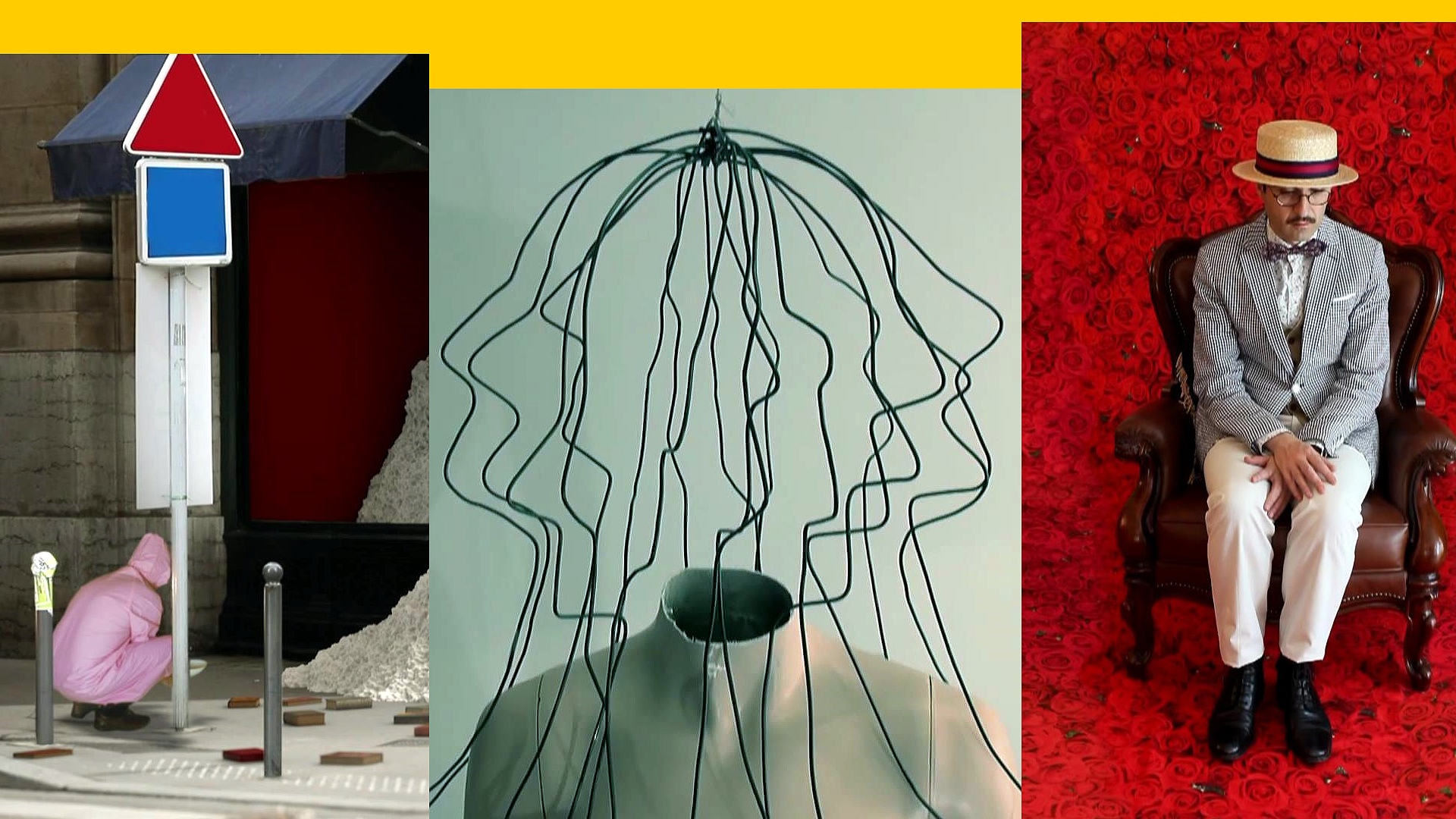
While Surrealism, like other art movements at their time had their roots in the turning point of society caused by the industrialization, as well as the traumatization of World War I, our three Spanish surrealists are not only standing at another human made turning point 100 hundred years later – the destruction of the natural environment, the climate change endangering life – the human, animal and plant species on planet Earth, and the effects on society and the individual, but reflect this turning point in most different ways by using a technology which is standing for another turning point – the digitalization in all areas of life causing a fundamental re-thinking of human values.
Re-thinking, that’s what Albert Merino’s , Laura / Sira Cabrera’s and Ausín Saínz’s artistic work is chracterizing, also re-thinking art as such. They are standing for the diversity of artistic individuality in video art /art video.
The 3 Surrealists project, featuring 10 videos by each artist created during the past 10 years would like to start a discussion about the point of view of contemporary art and moving images these days.
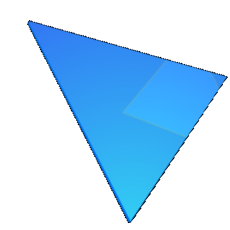
Surrealism is an art movement that emerged from Dadaism in 1920 and, influenced by psychoanalysis, aimed to make the contradictory experiences of dreams and reality tangible in an expanded consciousness as complex super-reality.
progenitors and roots
The unreal fantastic in the paintings of HIERONYMUS BOSCH and the dramatically staged visions of Mannerist painting in the 16th century are to be regarded as the forerunners and roots of Surrealism, which was formed in Paris from 1920 onwards.
Connected by the experiences of Dadaism and stimulated by SIGMUND FREUD’s insights into the effects of unconscious, psychological processes, a group of writers and artists formed, whose goals were first identified by GUILLAUME APOLLINAIRE (actually WILHELM APOLLINARIS DE KOSTROWITZKY, 1880-1918) with the term labeled “Surrealism”.
“Pittura Metafisica”
The painting of the Italian “Pittura Metafisica” (German: metaphysical painting), with which GIORGIO DE CHIRICO and CARLO CARRA (1881-1966) from 1917 onwards designed their psychological and philosophical perspectives in a traditional, painterly form, is considered to be the forerunner of Surrealism. They strived “to show the inner meaning, the higher reality beyond things”.
The preoccupation with the art of antiquity and the Renaissance formed the pool of her pictorial works, which are above all influenced by the motifs of the northern Italian city of Ferrara with its wide, empty squares, the statues and the monumental walls.
DE CHIRICO’s “The Disturbing Muses” and CARRA’s “Metaphysical Muse” (1917) address the culture of antiquity in a frozen alienation that seems petrified. Instead of the traditional admiration for beauty, the muses that once inspired thought appear only as abandoned, faceless, empty puppets, which in a perspectively stretched space like in the limelight on an abandoned theater stage seem to be only forgotten, motionless props . The magical isolation of things creates a sense of loneliness and mysterious disconnection. With a meditative turn to one’s own inwardness, the alogical composition of things leads to the question of a deeper meaning of existence lying behind experience and behind the superficial view.
The basic idea that behind the visible world there is an invisible world that can only be grasped in thought and that ranges from the often indescriptive laws of physics to the limits of metaphysical attempts at knowledge is at the beginning of all religion and philosophy.
dream interpretation
With his investigations, SIGMUND FREUD wanted to put the interpretation of dreams, which had influenced very concrete and politically highly significant decisions since antiquity, on a scientific basis.
Other states of consciousness could also be reached through hypnosis or drug use, which are experienced as an independent counter-world to material reality.
As early as the turn of the century, HENRI ROUSSEAU had depicted fascinating dream worlds with his large-format paintings as exotic visions in his seemingly naïve but very precisely executed paintings. The picture “The Dream” from 1910 with the red plush sofa in a green, impenetrable jungle seemed to TRISTAN TZARA to anticipate the “confrontation of alien realities on a picture surface”, which later had a strong influence on Surrealist art as a fundamental design technique of free association.
Dualism of dream and reality
The surrealists wanted to overcome the seemingly indissoluble dualism of dream and reality and, by combining the opposites, achieve a new, more complex and thus more far-reaching understanding of reality. The aim was to expand consciousness to a “surreal” view of things, i.e. one that goes beyond simple reality.
The Paris Surrealists, with ANDRE BRETON, LOUIS ARAGON (1897-1982), PHILIPPE SOUPAULT (1897-1990) and TRISTAN TZARA, were initially a literary movement and disseminated surrealist ideas in their magazine “Litterature”.
They were soon supported by the painters MARCEL DUCHAMP, MAN RAY, FRANCIS PICABIA and MAX ERNST (1891–1976), who organized their first joint exhibitions from 1925, which also included HANS ARP, PAUL KLEE, ANDRE MASSON (1896–1987), JOAN MIRÓ (1893-1983) and PABLO PICASSO participated.
MAX ERNST
In the picture “Au Rendez-vous des Amies” by MAX ERNST, the people depicted seem to float above the ground – as if carried by invisible forces – giving the picture an aura of the unreal that is no longer bound by the laws of gravity seems to be.
In Joan Miró’s pictures, the attempt to reproduce the immediate pictorial nature of thinking becomes clear. The picture “The Wine Bottle” from 1924 is no longer a mirror of the external world of things, but becomes a new reality in which the familiar objects are only contained symbolically – like alienated signs. MAX ERNST primarily developed his own technical processes in the production of images in order to eliminate the conscious, creative will.
In 1925 he discovered “Frottage” as a suitable method for a quasi-automatic design process. The “Grattage” process expands these possibilities by placing a canvas painted with different layers of paint over relief-like objects so that their structures produce an imprint in the colors. When the colors have dried, they are partially scraped off, revealing the deeper layers.
Finally, MAX ERNST also used “décalcomanie”, a technique for peeling off pictures developed by OSCAR DOMINGUEZ (1906–1957). If paper or canvas is placed on a glass plate that has been freshly oiled, organic-looking structures are created when it is peeled off, which greatly expands the design options. ERNST has also been involved with sculpture since the 1940s. For his home in Sedona, Arizona, he created the watchman group “Capricorn”.
SALVADORE DALÍ
(1904–1989) subjected the course of automatically generated psychological processes to conscious control. He developed his “paranoid-critical method” from the stream of inner mental images that he experienced in trance-like states.
Paranoia is a mental illness characterized by chronic delusions. The paranoid feels and sees everything very clearly, he sees more than in the normal state and thus achieves an expansion of his consciousness beyond the limits of simple reality.
The absurd constellations in which the actually familiar things appear show the unbridgeable and tormenting contradiction between rationality and irrationality in “Surrealism”. The chasm between the uninhibited world of drives and social ties becomes a tragic split in the human spirit, destroying or denying all optimistic notions of harmony between reason and feeling.
In the picture “The Permanence of Memory” DALÍ depicts a changed, subjective perception of time. The shape of the soft clocks, which is said to have been inspired by the shape of soft, melted Camembert cheese, refers to the transience and relativity of time . The melting head with the closed eye is exposed to the process of death and decay in a vast, lonely landscape.
However, the delusional imaginary images are not just products of an overstimulated imagination, but – as picture puzzles and optical illusions clearly show – are latently contained in every simple, completely normal process of perception. Dali worked on these phenomena of active and selective perception in a series of pictures which, like a picture puzzle, only reveal their multidimensionality after prolonged, concentrated or meditative viewing.
RENE MAGRITTE
The painter RENÈ MAGRITTE (1898-1967) developed a method with a precise painting style that seems almost naïve in detail, which tries not to depict the processes of thought, but to make them directly comprehensible. The splitting of identity between an object and its usual representation through images and words challenges the interpretive thinking of the viewer. The alogical composition of things and the separation of appearance and concept opens up a magical, but at the same time critical, dimension of thinking that prompts reflection on one’s own mental activity.

Laura y Sira Cabrera (Spain)
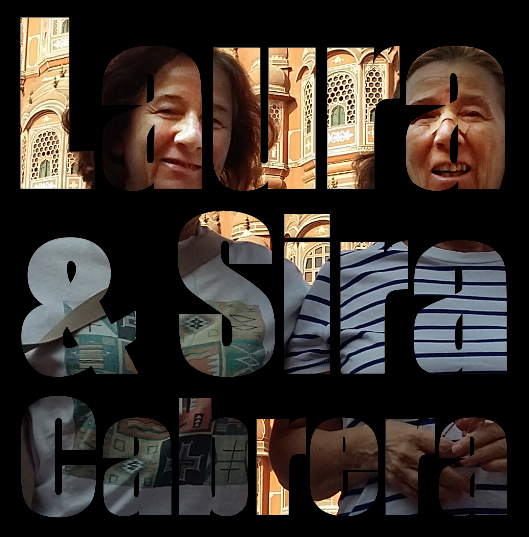
Laura Cabrera Díaz and Sira Cabrera Díaz
are born in Spain. They have a degree in Fine Arts from the Complutense University of Madrid. And there have been exhibitions of painting, sculpture and engraving. Since 2009, they have created 35 pieces of video art and have participated in more than 100 international video art festivals.
The video titles
Laura y Sira Cabrera (Spain) – Drifts in time , 2016. 7:34
Laura y Sira Cabrera (Spain) – The Body Screams, 2012, 7:36
Laura & Sira Cabrera (Spain) – Between Species, 2021, 9:16
Laura & Sira Cabrera (Spain) – Climate Spasms, 2020, 6:23
Laura & Sira Cabrera (Spain) – Monologue, 2020, 1:09
Laura & Sira Cabrera (Spain) – Woman Deleted II , 2015, 3:21
Laura & Sira Cabrera (Spain) – Be/Being , 2019, 7:53
Laura & Sira Cabrera (Spain) – Transmutations, 2018, 10:12
Laura & Sira Cabrera (Spain) – Indicios / Inkling, 2017, 6:59
Laura & Sira Cabrera (Spain) – Virulencia, 2020, 5:05









Albert Merino (Spain)
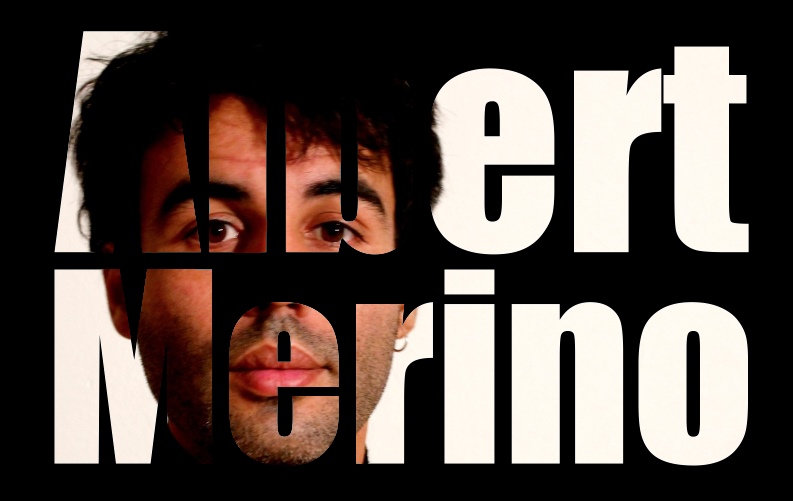
Albert Merino (Barcelona 1979) is a videoartist. He was graduated in Fine arts by the University of Barcelona and the Kunsthochshule Berlin Weißensee.
He lived in the cities of Barcelona, Berlin and Paris where he produced a series of video works portraying different aspects of the city and developing a broad imagi- nary, using the video as a tool to intervene on the ordinariness and to materialize imaginary scenes or Utopias. There uses a wide range of records, that go from the author’s pieces with one more character intimist one up to the videodance or the fictional documentary. He has being doing as well different video collaborations with different plastic artists or theatre groups as Fluchtkunst for the set designer Joachim Dam, the ‘Fura dels Baus’ or the performer Empara Roselló. From his carrer is worth highlighting the solo exhibitions ‘La esencia de la piedra’ (2013) espacio Trapezio Madrid, or ‚La sombra de Lot’ (2012) capilla del pronillo, Santander, and the solo projections in the Art Center, Arts Santa Mónica of Barce- lona (Flux 2011/2013) and the Ateneu Barcelonés.
His work is part of private art collections in several countries and has been pre- sented in Art Fairs as Estampa (2008/13), Los Angeles Art Fair (2011) or Beijing Art Fair (2013)
The video titles
Albert Merino (Spain) – The City and The Other, 2010, 3:09
Albert Merino (Spain) – Hidden Mud, 2010, 7:42
Albert Merino (Spain) – Les Bagneurs, 2010, 3:50
Albert Merino (Spain) – The White Rain, 2010, 8:10
Albert Merino (Spain) – The Trace of Salt, 2010, 7:38
Albert Merino (Spain) – Le Badinage, 2010, 6:32
Albert Merino (Spain) – Lot’s Shadow, 2011, 6:40
Albert Merino (Spain) – Compulsive Self-portrait, 2011,05:46
Albert Merino (Spain) – Memories of Detachment, 2021, 18:00
Albert Merino (Spain) – Bestiary, 2018, 5:10
Albert Merino (Spain) – The Present Condition, 2020, 18:18









Ausin Sáinz (Spain)
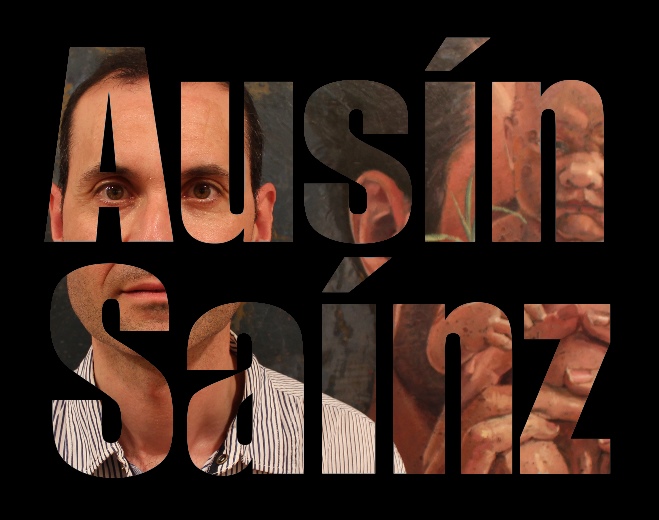
Ausín Sáinz – Trained at the Faculty of Fine Arts in Salamanca where he completed the specialties of Painting, Sculpture, Graphic Design and Audiovisual Communication, Ausín Sáinz has come a long way from his beginnings to his latest video creations and urban installations. His work, with its figurative and baroque aesthetics, disturbing and not at all accommodating, has been seen in numerous spaces both
in Spain and in other countries.
The video titles
Ausin Sainz (Spain) – Peaceful Protest,, 2020, 5:00
Ausin Sainz (Spain) – Walls, 2020, 8:17
Ausin Sainz (Spain) – Today, 2019, 5:00
Ausin Sainz (Spain) – Infecto, 2016, 2:55
Ausin Sainz (Spain) – Security, 2015, 06:25
Ausin Sainz (Spain) – Passport, 2015, 04:36
Ausin Sainz (Spain) – Fidelity, 2015, 6:12
Ausin Sainz (Spain) – Dictator,. 2014, 03:47
Ausin Sainz (Spain) – The Unborn, 2014, 4:43
Ausin Sáinz (Spain) – Spain Catalonia_Russia, 2022, 07:48









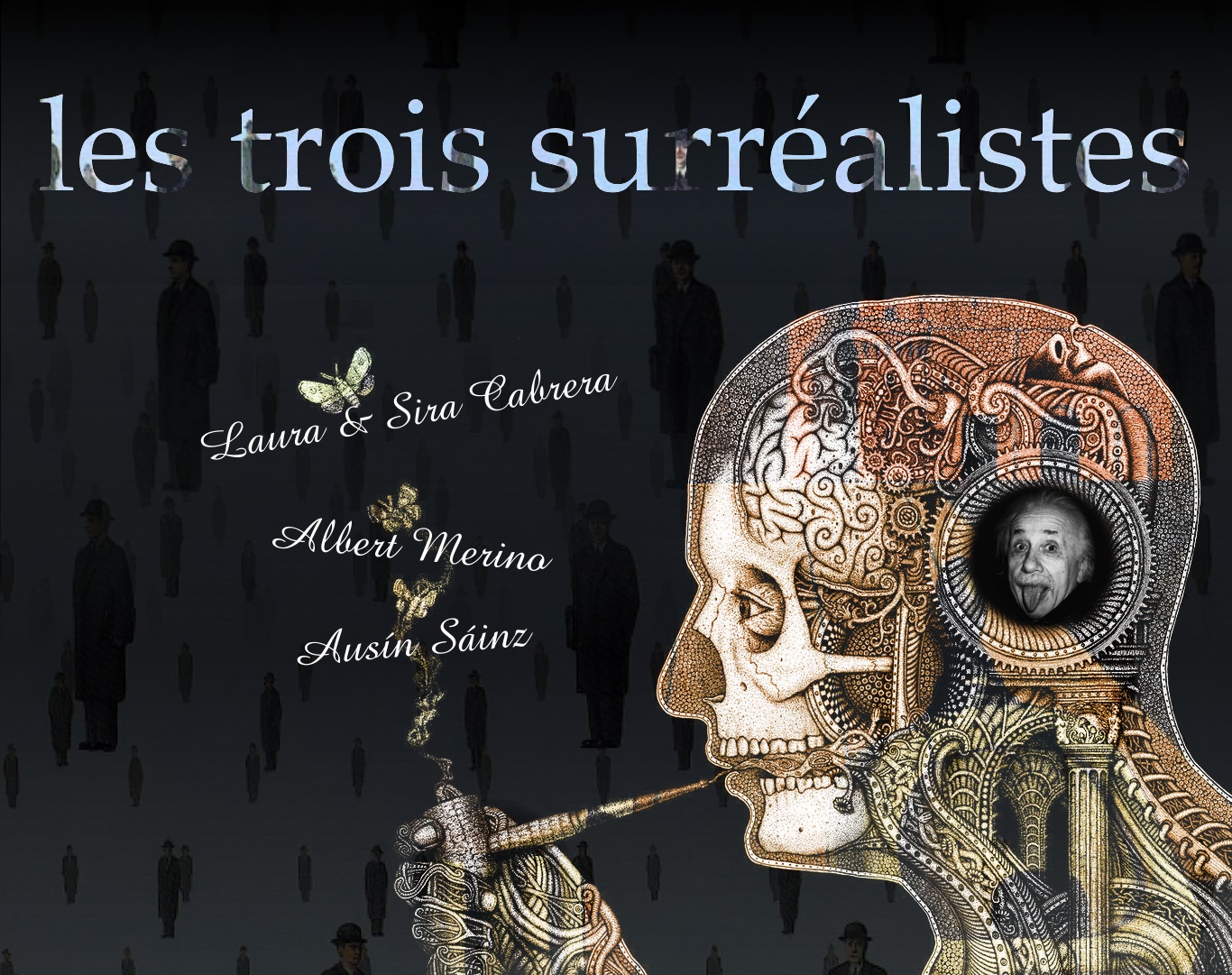
Credits

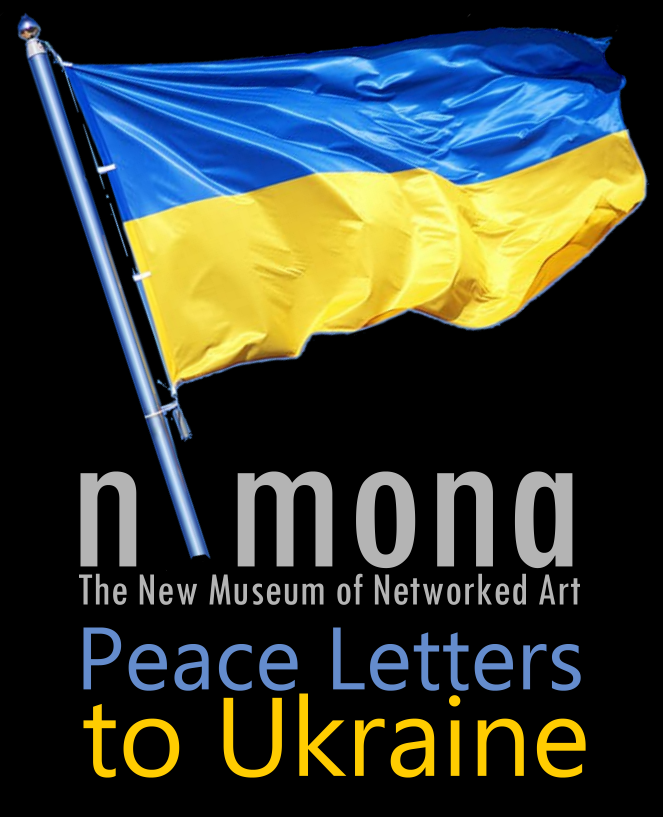
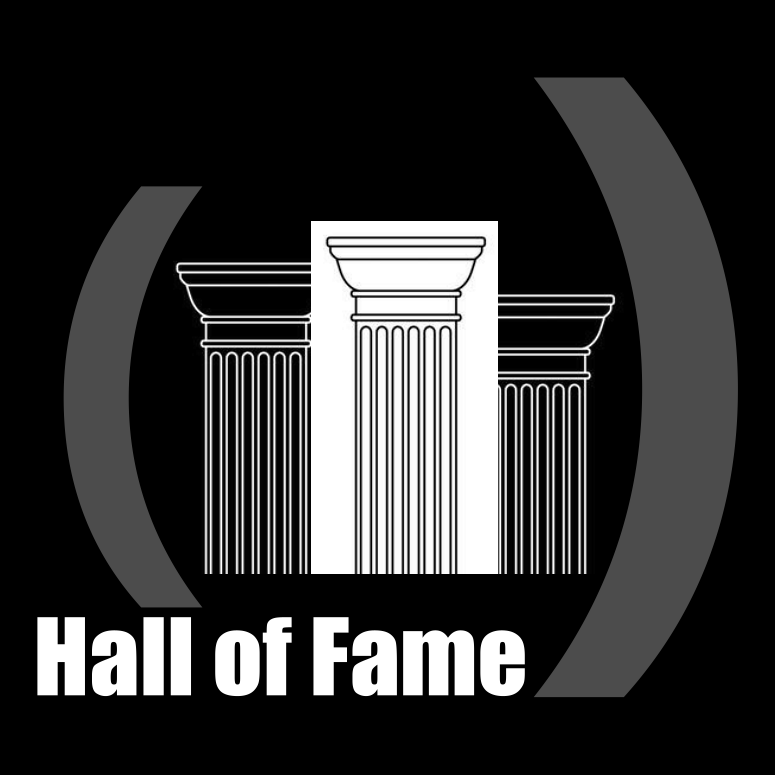
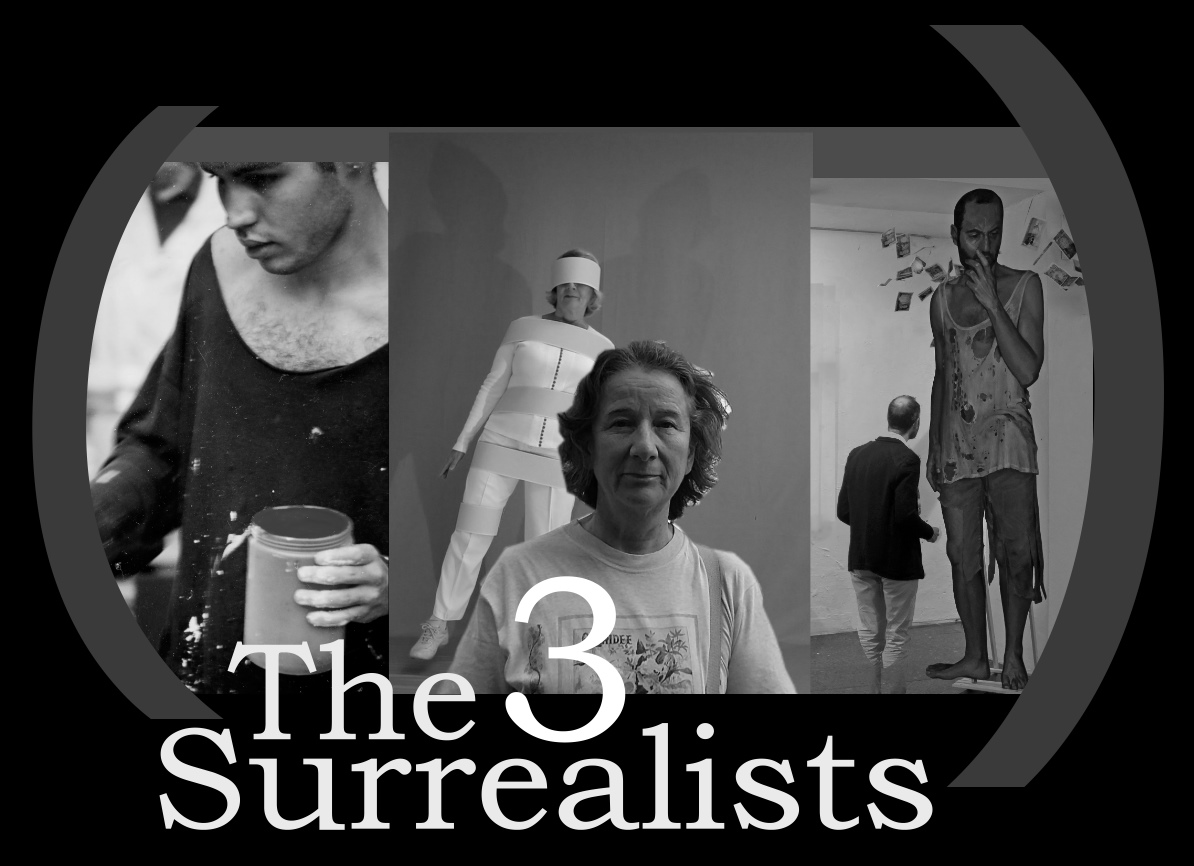
The show “The 3 Surrealists” is a collaboration / networked action between
THe New Museum od Networked Art,
the curator Wilfried Agricola de Cologne (Cologne/Germany) and the artists Laura & Sira Cabrera, Albert Merino and Ausín Saínz @ Alphabet Art Centre.
All texts, images and videos © by the artists/authors/curator or owners.
The Online/Offline Show – “The 3 Surrealists”, its concept, design and work out © 2023 by Agricola de Cologne/The New Museum of Networked Art.




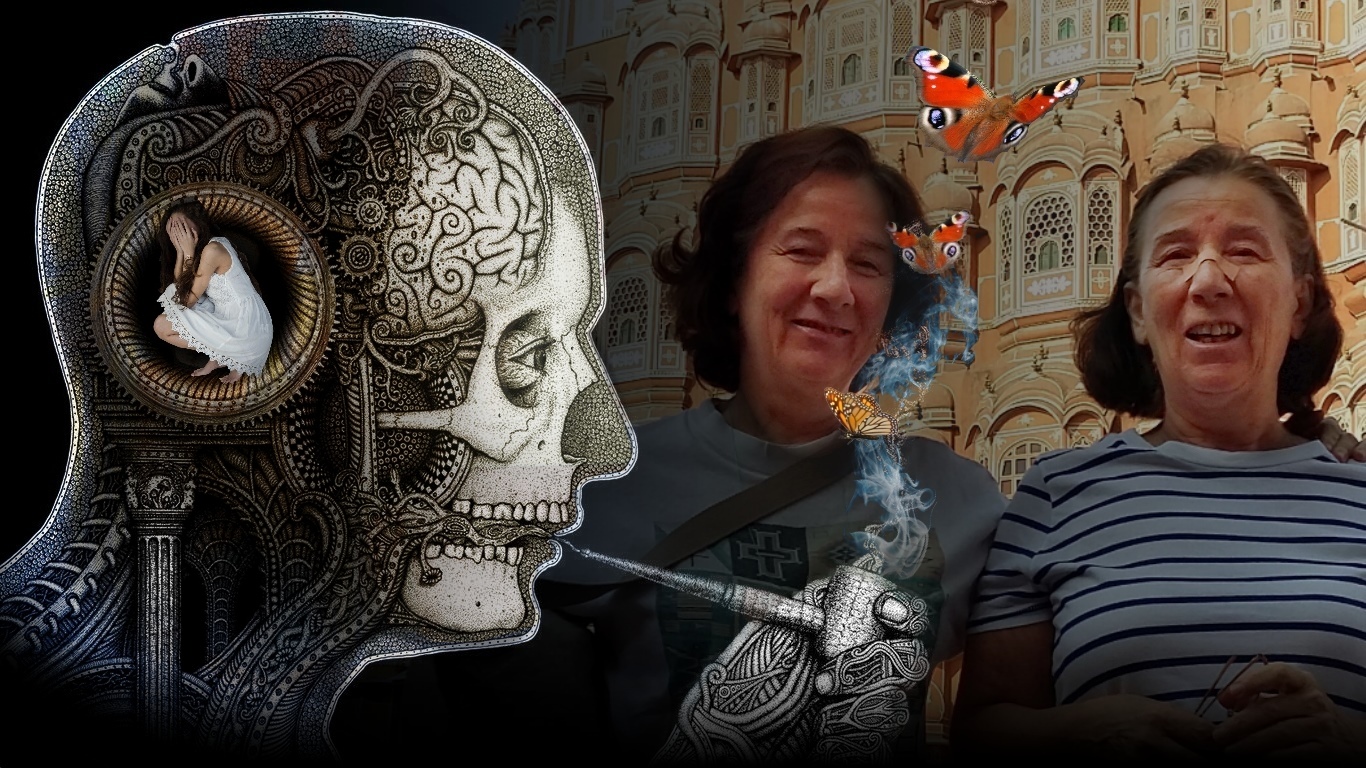

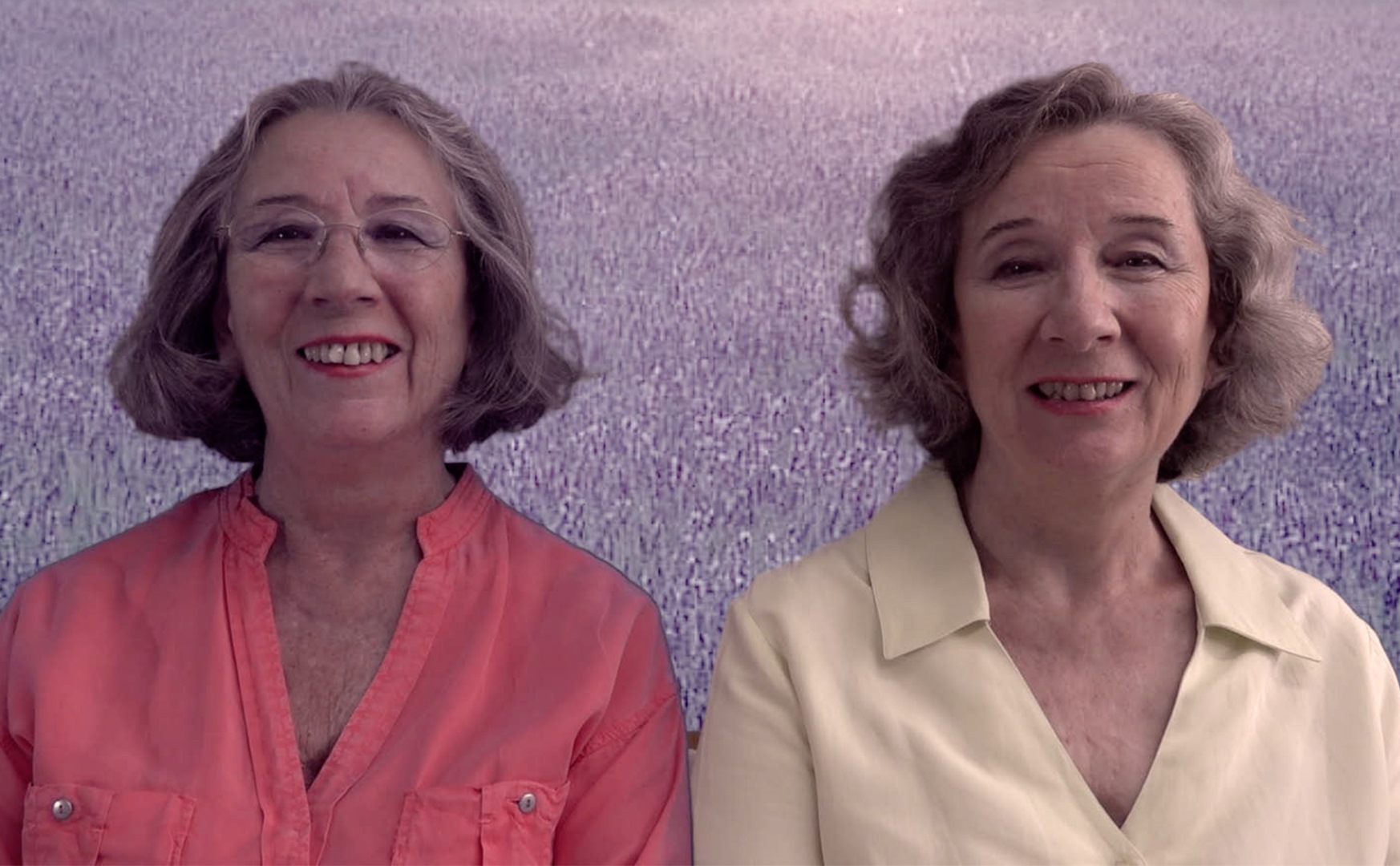
Laura Cabrera & Sira Cabrera
Spanish videographers
Interview: 10 questions
https://vip.nmartproject.net/cabrera-laura/
1. Tell me something about your life and training
We were born in 1947, in Cáceres, Spain. We are twins, we carry out various artistic activities: video creation, painting, drawing, sculpture, installation, engraving,
photomontage and scenography. First we studied Draftsmanship in Cáceres and Madrid. Sira obtained a Bachelor of Fine Arts degree from the Complutense University of Madrid in 1979, and she studied Audiovisual Communication at the CEV in Madrid, 1985-86. Laura lived in Buenos Aires for 12 years and studied at the Prilidiano Pueyrredón School of Fine Arts Teachers in two specialties, Sculpture 1972-76 and Engraving 1977-79, and at the Ernesto de La Cárcova Superior School of Fine Arts in Sculpture 1977-1981.
When she returned to Madrid, she did her Bachelor’s Thesis at the Complutense University of Madrid, 1984. We both studied four doctorate courses, 1984-86, in this university. We were Teachers of Plastic Expression in University School Teaching and Secondary Education Institutes in Madrid. And we did painting exhibitions for 25 years. Now we only do video art together since 2009.
2. When, how and why did you start shooting?
At a meeting of friends we filmed ourselves playing and we really liked it very much. Starting in 2009, we took recording and editing classes. And we continue making videos together because we feel free and joyful to express ourselves artistically; the video makes us live intensely. It is a very complete art, it handles time, movement, sound, images evolving…
3. What kind of themes do your films have?
With video art we reflect on life today, and we come up with themes such as gender and class inequality, crying for the destruction of Nature, humans as predators, the erroneous culture-nature opposition, climate change, poverty, the dance of life, dream, time, madness and death.
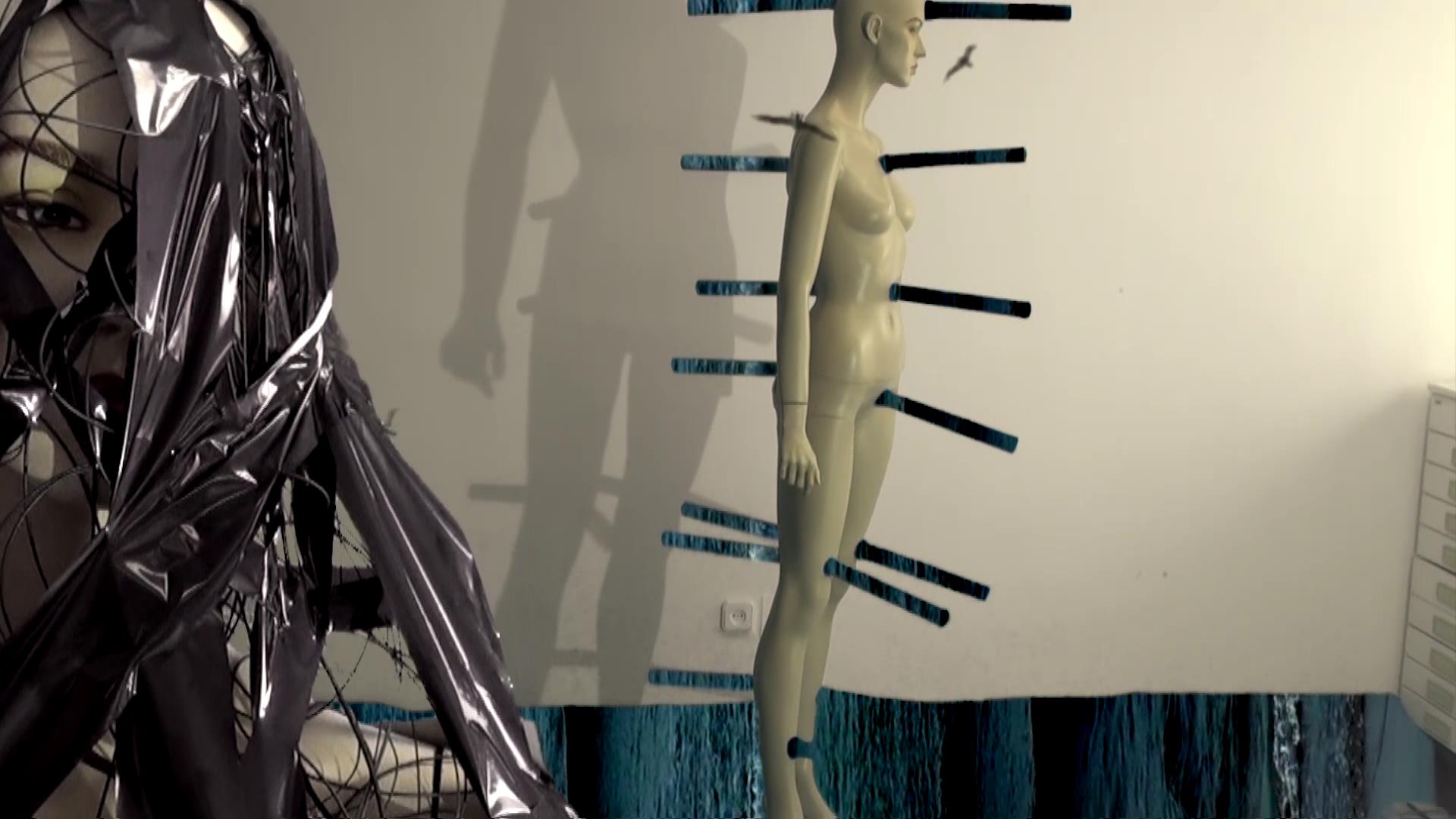
Laura y Sira Cabrera video – The Body Screams
4. How do you develop your films, do you follow certain principles, styles, etc.?
The images of our videos are created by us, we do not make appropriations. And the technique is not as important to us as being able to express what we need. The creative process usually goes like this: together, in the field, we brainstorm ideas, writing down each one and drawing the first sketches of images. This stage is the most enjoyable, we invent with complete freedom, we laugh at nonsense and we encourage each other. Later, in other meetings, we form a central idea and choose and imagine scenes to represent it. We are influenced by what we are experiencing, individually and by what is happening in the world. Later, that central theme grows and enriches itself with what we read, live and document. We manually create models, spaces, volumetric figures, drawings… And we film the actions. Sometimes we choose other people as protagonists or ourselves.
However, the editing is done only by Laura, but with the images filmed by both and those from the archive that we have filmed on trips and at any interesting moment. In the end, we visualize and correct the video together.
5. Tell us something about the technical equipment you use.
We use two Sony Full HD and HDR 4K video cameras, and we edit on the MAC, with Final Cut Pro X program. We use the double Chroma technique a lot to change backgrounds and images. We have installed a recording workshop with a green chromakey background and floor. We use solar lighting, and several spotlights.
6. Today, digital technology also dominates video as a medium. How is the digital aspect entering the creation of your videos, technologically and/or conceptually?
We want the technique not to be important in our videos but to express the main idea or theme. The content must be essential, and the technique be subordinate. Now reality is increasingly virtual, the human being is ubiquitous, space and time vanish, the transparency of being appears, the public and the private, the individual and the collective, the interior and the exterior, are being erased, and people feel anonymous and in solitude in a globalized world. It is the century of the self, a subject of consumption, a predatory being with nature. Now we are looking for images to express these experiences of the current human being, a human being that is also digital.
7. How do you finance your films?
We work for the love of art, we find life more intense and interesting by making videos. We do not seek funding and we do not earn income from them. We only send videos to cultural festivals that do not charge us nor the public. Video art today is not economically valued, only the videos of very famous artists are.

Laura y Sira Cabrera video – Drifts in Time/
8. Do you work individually as a video artist/filmmaker or do you work as a team? If you have experience in both, what is the difference, which do you prefer?
We both work together. However, only Laura does the editing. The protagonists of our videos are people we choose and sometimes ourselves. The sound is from musicians, who generously give it to us. We prefer to work as a team, together.
9. Who or what has a lasting influence on your video making?
We are influenced by all kinds of events, our experiences, social changes, current affairs, contemporary art, poetry, plastic arts, theater, music, cinema, flamenco, magical realism, hallucinogenic realism… The black paintings of Goya, films by Buñuel and Almodovar, art by Francis Bacon and Picasso, videos by Marina Núñez, Albert Merino and Bill Viola, dance by Nacho Duato and Pina Bausch,
novels by Juan Rulfo and Kafka, Neolithic art, poetry-essays by Anne Carson, Japanese prints, music by György Ligetti, performances by Marina Abramovich, the voice of María Callas, art by Louise Bourgeois, Kantor’s theatre…
10. What are your future plans or dreams as film/video makers?
Our plans are to continue doing what we do, investigating the technique and expressiveness of this art to transmit our experiences. Travel filming all over the countries, get to know different cultures, encourage our curiosity and expand our archive of images. And have more space and technical means to film.
11. Can your works be seen online as well as on the CologneOFF platform? Where? List some links and resources.
On our website there are trailers of our videos:
https://lauracabreraysiracabrera.wordpress.com
And also the works prior to 2009 in:
https://www.lauracabreradiaz.blogspot.com/
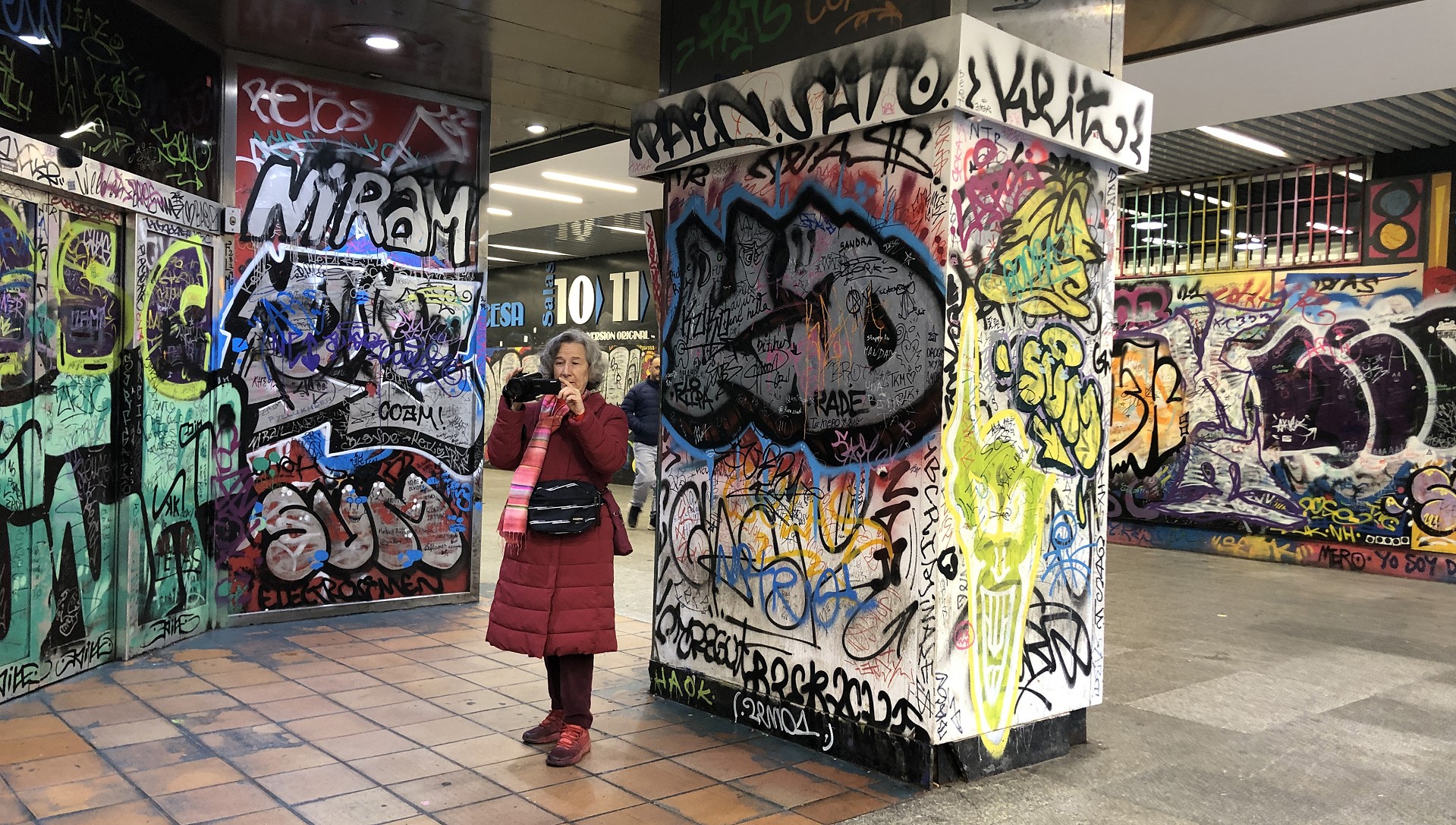
Laura y Sira Cabrera video
Laura Cabrera & Sira Cabrera
videastas españolas
Entrevista: 10 preguntas
1. Cuéntenme algo sobre su(??) vida y formación
Nacimos en 1947, en Cáceres, España. Somos gemelas, realizamos varias actividades artísticas: videocreación, pintura, dibujo, escultura, instalación, grabado, fotomontaje y realización escenográfica.
Primero estudiamos Maestría de Delineante en Cáceres y Madrid. Sira obtuvo la Licenciatura en Bellas Artes en la Universidad Complutense de Madrid en 1979, y estudió Comunicación Audiovisual en el CEV en Madrid, 1985-86. Laura vivió 12 años en Buenos Aires y estudió en la Escuela del Profesorado de Bellas Artes Prilidiano Pueyrredón en dos especialidades, Escultura 1972-76 y Grabado 1977-79, y en la Superior de Bellas Artes Ernesto de La Cárcova en Escultura 1977-1981. Al volver a Madrid hizo la Tesina de Licenciatura en La Universidad Complutense de Madrid, 1984. Donde ambas estudiamos cuatro cursos de doctorado ,1984-86.
Fuimos Profesoras de Expresión Plástica en Magisterio Universitario e Institutos de Educación Secundaria en Madrid. E hicimos exposiciones de pintura durante 25 años. Ahora hacemos solamente videoarte juntas desde 2009.
2. ¿Cuándo, cómo y por qué empezasteis a rodar?
En una reunión de amigos nos filmamos jugando y nos gustó muchísimo. A partir de 2009, tomamos clases de grabación y edición. Y seguimos haciendo videos juntas porque nos sentimos libres y gozosas para expresarnos artísticamente; el vídeo nos hace vivir intensamente. Es un arte muy completo, se maneja el tiempo, el movimiento, el sonido, las imágenes evolucionando…
3. ¿Qué tipo de temas tienen vuestras películas?
Con el videoarte reflexionamos sobre la vida de hoy, y nos salen temas como la desigualdad de géneros y clases sociales, el llanto por la destrucción de la Naturaleza, los humanos como depredadores, la errónea oposición cultura-naturaleza, el cambio climático, la pobreza, la danza de la vida, el sueño, el tiempo, la locura y la muerte.
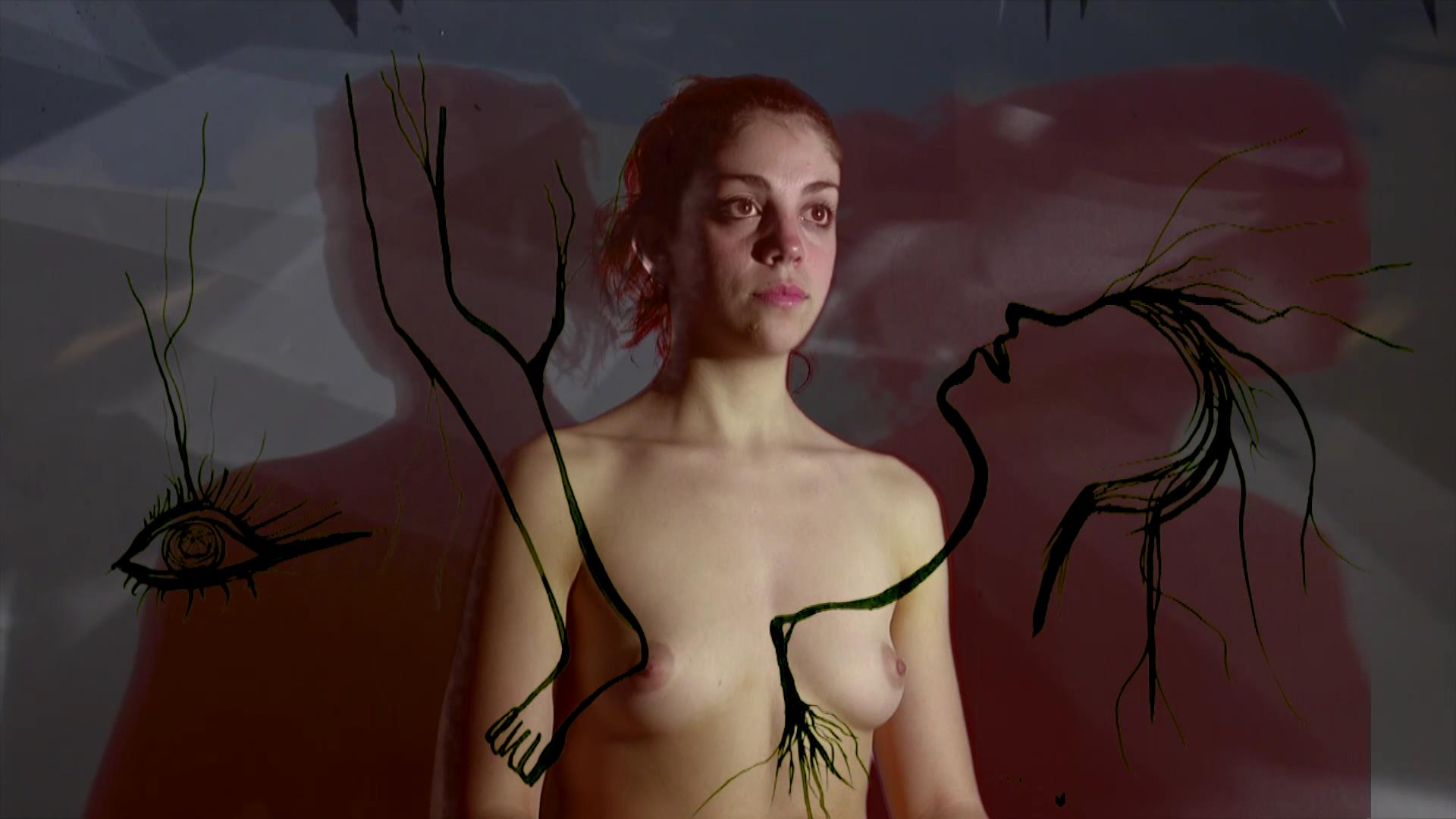
Laura y Sira Cabrera video – Drifts in Time
4. ¿Cómo desarrolláis vuestras películas, seguís ciertos principios, estilos, etc.?
Las imágenes de nuestros vídeos las creamos nosotras, no hacemos apropiaciones. Y la técnica no nos resulta tan importante como poder expresar nuestras ideas. El proceso creativo suele ser así: juntas, en el campo hacemos una lluvia de ideas, que vamos anotando cada una y dibujando los primeros bocetos de imágenes. Esta etapa es la más gozosa, inventamos con total libertad, nos reímos con los disparates y nos incentivamos mutuamente. Después en otras reuniones vamos formando una idea central y eligiendo e imaginando escenas para representarla. Nos influye lo que estamos viviendo, individualmente y lo que sucede en el mundo. Después, ese tema central va creciendo y enriqueciéndose con lo que leemos, vivimos y nos documentamos. Creamos manualmente maquetas, espacios, figuras volumétricas, dibujos… Y filmamos las acciones. A veces elegimos otras personas como protagonistas o a nosotras mismas. Sin embargo el montaje lo hace sólo Laura, pero con las imágenes filmadas por ambas y las del archivo que hemos filmado en viajes y en cualquier momento interesante. Al final, visualizamos y corregimos el vídeo juntas.
5. Contadnos algo sobre el equipo técnico que utilizáis(?).
Utilizamos dos cámaras vídeo Sony Full HD y HDR 4K, y montamos en el ordenador MAC, con el programa de edicción Final Cut Pro X. Usamos mucho la técnica doble Chroma para cambiar fondos e imágenes. Tenemos instalado un taller de grabación con fondo y suelo verde chromakey. Usamos iluminación solar, y varios focos.
6. Actualmente, la tecnología digital domina también el video como medio. ¿De qué manera está entrando el aspecto digital en la creación de vuestros videos, tecnológica y/o conceptualmente?
Queremos que la técnica no sea importante en nuestros videos sino que expresen la idea o el tema principal. El contenido debe ser esencial, y la técnica estar subordinada. Ahora la realidad es cada vez más virtual, el ser humano es ubicuo, el espacio y el tiempo se desvanecen, aparece la transparencia del ser, se va borrando lo público y lo privado, lo individual y lo colectivo, lo interior y lo exterior, y las personas se sienten anónimas y en soledad en un mundo globalizado. Es el siglo del yo, un sujeto de consumo, un ser depredador con la naturaleza. Ahora buscamos imágenes para expresar estas experiencias del ser humano actual, un ser humano también digital.
7. ¿Cómo financiáis vuestras películas?
Trabajamos por amor al arte, la vida nos parece más intensa e interesante haciendo video-arte. No buscamos financiación y no obtenemos ingresos con ellos. Sólo enviamos videos a festivales culturales que no nos cobran a nosotras ni al público. El video-arte hoy no se valora económicamente, solo los videos de artistas muy famosos.
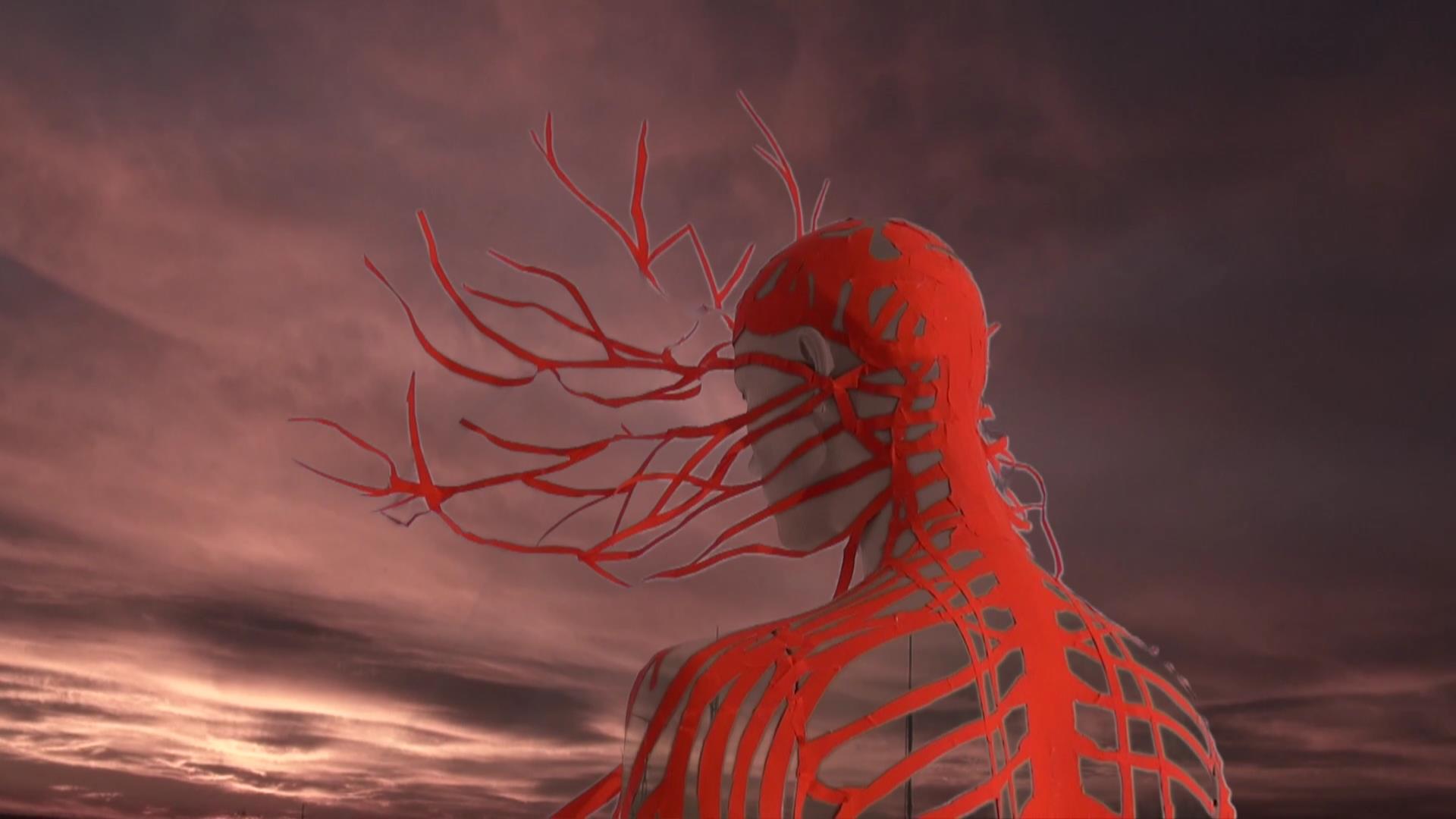
Laura y Sira Cabrera video – Transmutations
8. ¿Trabajáis individualmente como videoartista/cineasta o trabajáis en equipo? Si tienéis experiencia en ambos, cual es la diferencia, cual preferís?
Trabajamos juntas las dos. Y en el montaje solamente Laura. Los protagonistas de nuestros vídeos, son personas que elegimos y otras veces nosotras mismas. El sonido es de músicos, que generosamente nos la ceden. Preferimos trabajar en equipo, juntas las dos.
9. ¿Quién o qué tiene una influencia duradera en vuestra realización videográfica?
Nos influye todo tipo de eventos, nuestras vivencias, los cambios sociales, la actualidad, el arte contemporáneo, la poesía, artes plásticas, teatro, música, cine, el flamenco, el realismo mágico, el realismo alucinógeno… Las pinturas negras de Goya, cine de Buñuel y Almodovar, arte de Francis Bacon y Picasso, vídeos de Marina Núñez, Albert Merino y Bill Viola, la danza de Nacho Duato y Pina Bausch, novelas de Juan Rulfo y Kafka, el arte Neolítico, poesía-ensayo de Anne Carson, las estampas japonesas, música de György Ligetti, performances de Marina Abramovich, la voz de María Callas, el arte de Louise Bourgeois, el teatro de Kantor…
10. ¿Cuáles son vuestros planes o sueños futuros como realizadoras de cine/video?
Nuestros planes son seguir haciendo lo que hacemos, investigando la técnica y la expresividad de este arte para transmitir nuestras vivencias. Viajar filmando por todos los países, conocer culturas diferentes, ampliar nuestra experiencia y conocimientos e ir aumentando nuestras imágenes en el archivo, para futuros vídeos. Y tener más espacio y medios técnicos para filmar.
11. ¿Se pueden ver obras vuestras en línea además de en la plataforma CologneOFF? ¿Dónde? Enumere algunos enlaces y recursos.
En nuestra web hay tráiler de nuestros vídeos:
https://lauracabreraysiracabrera.wordpress.com
Y también los trabajos anteriores a 2009 en:
https://www.lauracabreradiaz.blogspot.com/
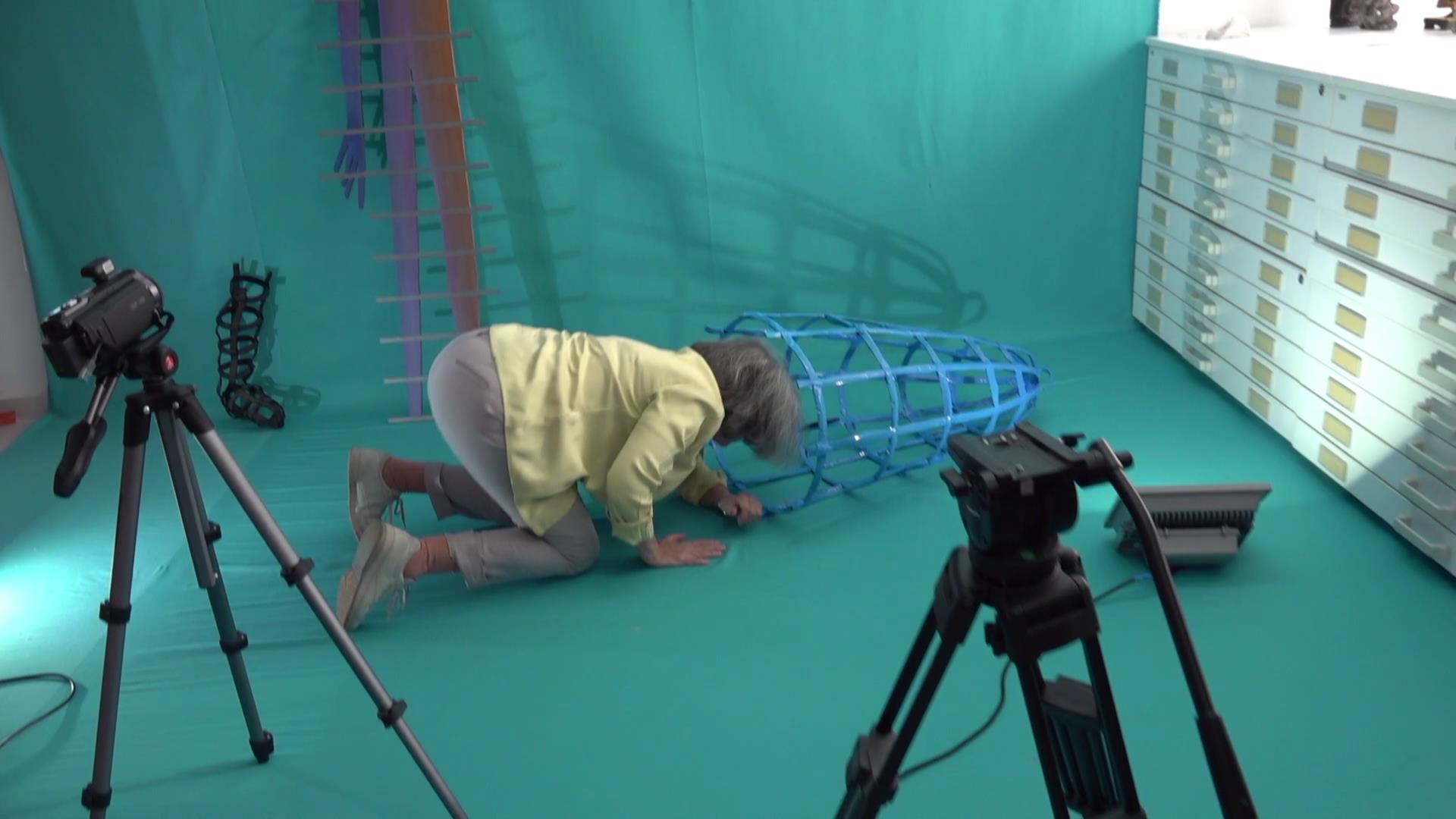
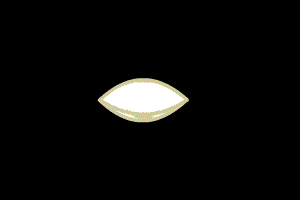 Click to view the video
Click to view the videoMeet Laura Cabrera & Sira Cabrera @ their studio
The way of working together is in several stages, the two sisters meet in a nearby field in Madrid and we brainstorm ideas that we write down each one in her notebook, also drawing the first sketches of images. This stage is the most enjoyable, we invent with complete freedom, we laugh at nonsense and we encourage each other. Later, in other meetings, we form a central idea and choose and imagine scenes to represent it. We are influenced by what we are experiencing, individually and by what is happening in the world. Then, individually, this theme grows and enriches itself with what we read and live, cinema, exhibitions, theater, poetry… We get together and continue contributing. We manually create models, spaces, figures, drawings, chromas and we film the actions with ourselves as protagonists and with other people. All together. However, the montage is done only by Laura, but with the images filmed by both, whether they are the special ones for that video or the archival ones that we have each filmed separately on trips. And in the end, we visualize it and correct the video together.
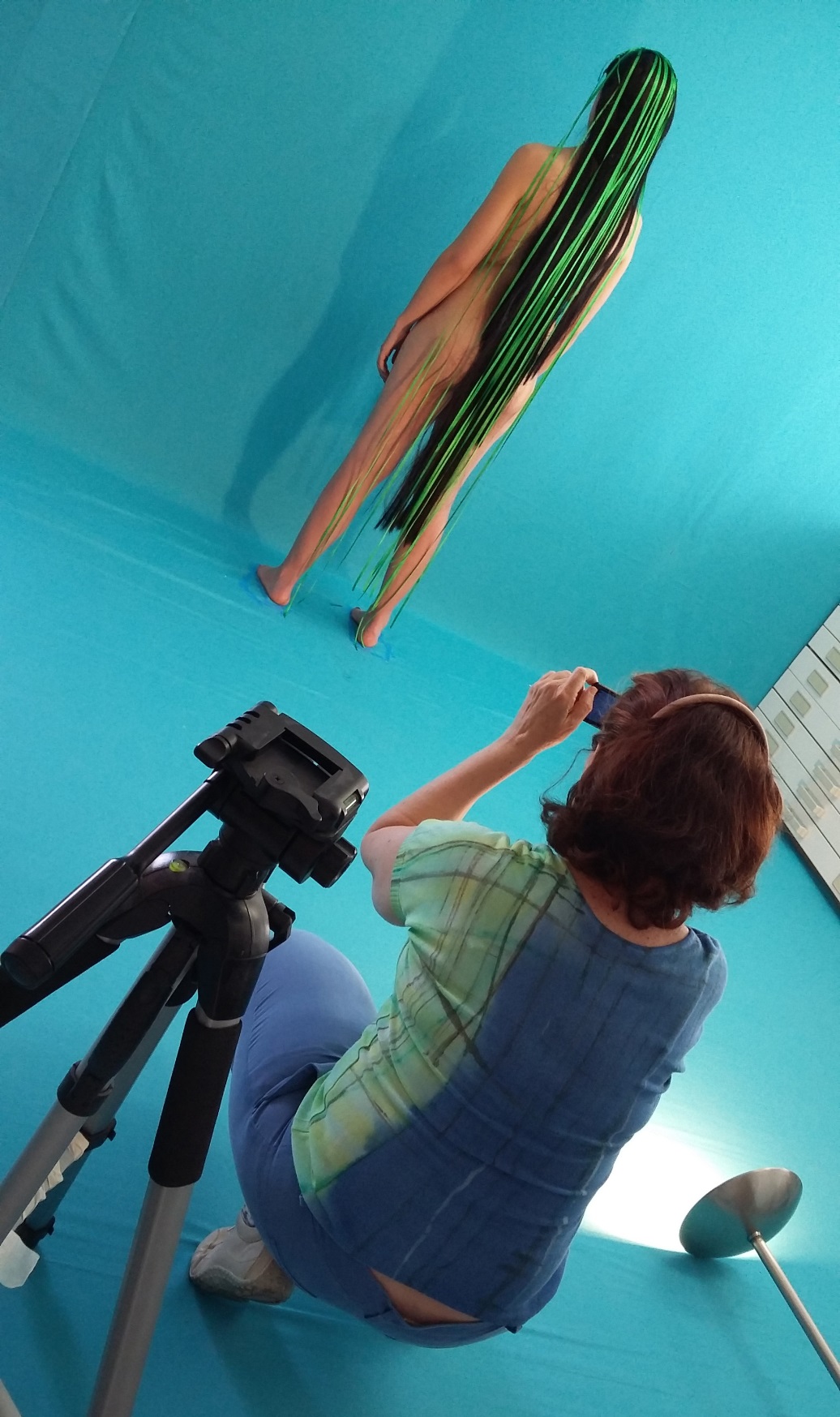
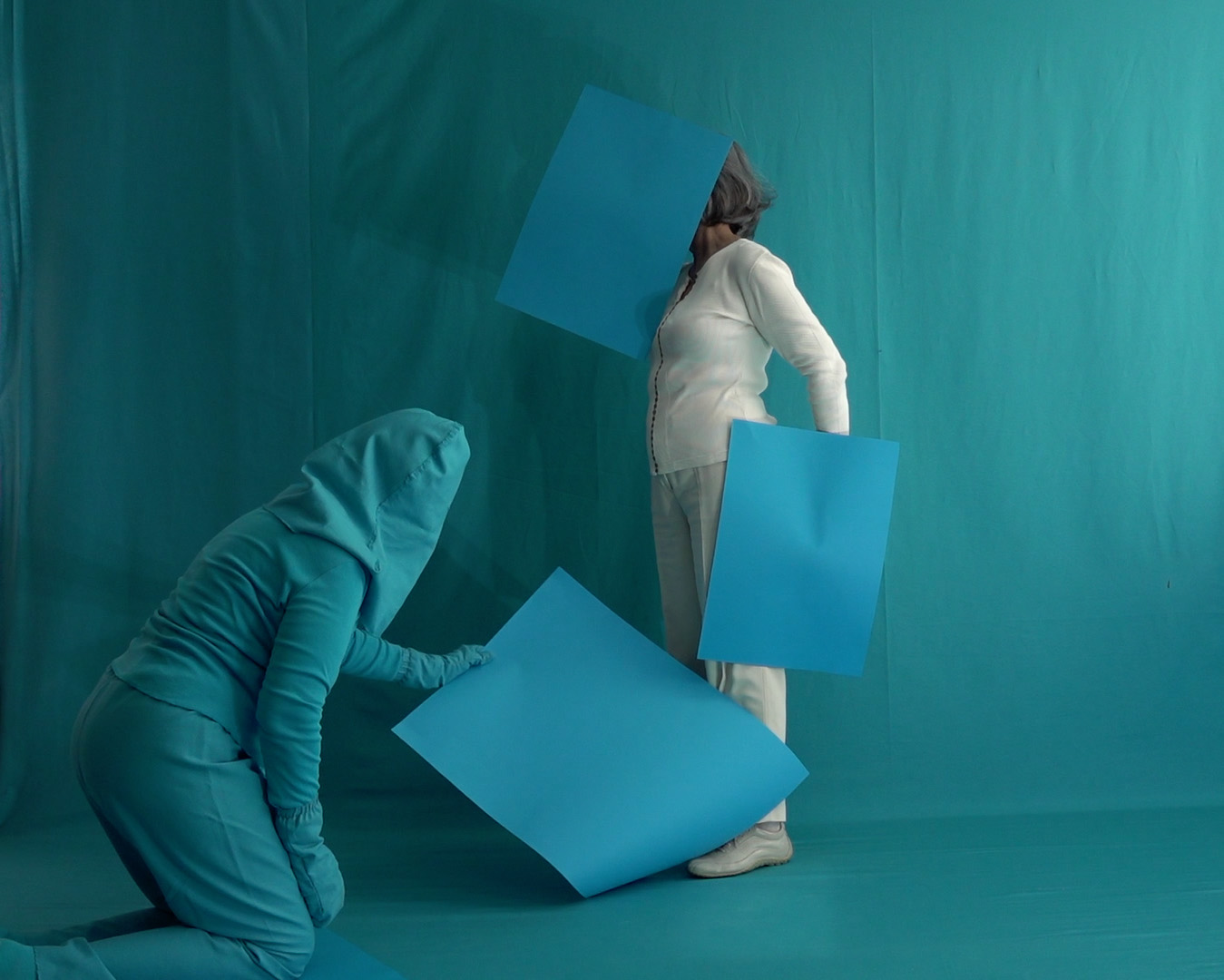
Laura y Sira Cabrera
Laura Cabrera Díaz and Sira Cabrera Díaz
(Cáceres, April 28, 1947)
are two Spanish twin sisters who carry out artistic activities: fiction, documentary and mixed video creation; painting, drawing, sculpture, installation, engraving, photomontage and set production.
https://lauraysiracabrera.wordpress.com
https://www.lauracabreradiaz.blogspot.com/
Spanish Wikipedia: Laura Cabrera and Sira Cabrera
https://es.wikipedia.org/wiki/Laura_Cabrera_y_Sira_Cabrera
1- TRAINING
Sira obtained a Bachelor of Fine Arts from the Complutense University of Madrid in 1979. And she studied Audiovisual Communication at the CEV in Madrid 1985-86.
Laura studied in Buenos Aires at the Prilidiano Pueyrredón Faculty of Fine Arts School in two specialties: Sculpture in 1972-76 and Engraving in 1977-79, and at the Ernesto de La
Cárcova Superior School of Fine Arts: Sculpture, 1977-1981. She studied in the workshops of the sculptor Aurelio Macchi, 1978-80, and the painter José Moraña 1981.
When she returned to Madrid she did her thesis and obtained a degree from the Faculty of Fine Arts of the Complutense University of Madrid 1984. Both studied together for four doctoral courses, 1984-86.
They expanded their studies by taking 19 monographic courses on engraving, set design, installation, performance, philosophy, music, contemporary art, theatre, video creation and editing…, at the Reina Sofía Museum, Menéndez Pelayo University in Santander, Casa Encendida in Madrid , La Tabacalera, UCM in El Escorial, Fundación Mafre in Madrid, and in the Contemporary Art Workshops and Courses of the Círculo de Bellas Artes in Madrid.
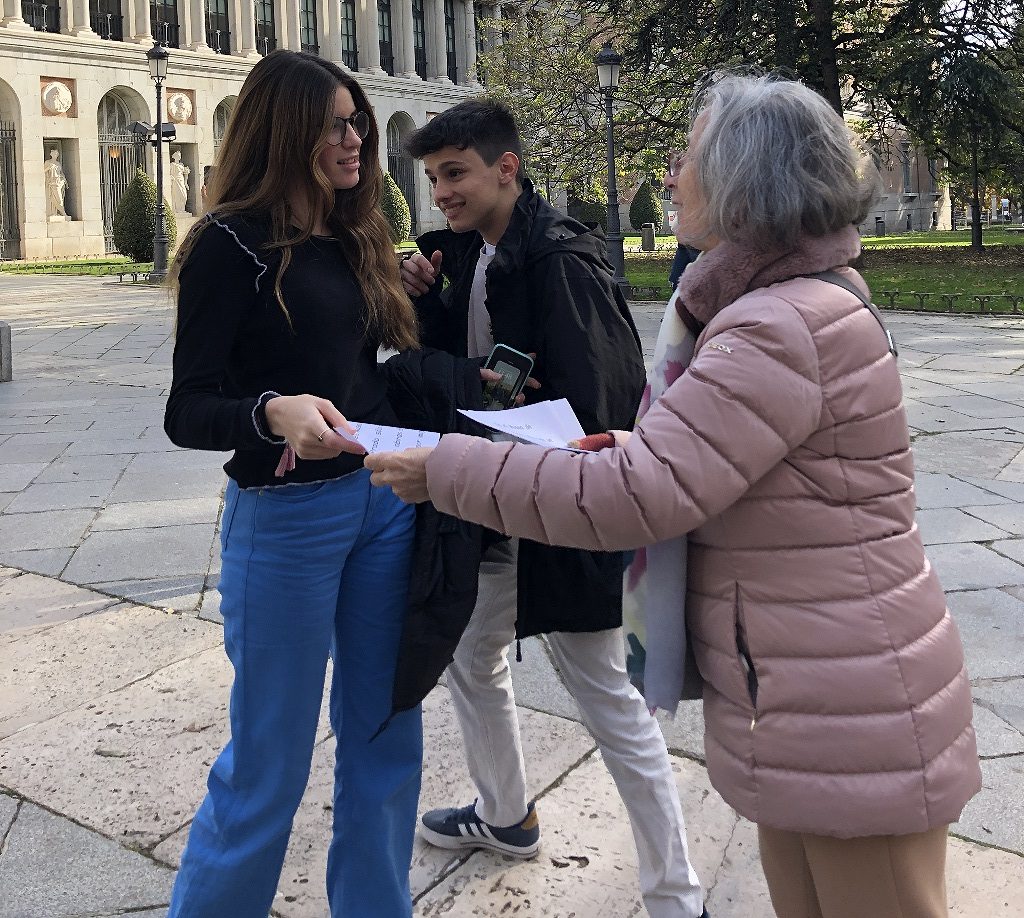
Laura y Sira Cabrera
2- TEACHING
They have dedicated themselves to the teaching of Plastic Expression, Sira as Professor of Technical and Artistic Drawing in Secondary and Baccalaureate Institutes of the Ministry of Education of Spain, 1982-2007. And Laura was a teacher at the Plastic Arts Workshops in Cultural Centers of the Municipal Councils of Moratalaz, Arganzuela and Vicálvaro, Madrid, 1986-89.
And she at the ESCUNI University School of Teaching, attached to the Complutense University of Madrid, 1989-2012, as Professor of Didactics of Plastic Expression, and Theater Plastic Workshop.
At the same time they held painting exhibitions in galleries and institutions in Spain and Europe.
3- FILMOGRAPHY:
41 video-art in co-production, by Laura & Sira Cabrera:
-Alterations. 7’28” (2022). – Tune in with nature. 9’43” (2022). -interspecies. 9’16” (2021).
-Virulence. 5’05” (2020). -Monologue. 1’09” (2020). -Climate spasms. 6’23” (2020).
-Madrid, Christmas, Gran Vía. 8’23” (2020). -Concept and techniques. 5’53” (2019). –
Climatic disorder. 4’17” (2019). – Climatic dementia. 3’51” (2019) -Be. 7’53” (2019).
-Transmutations. 10’12” (2018). -The body screams. 7’36” (2017). -Indications. 6’59”
(2017). -Third elections. 1′ (2016). -Drifts in time. 7’35” (2016). -Poem to Riotinto. 7’58”
(2016). -Woman erased, II. 3’21” (2015). -Digital reverie. 7’50” (2015). -Approaches, III.
5’59” (2015). -Irreconcilable, II. 3’49” (2014). -Dream. 7’06” (2013). – ‘Thecno-Nature. 9’33”
(2012). -Disinhabit. 3’23” (3012). – Revolution 0. 6’02” (2012). -Revolver I. 2’13” (2012). –
Revolutionary. 14’12” (2011). -Book Absences. 3’47” (2011). -Travel Book. 3’52” (2011).
-Ritual to the trees. 6’04” (2011). -Stir. 5.39” (2011). – scramble 3’57” (2011). -Red ribbon.
5’48” (2010). -Cry-Laughter. 9’51” (2010). -CaperuZita. 4’25” (2009). -Tree-Woman-
Thread. 4’25” (2009). -Tree-Wind. 4’16” (2009). -Tree-Human. 10’54” (2009). -Self-portrait.
8’48” (2009). -Eros. 5’40” (2005).
4- STATEMENT
Our interest is artistic creation, in general. Making video art is irresistible, it is, perhaps, the richest, most direct, autonomous and free means of creation. It allows you to express
yourself and experiment with images, adding movement, the dimension of time and sound, without needing a narration. To express a central idea, we make drawings, performances, costumes, models, spaces and installations. Real, not virtual. And by mixing the filmed images, improbable figures and paradoxical, real and surreal spaces emerge. Perhaps as a hallucinogenic realism. With video art we reflect on life today, such as class and gender inequality, crying for the destruction of Nature, humans as predators, the mistaken culturenature opposition, the dance of life, sleep, time , madness and death.
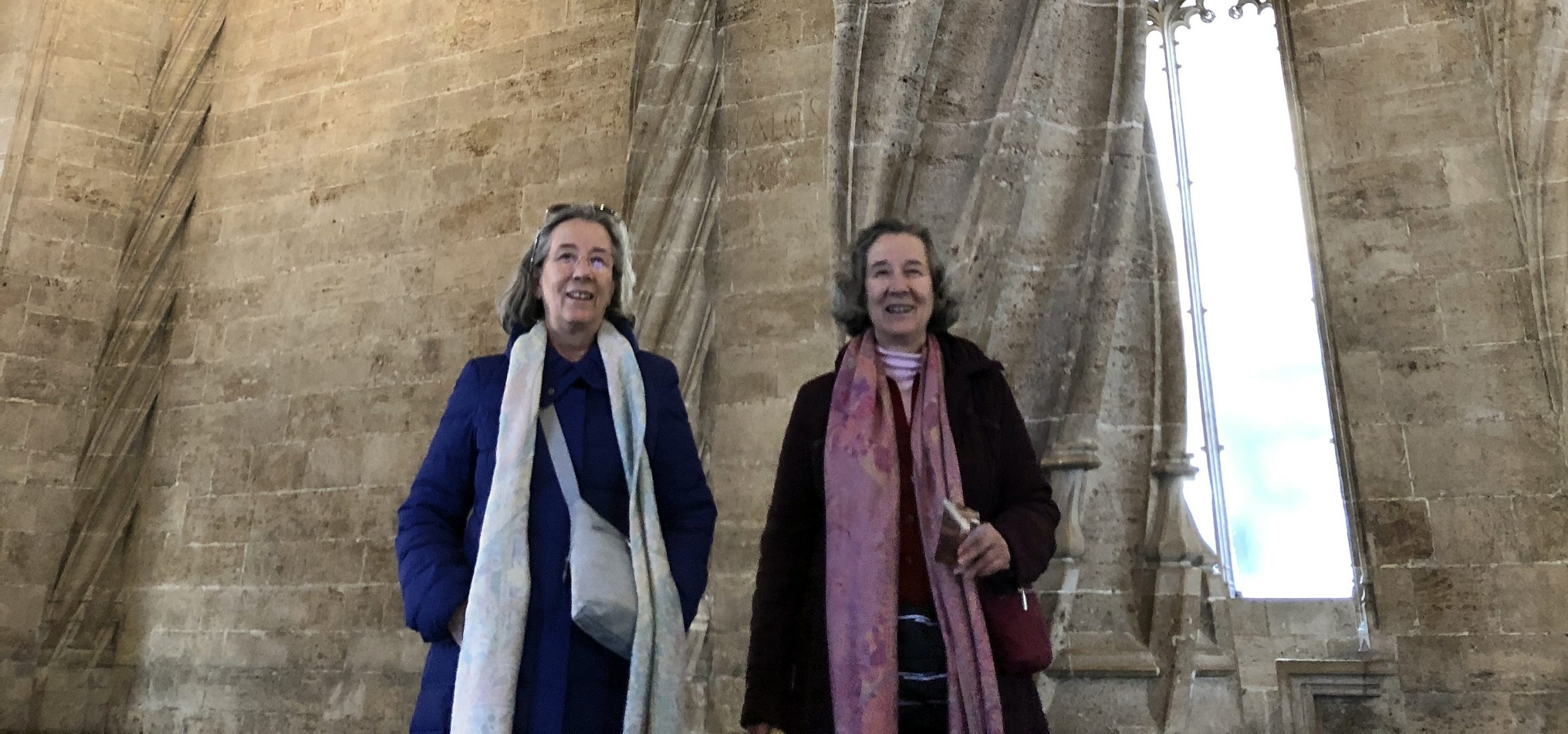
Laura y Sira Cabrera
5- CO-ADDRESS
The way of working together is in several stages, the two sisters meet in a nearby field in Madrid and we brainstorm ideas that we write down each one in her notebook, also drawing the first sketches of images. This stage is the most enjoyable, we invent with complete freedom, we laugh at nonsense and we encourage each other. Later, in other meetings, we form a central idea and choose and imagine scenes to represent it. We are influenced by what we are experiencing, individually and by what is happening in the world. Then, individually, this theme grows and enriches itself with what we read and live, cinema, exhibitions, theater, poetry… We get together and continue contributing. We manually create models, spaces, figures, drawings, chromas and we film the actions with ourselves as protagonists and with other people. All together. However, the montage is done only by Laura, but with the images filmed by both, whether they are the special ones for that video or the archival ones that we have each filmed separately on trips. And in the end, we visualize it and correct the video together.
6- VIDEO CREATION FESTIVALS
The videographic works have been carried out together as co-directors, they have specialized in video-art, since 2009 when they combine symbolism and pictorial dynamics, within the languages of contemporary art at a crossroads of discourses and disciplines.
Together with the filmed image, drawing, sculpture, installation, performance and writing are mixed. They have obtained recognition, their videos having been screened in more than 150 international festivals, some of them are:
– V KRONOS ART BCN, at the Palau Robert of the Generalitat de Catalunya, 17-25 sept. 2022
– PEACE LETTERs u-7, from Los Angeles to UKANIE, at Torrance Art Museum. U-6 from THESSALONIKI Municipal Art Gallery Greece, U-8 from VisArt Center ROCKVILLE Massachusetts USA. Curated by Wilfried Agricola from Cologne, Germany, 2022.
– Festival INHERITANCE, Northern Visions & Latest TV. The Festival of the 4 seasons, SPRING. It was broadcast on NV TV Belfast, on Sheffield Live! and KM TV in Kent. England, 22-30 April 2022.
– Torrance Art Museum, ART SHOW L.A. Memorial to the future, Los Angeles 2022. – LES INSTANTS Vidèo Poétiques Friche la Belle de Mai Marseille France 2014-15-16-17- 18-20-21
– ALC Videoart, MACA auditorium Contemporary Museum Alicante, and Cigarreras 2021- 22 collection.
– FAENZA, Jorge Eliécer Gaitán Municipal Theater and Bogotá Theater of Univ. Bogotá 2018-20-21.
– VIDEOGRAM, Itinerancy of INTERMEDIATIONS, Santa Fé Gallery, Bogotá. 2021.
– RENCONTRES TRAVERSE, ABATTOIRS museum and Le Cratère cinema. Toulouse 2020.
-TIME is Love, Cruce, Arte y Pensamiento Contemporáneo, Madrid 2020.
– NewMediaFest, 4y7 -WOW-IAM- Institut, für Alles Mögliche / Stützpunkt Teufelsberg Berlin 2020.
– The MIAMI New Media Festival, Laundromat Art Space and Dorcam Museum of Doral 2019, 2020.
– MADATAC, CentroCentro Cibeles, C. Conde Duque, C. Matadero, Madrid 2012-13-14- 17-18-19.
– INTERMEDIATIONS, Museum of Modern Art and Palace of Fine Arts, Medellín Colombia, 2015-16-17-18-19-20.
– ENTER SPACE at TEA: Tenerife Arts Space, Canary Islands, Spain. 2013-14-15-17-19.
– CINEMÍSTICA, Corrala de Santiago of the University of Granada, Spain. 2016 -17-18 -19.
– BIDEODROME, Art House Zinema BilbaoArte, Bilbao, Spain. 2019.
– 1st IMAGE PLAY. By invitation, Municipal Theater Baltazar Dias, Funchal, Madeira Portugal. 2019
– VIDEOFORMES, Festival d’Arts Numériques Clemont-Ferrand Maison de la Culture France 2019
– EXCHANGES in MEDIA / AURIS, Museo Zapadores, Fuencarral, Madrid, 2019. And in La Tostadora, Colombia 2016, with tours in Quito, Tolula Mexico, and Cusco. 2016.
– ARS VISIBILIS IV. GENIUS, Sala MECA in Almería, and at the Museo de Almería 2018.
– WOW.14 / Ukraine, kyiv University of Arts / Say by Body Art Festival kyiv, Ukraine. 2018.
– FICE Expanded Corporality, National Library, Jorge Luis Borges Room Buenos Aires 2018.
– ARS VISIBILIS IV. GENIUS, MECA Room and Contemporary Museum Almería Spain. 2018.
– THREE TOTAL Art Space: 4 Proposals 5 Video Artists. Madrid, January 2017.
– VIDEOsPAIN, Transvisual Itinerancies, Madatac and AECID Culture in Cultural Centers of Spain in Lima, Santiago de Chile, Bogotá, Tegucigalpa, 2015. cataloged
– FIAV, Casablanca Video Art Festival 2015-16
Participant in
CologneOFF IX – 9th Cologne international Videoart Festival 2013
CologneOFF X – 10th Cologne international Videoart Festival 2014
The Wake Up! Memorial – self~imaging 2016
The W:OW Project 2018
The New AIDS Memorial 2019
The Wake Up! Memorial – Corona! Shut Down? 2020
The Wake Up! Memorial – Gandhi PPNRCD 2020
The Wake Up Memorial – Wake up! Climate Change 2021
The Violence Project 2022


Laura y Sira Cabrera
Laura y Sira Cabrera (Spain) – Drifts in time , 2016. 7:34
Laura y Sira Cabrera (Spain) – The Body Screams, 2012, 7:36
Laura & Sira Cabrera (Spain) – Between Species, 2021, 9:16
Laura & Sira Cabrera (Spain) – Climate Spasms, 2020, 6:23
Laura & Sira Cabrera (Spain) – Monologue, 2020, 1:09
Laura & Sira Cabrera (Spain) – Woman Deleted II , 2015, 3:21
Laura & Sira Cabrera (Spain) – Be/Being , 2019, 7:53
Laura & Sira Cabrera (Spain) – Transmutations, 2018, 10:12
Laura & Sira Cabrera (Spain) – Indicios / Inkling, 2017, 6:59
Laura & Sira Cabrera (Spain) – Virulencia, 2020, 5:05

 Click to view the video
Click to view the videoLaura Cabrera & Sira Cabrera Drifts in time / Derivas en el tiempo, 2016. 7:34 Drifts in time / Derivas en el tiempo, 2016. 7:34
Time is the protagonist, a vast and abstract theme, studied in all ages and lived in many ways by human beings. It is to make visible something intangible, but that we all feel, inside and outside of us, in the universe and in our finite existence. These images do not show an event, they are presented as a scenario to be deciphered, since time, in addition to being studied by science, sounds like poetry.

 Click to view the video
Click to view the videoLaura Cabrera & Sira Cabrera The Body Screams, 2012, 7:36
The Body Screams, 2012, 7:36
It is an attempt to make visible, in the body, the evils of the mind. To materialize in plastic images the sorrows of the spirit, the body that squeaks in situations that it cannot resist.
Express the pain of a body subjected to realities that distance it from its true being. Grief, confusion, fear, lack of love, ties that imprison, the own shadow that harasses; rupture, division and multiplication of the self, ego masks that monitor and repress, obstacles and internal voices, loss of freedom, the armor that protects and imprisons…

 Click to view the video
Click to view the videoLaura Cabrera & Sira Cabrera Between Species, 2021, 9:16
Between Species, 2021, 9:16
It is a contribution to biodiversity. Human beings reject our own animal nature and we are destroying animals and the habitability of the planet every day. We are in a fracture of history that wants to banish the anthropocentrism of culture to connect without hierarchies with all living beings, with all vital forces for diverse interconnections. A passage to another paradigm. The images of the video are produced by a mixture of techniques, it is also, like the content, a hybridization, an interconnection of drawing, sculpture, filming, reality, surreality and animation.

 Click to view the video
Click to view the videoLaura Cabrera & Sira Cabrera Climate Spasms, 2020, 6:23
Climate Spasms, 2020, 6:23
Synopsis
They are two video-performance cut and mixed, about climate change, global warming, fires, plastics in the sea and floods… We are in a new geological era: the Anthropocene, it refers to the impact we have on the planet with human activities. Ironically, a being from medieval legends appears who represents the force of Nature, mystery, purity, spirituality, nobility, honor, eroticism, who detects dangers and warns us of our insanity for separating nature and culture.
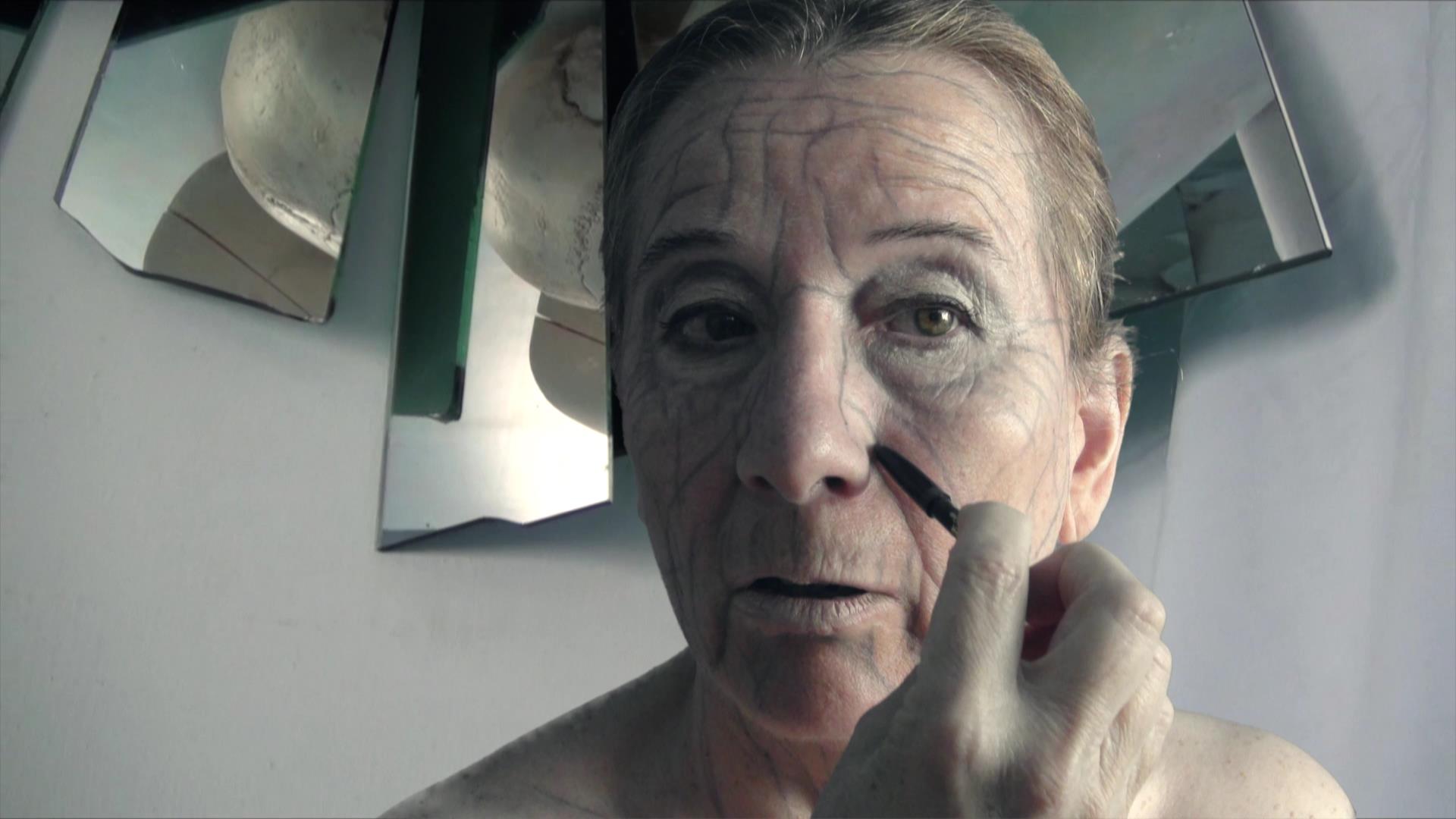
 Click to view the video
Click to view the videoLaura Cabrera & Sira Cabrera Monologue, 2020, 1:09
Monologue, 2020, 1:09
Synopsis:
It is a monologue or perhaps a dialogue with death. It is a confrontation, a spell. It is necessary to emerge with force and beauty against this harsh reality of the coronavirus. This work contains some images from a previous video: Acercamientos, which have been modified to form this new one.

 Click to view the video
Click to view the videoLaura Cabrera & Sira Cabrera Woman Deleted II , 2015, 3:21
Woman Deleted II , 2015, 3:21
Synopsis:
A woman is being silenced and confused, alienated, erased, quartered and broken metaphorically, but that is what is happening in reality in the world right now with gender violence. The passivity of the woman is also shown, since her identity has been erased and she is not fully aware of the violence in which she lives. We can ask ourselves, do we need feminism? Since we live a scourge in all societies on the planet, which we must eradicate.
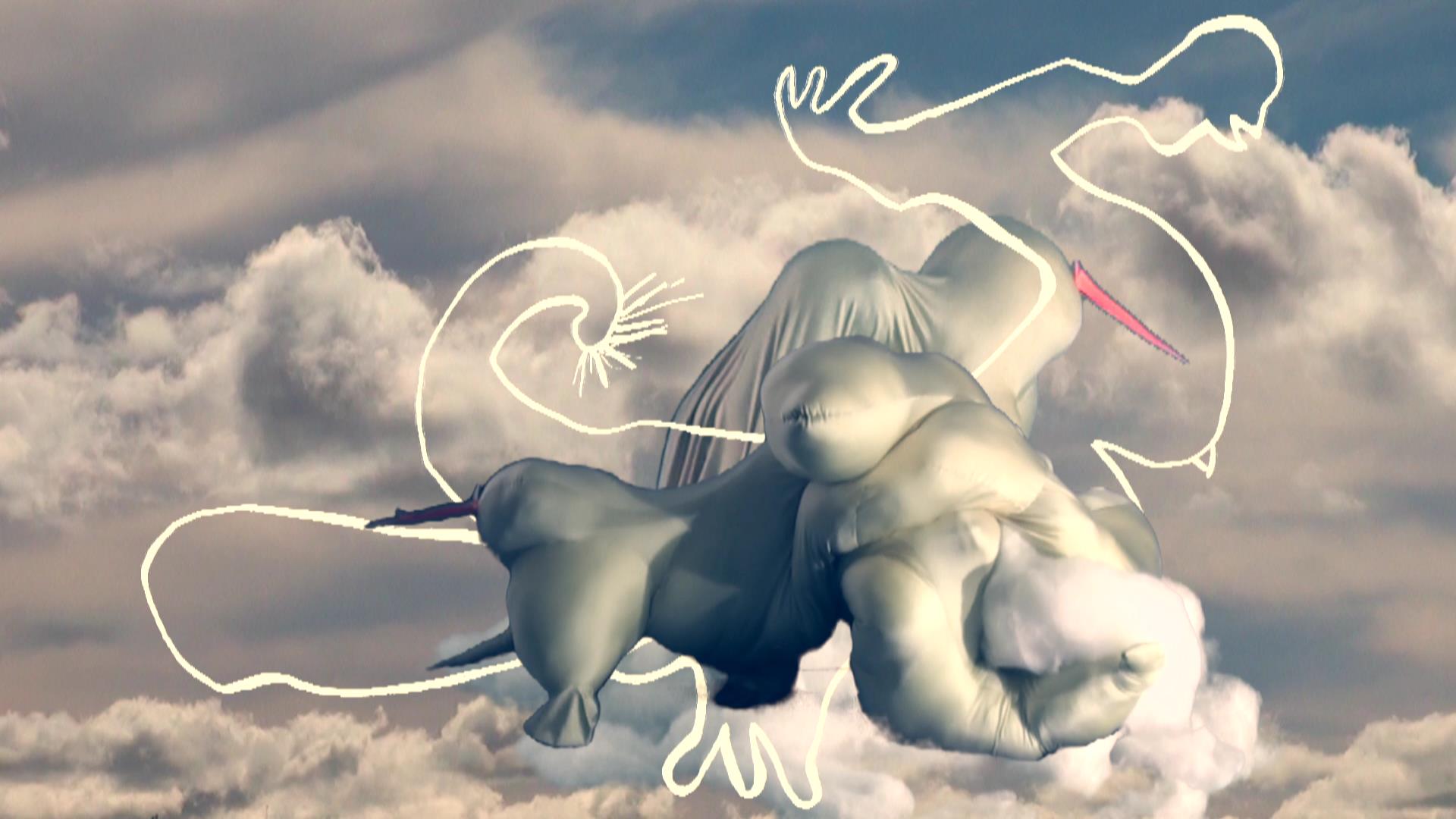
 Click to view the video
Click to view the videoLaura Cabrera & Sira Cabrera Be/Being , 2019, 7:53
Be/Being , 2019, 7:53
Synopsis: A woman gets into the skin of another being, an absurd and sympathetic monster, and fills herself from within, filling herself with clouds, becoming part of nature.
Plants and animals live inside, he lives between water, sky and earth, and as one more being in Nature, he feels the intrinsic connection between all living entities and the cycle of
life and death on this planet. Music and voice is the guide that imprints a rhythm and emotional content on the images.
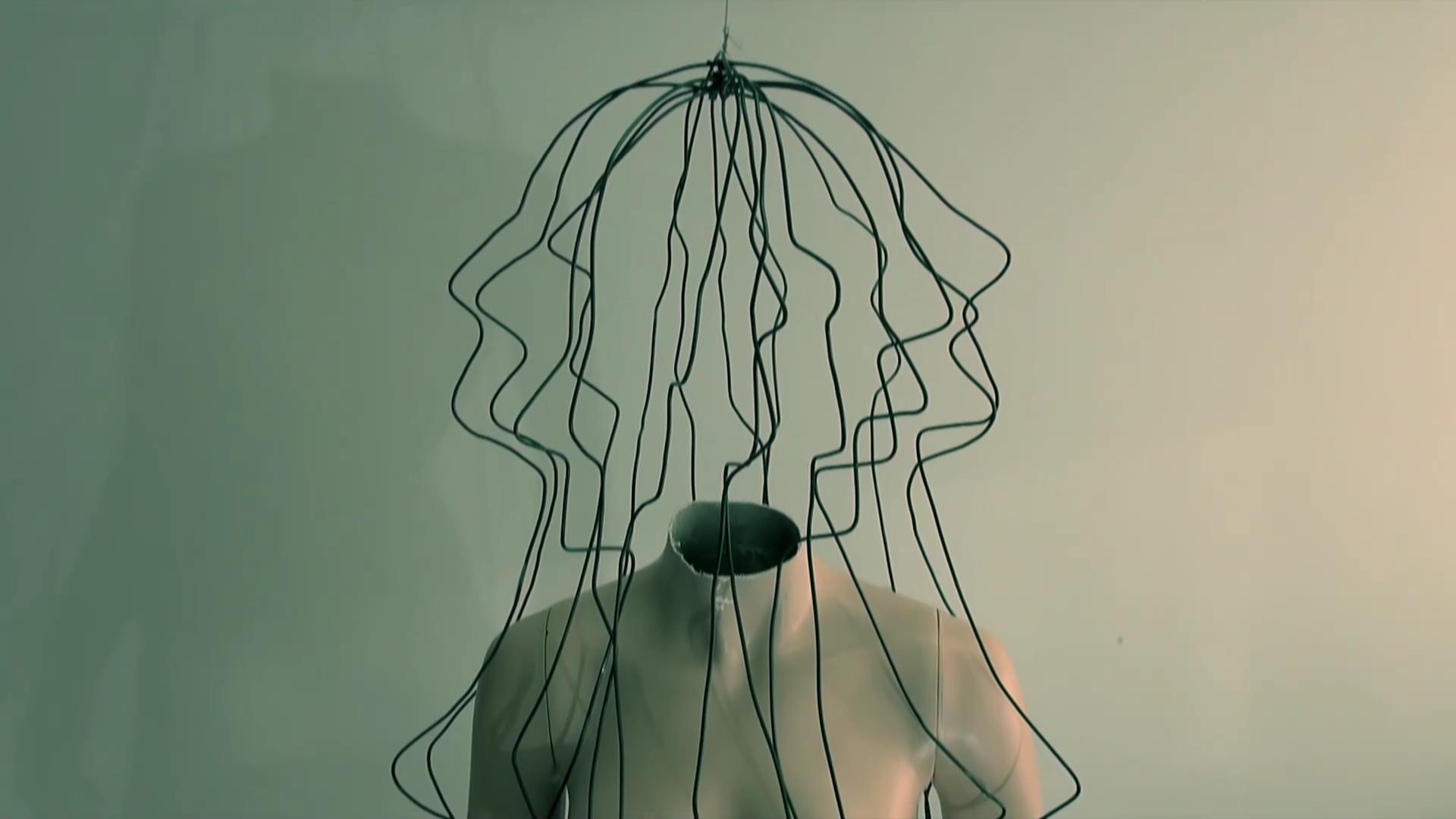
 Click to view the video
Click to view the videoLaura Cabrera & Sira Cabrera Transmutations, 2018, 10’12
Transmutations, 2018, 10’12
How are we really? This video starts from the idea of being dead and how we are opening up to life, accepting ourselves as we are. An object comes to life, following the states of mineral, vegetable, animal …, showing our relationship with Nature. As in a game, reminiscent of the theory of evolution, a path is traveled with dissonance and excess, going through the irrational and awkward, with trial and error.
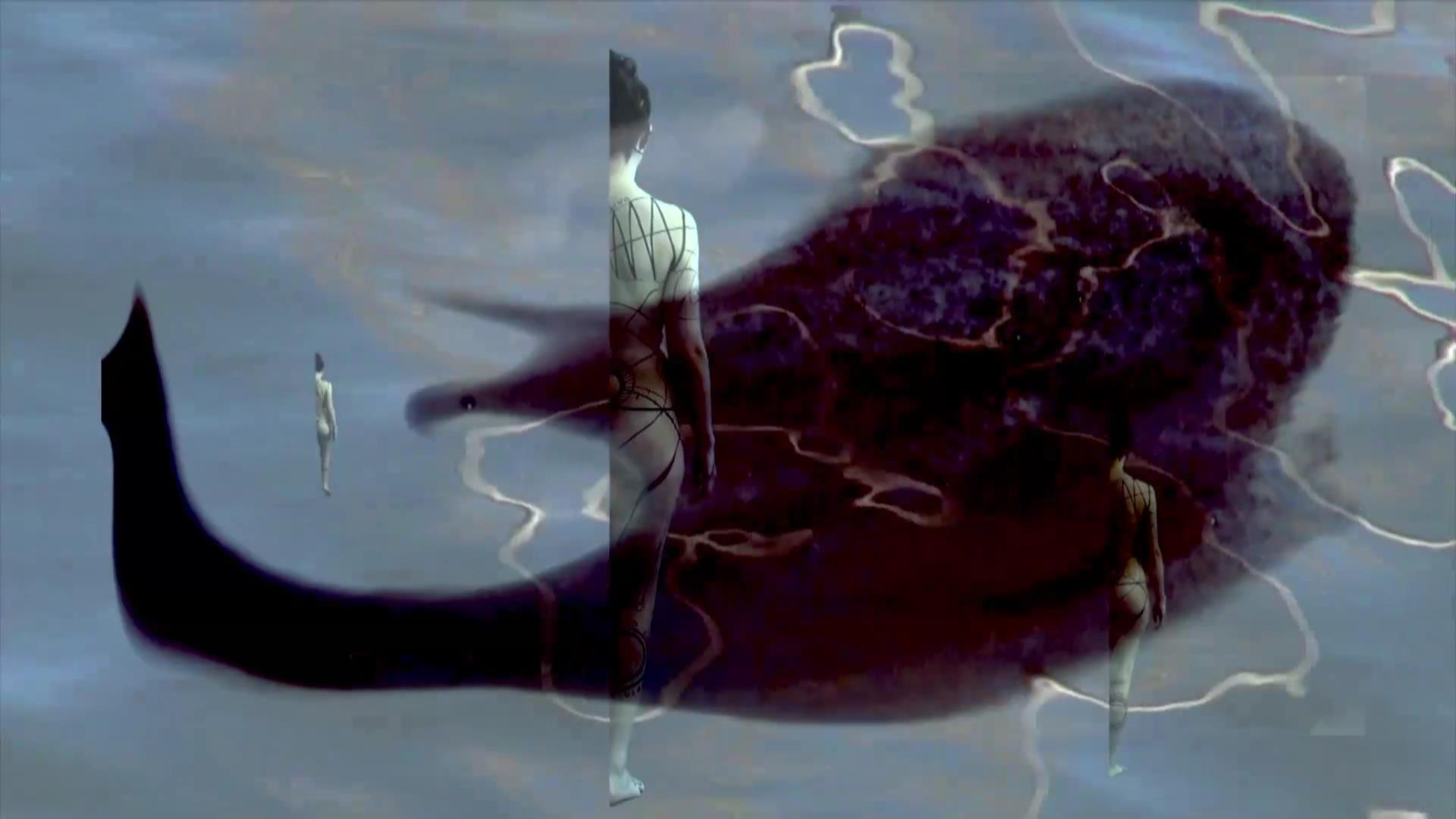
 Click to view the video
Click to view the videoLaura Cabrera & Sira Cabrera Indicios / Inkling, 2017, 6:59
Indicios / Inkling, 2017, 6:59
.Inkling wandering about space and time, looking for a new relationship with Nature. Indirectly and poetically it proposes to recreate in her, to admire her, to look for a new role for the human being feeling within the universe. Overcoming our predatory role, stop being the subject that dominates the object, stop doing what we have been doing and stop exploding and destroy life on the planet until exhaustion, to submerge us as one more among all beings.
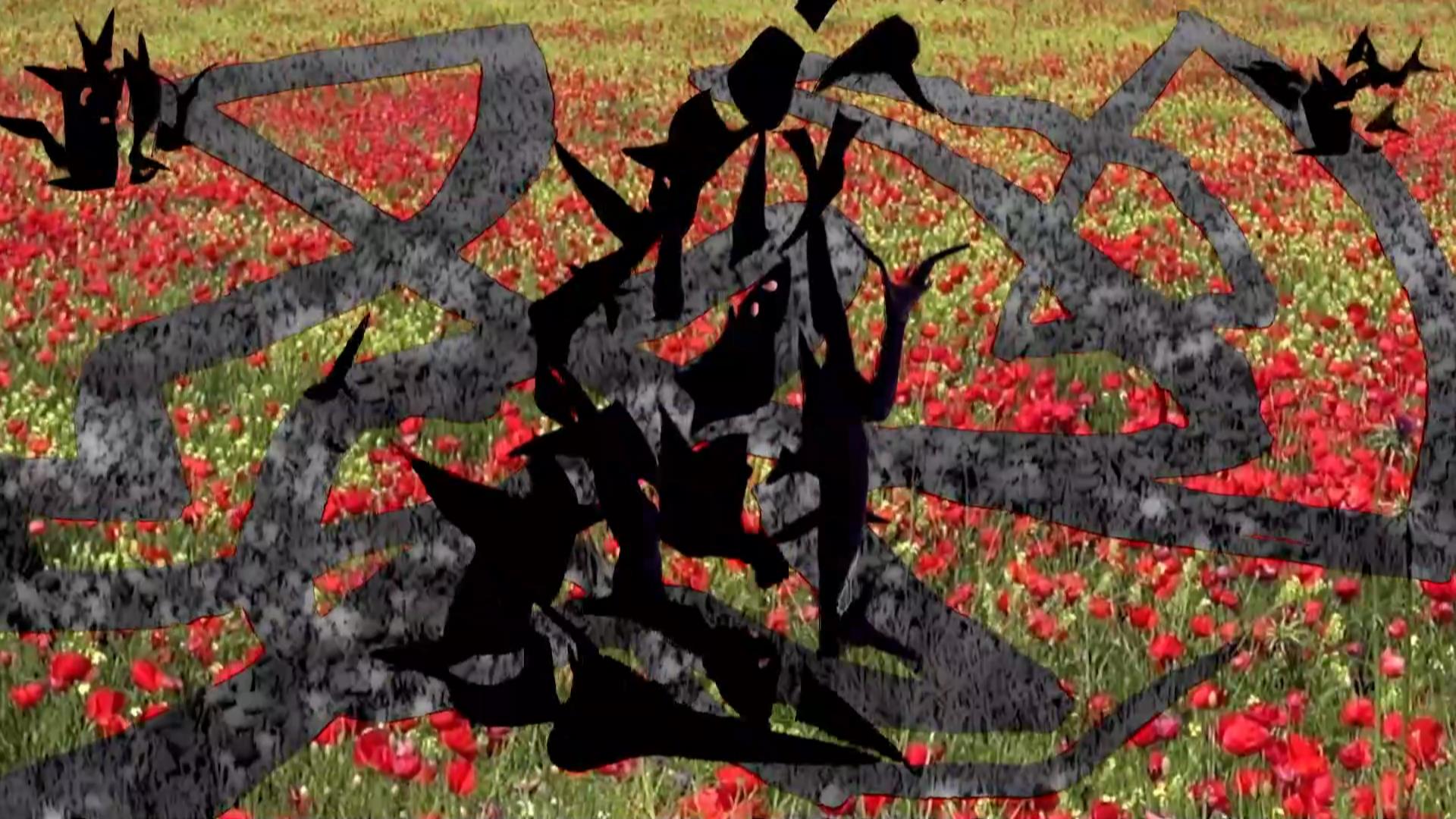
 Click to view the video
Click to view the videoLaura Cabrera & Sira Cabrera Virulencia, 2020, 5:05
Virulencia, 2020, 5:05
Synopsis: A woman becomes a strange being, and enters the air, the sea and the land full of color and life; but her presence transforms the places into disasters that smell of sadness. The video stages the arrogance, lightness and arrogance with which human beings mistreat nature. It tries to make us aware that we are like viruses, destroying life on planet Earth and we are producing a climate pandemic caused by our human frivolity.
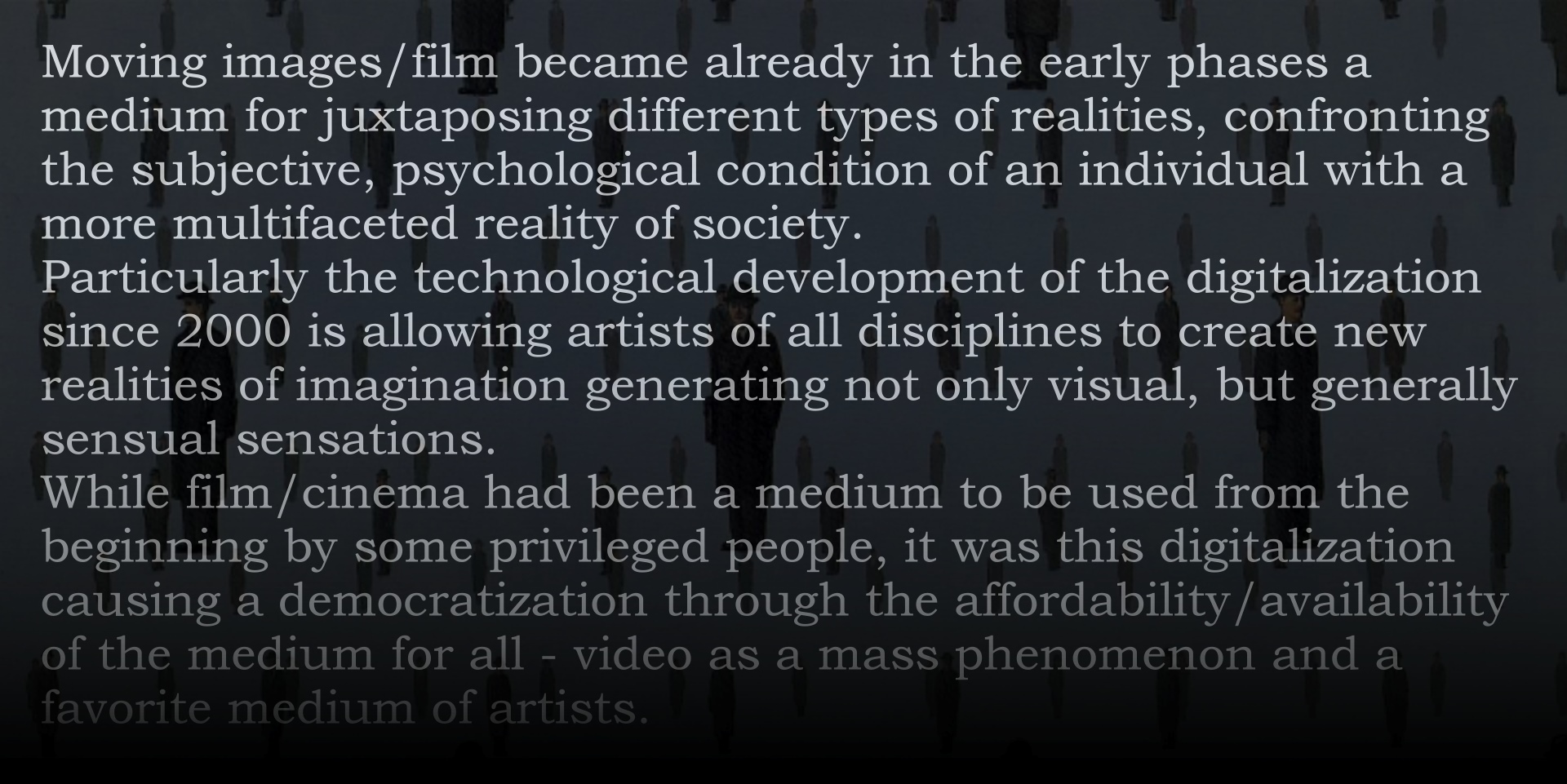

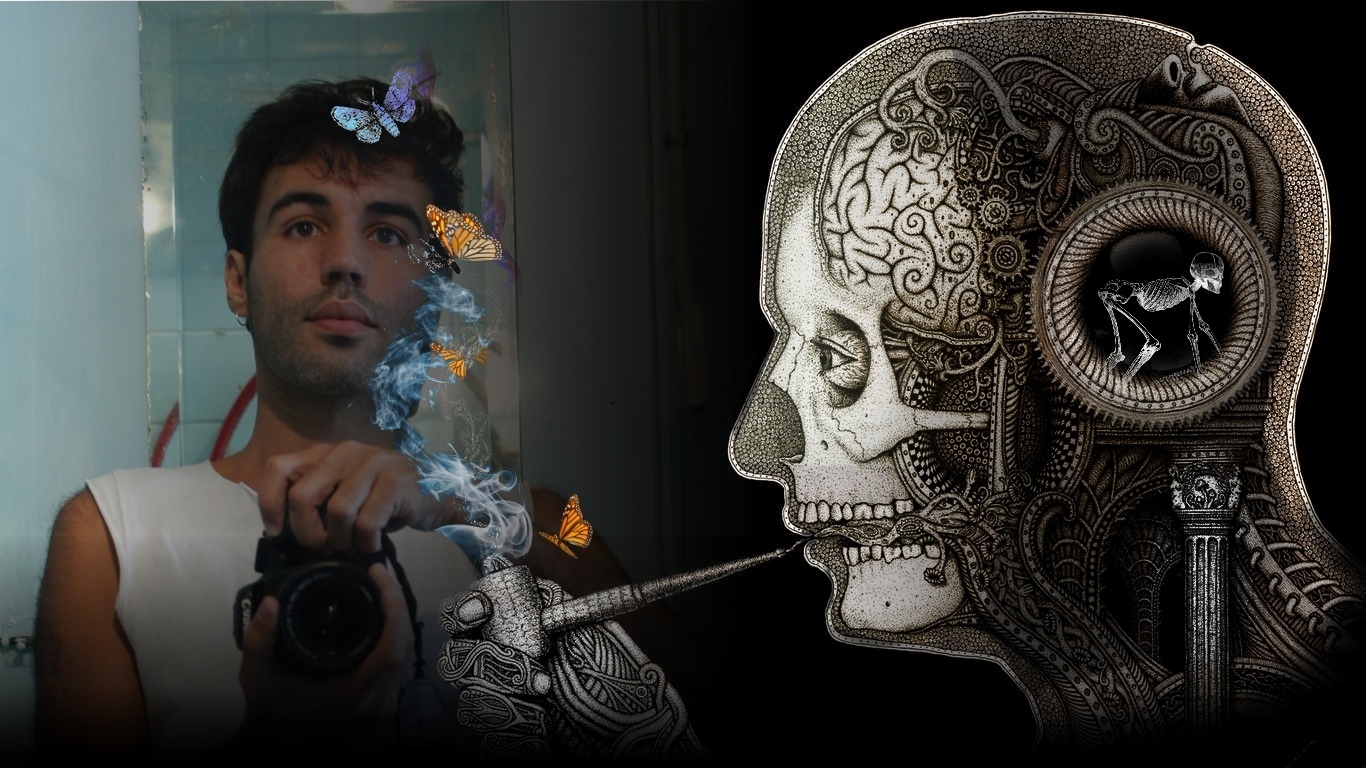

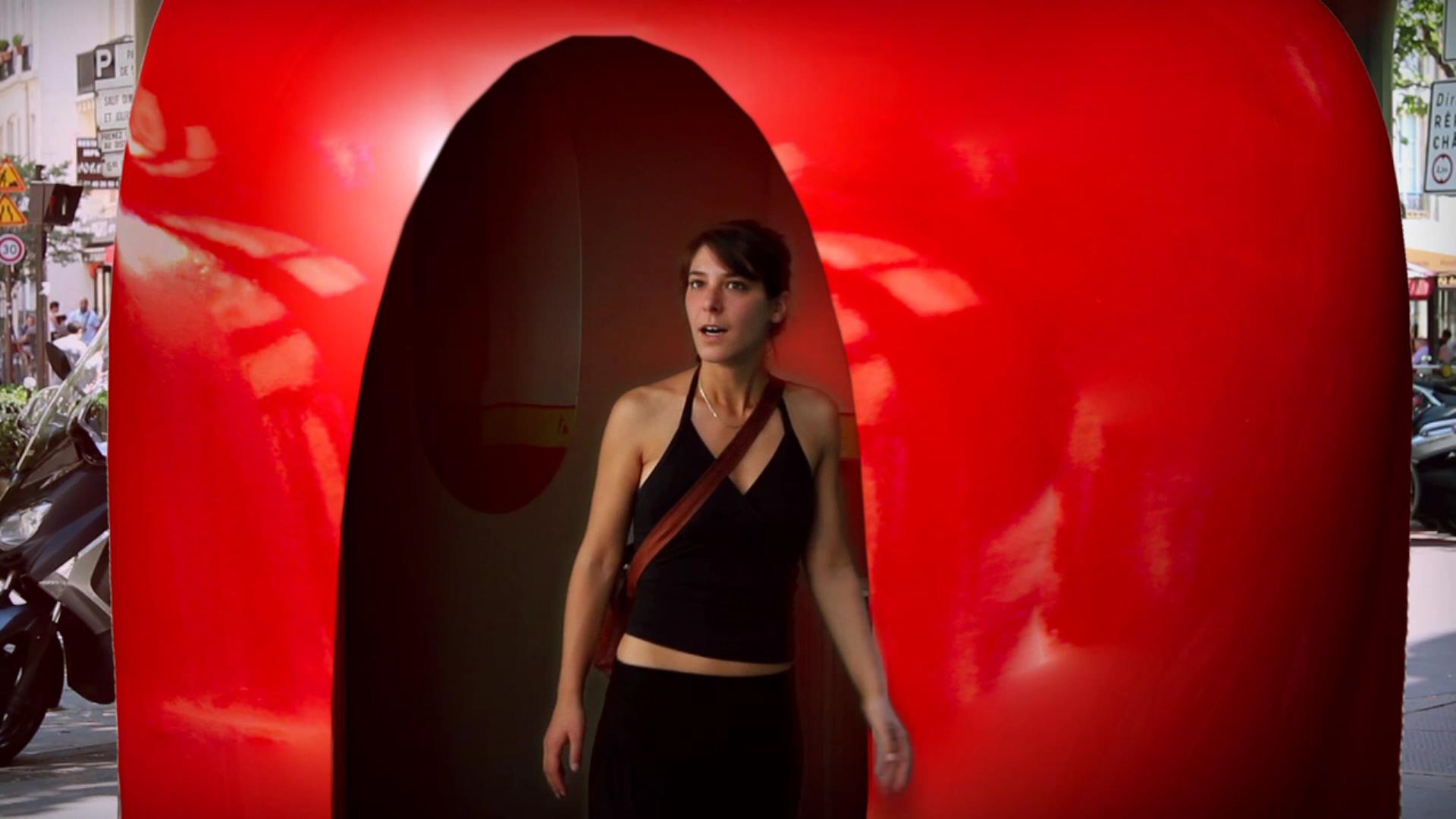
 Click to view the video
Click to view the videoAlbert Merino Meet the artist
La Fête de l’Art Contemporain, 2011, 20:00
Through a fiction, this video presents the development of a hypothetical visual arts contest, whose plot background is overcoming the so-called ‘reception crisis’ of Contemporary Art. Crisis about which Theodor Adorno theorized in the 50s. For this he will use techniques typical of the mass-media, together with the proportions of a great popular event.
Agents external to the creative process: gallery owners, curators, official collectors, etc… analyze in third person the different contributions of the participants, which make up, at the same time, a proposal of dreams and utopias.
Albert Merino
Spanish videomaker
Interview: 10 questions
https://vip.nmartproject.net/merino-albert/
1. Tell me something about your life and the educational background
I studied fine Arts in Barcelona and Berlin , I spend as well several years in France were I filmed several video pieces.
2. When, how and why started you filming?
I start filming during mi second year of studies in the Kunsthochschule Berlin Weißensee when I was studing sculpture. I found the video media a best way to express myself.
3. What kind of subjects have your films?
I try to experiment between different genres. I make a kind of poetical and introspective work using video to describe emotional atmospheres. I use as well the video to visualize fake ‘realities’ as a way of ‘videotopies’…
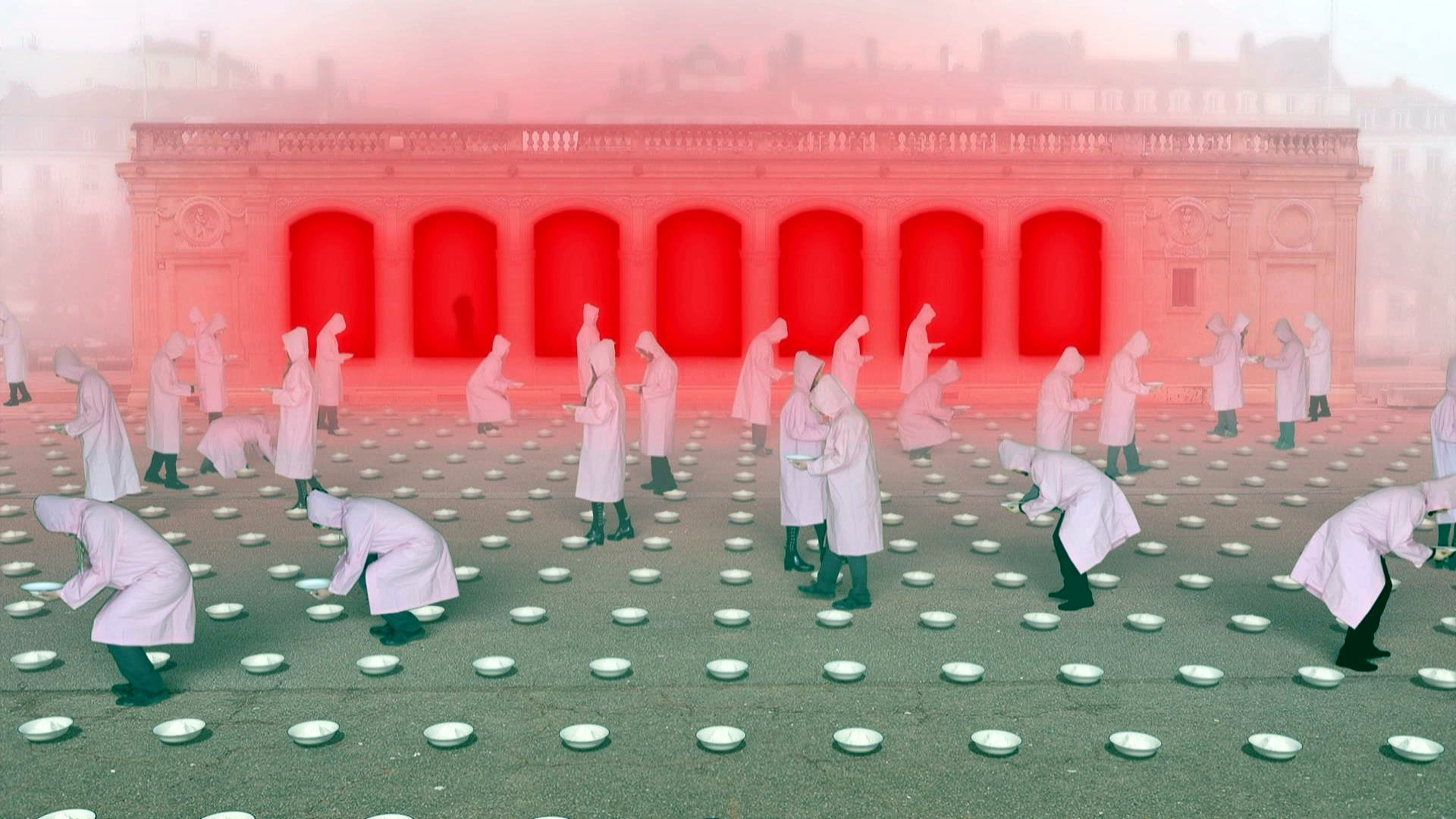
Alber Merino video – Memories of Detachment
4. How do you develop your films, do you follow certain principles, styles etc?
I have a lot of references of painting and old and modern film and videomakers, such as Buñuel, Leos Carrax, Lech Maiesky, Mathew Barney, Pierrick Sorin, Reynolds Reynolds, Carles Congost…
5. Tell me something about the technical equipment you use.
I use an HDV sony camera, and a Digital Canon photo camera. For editing I use Final Cut and After Effects in a Mac Laptop
6. What are the chances of the digital video technologies for creating art using “moving images” generally, and for you personally?
The possibility of composing, that means generate different images than you registered.
7. How do you finance your films?
Principally I try to realize another jobs to economize and be able to finance my self projects.
8. Do you work individually as a video artist/film maker or do you work in a team?
if you have experience in both, what is the difference, what do you prefer?
I work alone, but I use a lot of free collaborators for acting in my video pieces. I will like to work in a team as well.
9. Who or what has a lasting influence on your film/video making?
All kind of fake documentaires.
10. What are your future plans or dreams as a film/video maker?
To find resources to be able to produce new films.
Can works of yours viewed online besides on the CologneOFF platform? Where?
List some links & resources
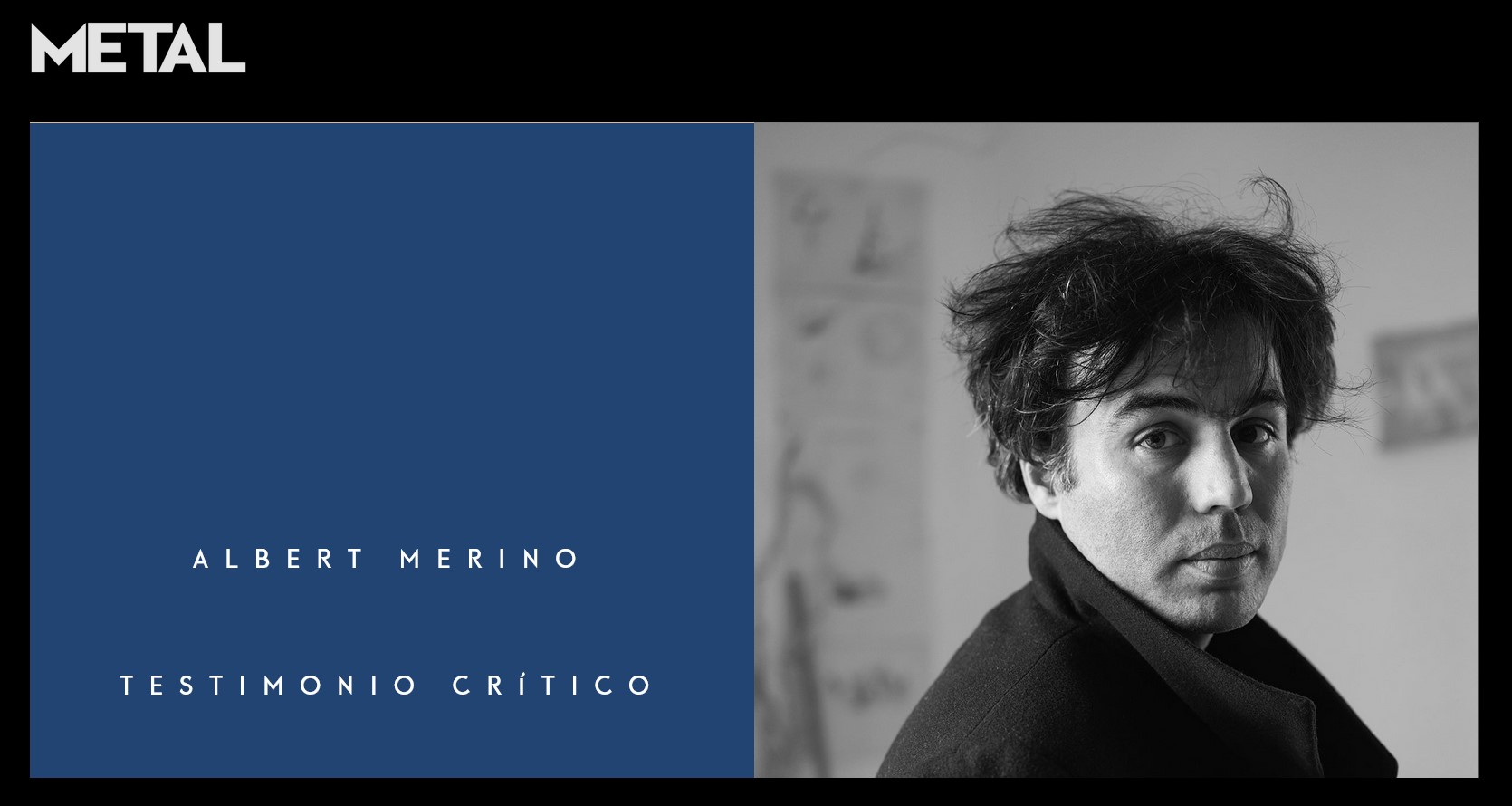
Interiew @ METAL Magazine
Albert Merino has a liquid but sharp gaze. This Barcelona video artist is one of those people to whom his intelligence gives them away. For him, reality can be observed from many angles, with a certain poetic but also critical. His work has participated in numerous international video art festivals and has been presented at institutions such as Arts Santa Mònica, Palais de Tokyo, Songwon Art Center in South Korea and MOCA in Taipei. Recognized with various international awards, something tells me that his greatest reward is being able to move in parallel between the imaginary and the real.
What do you want to tell me about your vital and artistic journey up to today?
I was born in Barcelona, where I lived until I was 23 years old. There I began my artistic studies at the University of Barcelona. I then moved to Berlin, where I also completed a Diploma in Fine Arts and a Meisterschüler under the tutelage of the sculptor Inge Mahn at Weißensee, the former East Berlin School of Fine Arts, which was completely reinvented in the 1990s. It was precisely in Berlin where I began to experiment with video art, since in Barcelona I had trained in painting and drawing. But it wasn’t until I moved to Paris that I began to dedicate myself fully to this discipline.
Let’s say that after a lot of searching I began to produce in this city in a more intense way, and it is at this time that some works appear that have been more widely disseminated later. Upon my return to Barcelona, I began to distribute my work and received some prizes and scholarships. Among them, some residences, especially at Casa Velázquez, Académie de France in Madrid. That is the reason why I moved to Madrid for more than a year.
How’s Madrid?
Madrid was a discovery; there is a very wide scene and things are constantly happening, it is almost endless. There I worked on several pieces as well. At the end of this period I returned to Barcelona, and later I moved to Lyon. There I am doing my new jobs. Living in various contexts has always been a source of inspiration for me. Somehow, my works are nourished by the places where I live.
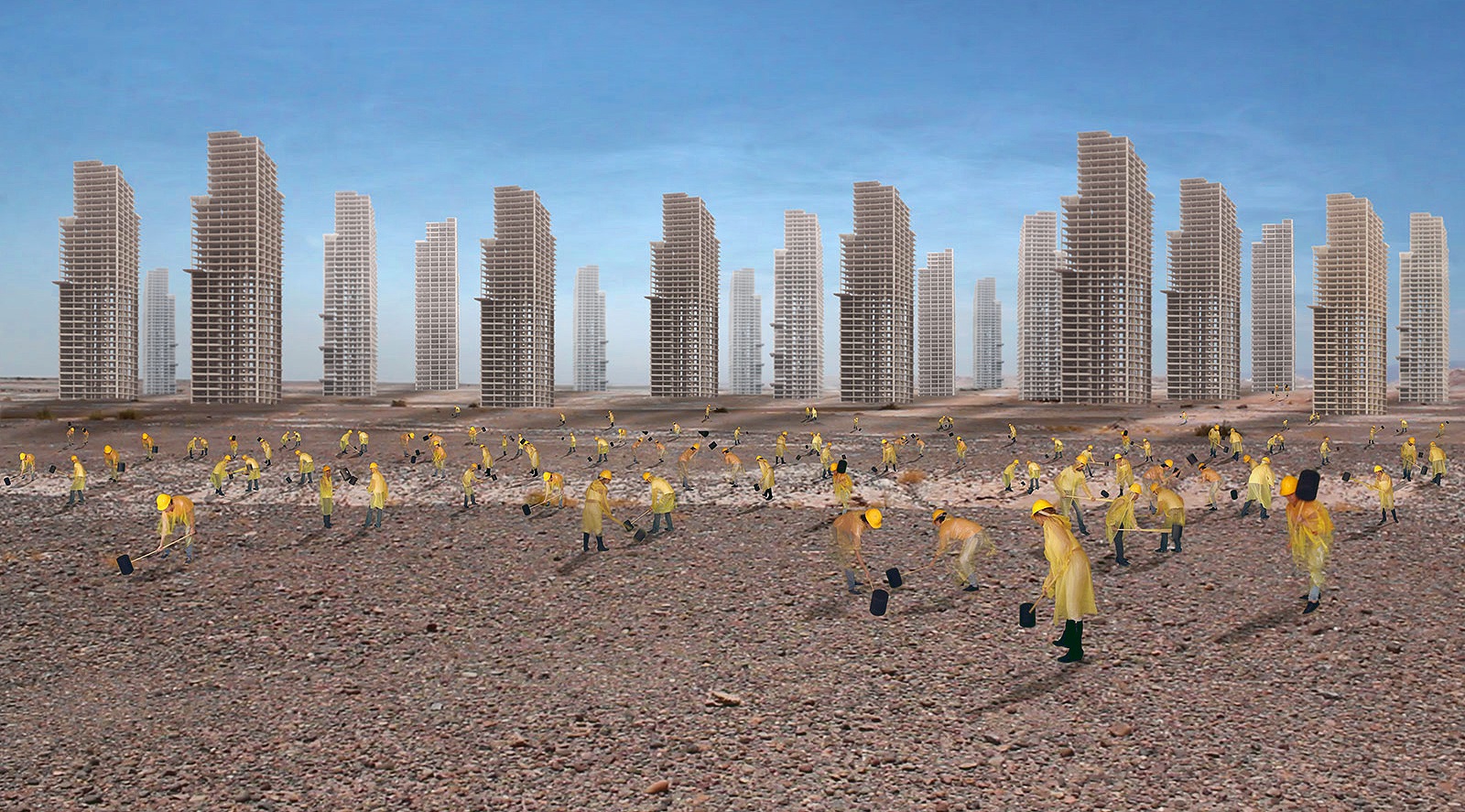
Alber Merino video – The Present Condition
From what moment and how did you make artistic language yours?
During my adolescence I spent hours and hours drawing, creating imaginary cities and worlds. I had the need to capture the things I thought and that’s how I became familiar with drawing. Then you start to question everything you’ve innately learned, and you spend time experimenting and looking for a language with which to communicate what you want to say. I seem to remember that in my first years of study I started drawing storyboards. I had many ideas for visual works on video. Abstract videos close to painting, videos without dialogues that suggest a kind of contemplation, a transition of evocative images that dialogue with each other.
“Ideas are often more important than the means by which they are realized, but the formal resolution is sometimes also part of the meaning.”
Making videos wasn’t as easy then as it is now…
Exact. In the middle of the analog era it was very difficult to formalize these ideas. Producing a video was not within everyone’s reach. Recording or editing were difficult processes and the equipment was not available to everyone. My generation was born in an analog world and lived the transition to digital. It was impossible then to imagine how easily, years later, a camera and editing equipment could be accessed. My work has been incorporating all these technological changes.
I started working with analog. The process is a lot like digital; what changes, ultimately, is the accessibility to the means of production. It is about translating drawings into moving images, developing a whole visual imaginary. Perhaps the video is a way to delve into those drawings, into those imaginary worlds that come from far away in the creative process. But at the same time they are also an interaction with the things I experience and a way of interacting with the environment.
How do you remember the years in the Faculty of Fine Arts?
I have good memories of my time at the Barcelona faculty. The generation that studied with me in the early 2000s produced many artists who developed very interesting careers, despite the fact that it was said then that few students would end up devoting themselves professionally to art. What happened was not entirely like that. A whole scene unfolded that did not exist before.
I remember once that we organized a kind of art exchange market between artists. I don’t quite remember how, but a small group of people got together and went to the mountains to look impromptu for a teepee. We didn’t quite know where to find it. It was a kind of wandering. Everything happened to us, we even found a kind of witch along the way. The fact is that in the end we found a person who had one and wanted to help us. He lent it to us, and one morning in June, the faculty appeared with a teepee in the middle of the patio.
Sounds great.
There we met to tell stories and stories. I also remember another project in which we wanted to enable passage for an elephant from the sculpture workshops to the project classroom, which required a somewhat excessive architectural intervention; In the end, it ended in that, in an absurd project, which was in turn a kind of mockery.
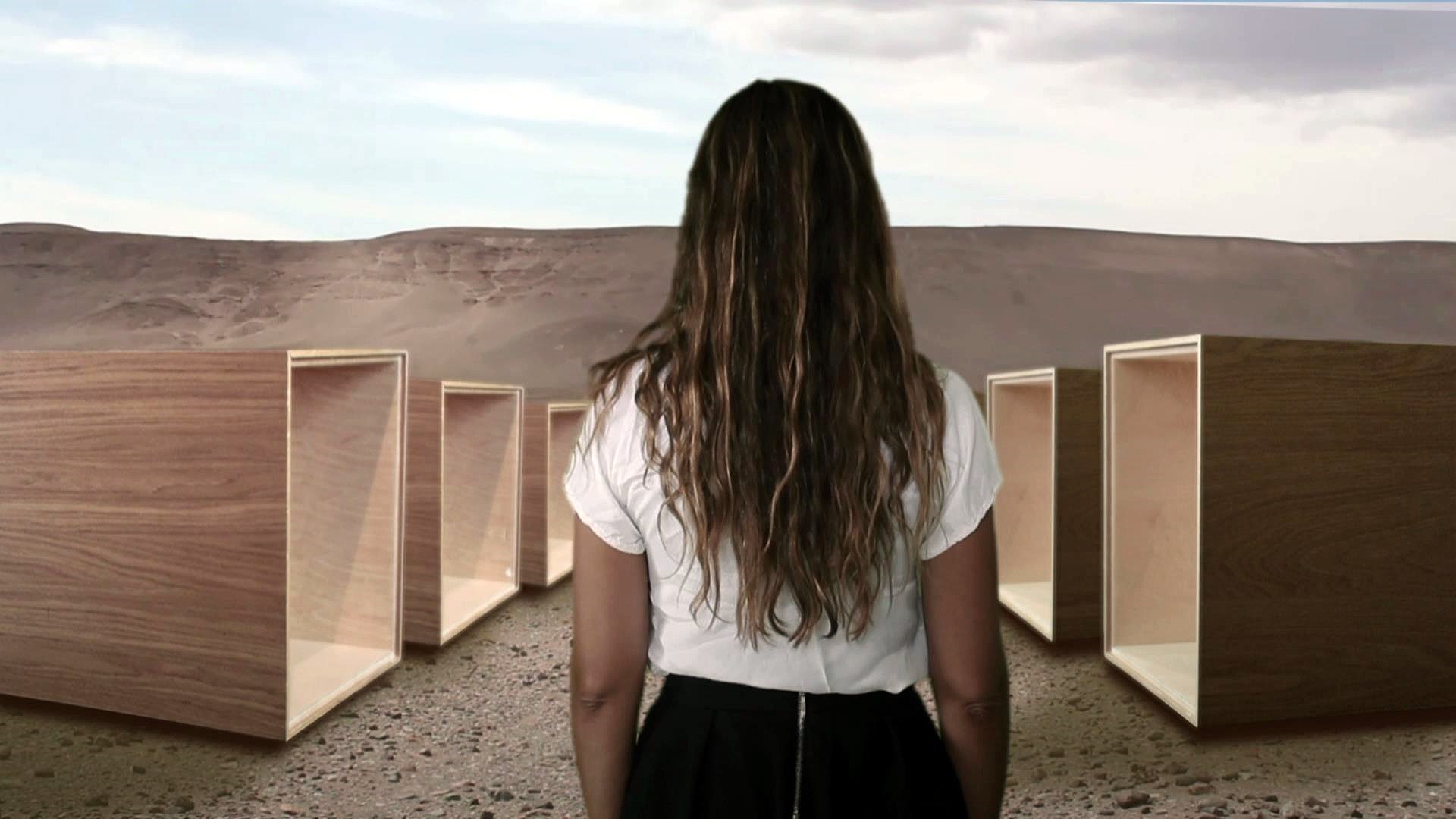
Alber Merino video – The Present Condition
Were you freer in Berlin?
The faculty in Berlin was quite different, it was not so defined with a system of credits and hours –sometimes a bit absurd–, and you had complete freedom to develop your projects. A freedom that was even scary, accustomed to the system of Fine Arts in Barcelona. In Berlin a greater autonomy of the students was expected. There were classes, of course, but more than classes there was technical advice depending on the needs of each student.
We students had to find out how to develop our projects with the means at our disposal. Weißensee had very well-equipped workshops, and each workshop had a manager who was in charge of advising the projects. There I had a tutor, who was Inge Mahn. She came from Düsseldorf and at the same time had been a Beuys student. Also in the sculpture department was Karin Sander, who would end up working in Zurich later.
What were you most focused or focused on back then?
At that time he was writing about experimental theater and plastic arts. I did a thesis on the fourth wall and the way to integrate the viewer as a producer in the work of art. For this I worked with the playwright Roland Schimmelpfenig. At that time, the theater had a great influence on me. I was also in a project with set designer Joachin Damm, also a teacher at Weißensee. With him and other students we formed a kind of ensemble and went on tour all over Germany. The idea was to create art in movement, nomadic art.
What are your vital referents visible in your work?
If influences from other artists are understood as a vital referent, I could speak of many referents. The type of video art that interests me especially is that which contains a certain dramaturgy, that which develops its own visual universe. I am interested in the narrative that develops in works such as those of Pierrick Sorin, Carles Congost, or Dionís Escorsa, but also the visual universes in the works of Pierre Huyghe, Matthew Barney, Reynolds Reynolds, Lech Majewski or Anne Imhof.
In my works there is also a lot of influence from the cinema, directors like Pier Paolo Pasolini or David Lynch. I am especially interested in Eastern cinema, Andréi Tarkovsky, Béla Tarr, Aleksandr Sokurov, although I also have influences from mainstream cinema. Another field of special interest to me is historical painting; my work is full of allusions, from Jean-François Millet to Pieter Huys or El Bosco. And as I was saying, experimental theater was also an important reference point. One of the companies that have interested me the most is Fura dels Baus, with whom I had the opportunity to collaborate for a show in Poznan (Poland).
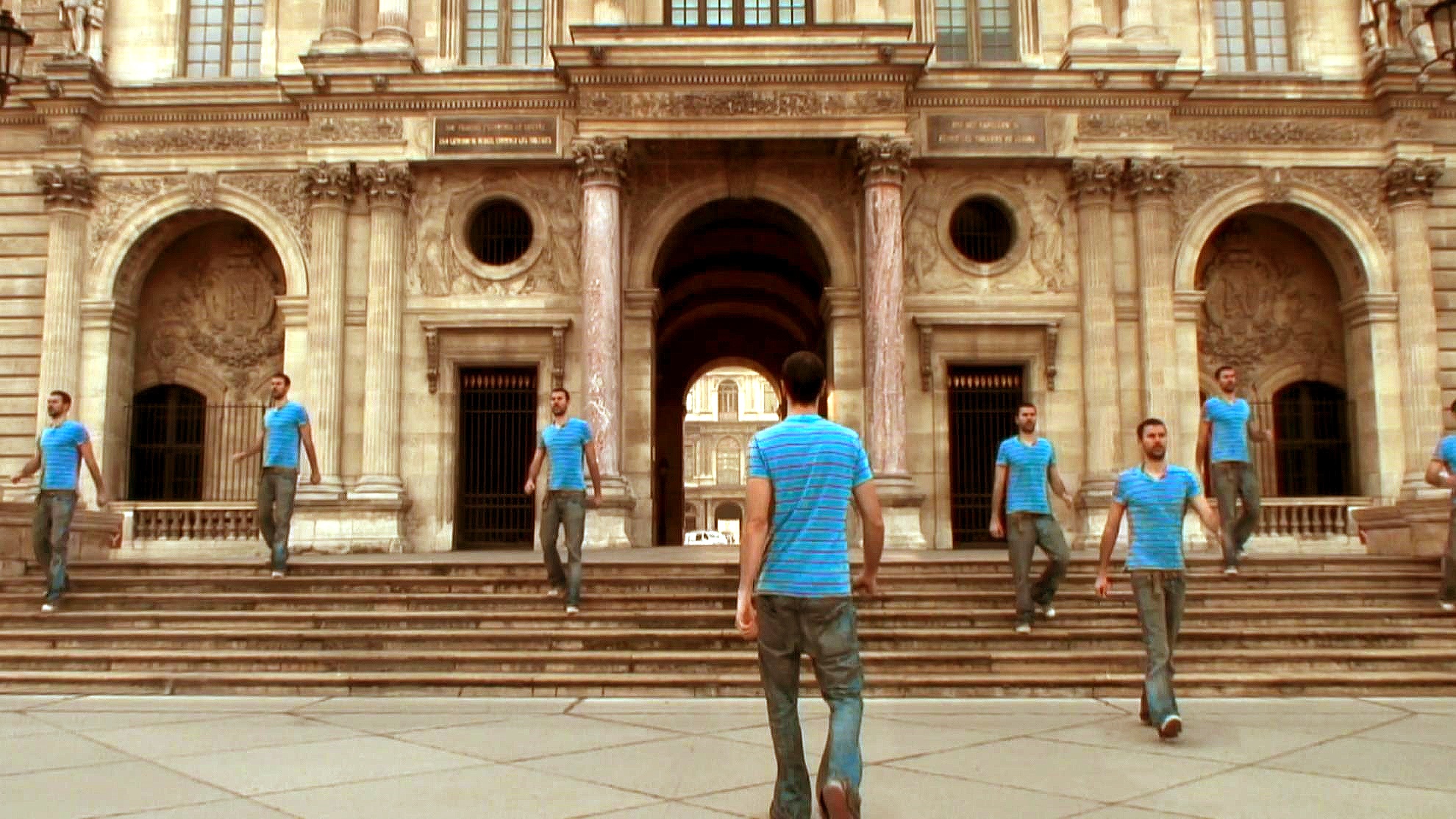
Alber Merino video – The City and The Other
How do you explain your creative process? Do you prefer solitude, or do you share your projects with other collaborators?
I prefer loneliness, I need to be alone to develop. But in the same way that I need to create in solitude, later I need to confront my ideas. So I often share them with people close to me. I don’t always agree with everything we talk about, but it helps me a lot; It allows me to carry out a kind of first staging, to see the reactions. In any case, it is very difficult to foresee when a project will work well. When you are creating, you don’t think much about the diffusion or the repercussion that a piece could have after the fact. It has ever happened to me that some pieces in which I did not have much confidence have worked much better than others to which I spent much more time and intensity of work.
Your videos have various readings, but there is something obvious that is the contrast between what is real and what is fictional. What motivates your desire to transform reality?
I understand video as the embodiment of a utopia or dystopia. My videos have a lot to do with sculpture. Sometimes they are formalizations of impossible projects of which the video is a record that gives it a real entity, almost a document. I am interested in the possible, to build unreal stories that change the perception of our daily life. It is still a language close to poetry, but where words are replaced by objects and actions.
What fascinates me about video is its ability to create reality. Video almost gives me a more sense of reality even than photography. We can see a photograph of something that has disappeared, but if we see it on a video, we are there, we can almost walk around and touch. That feeling of reality has always fascinated me.
In my videos there is not only the act of creating possibilities, there are also recreations, forgotten stories or assumptions. Intervening in reality through video helps me to speak from an intimate space, to the way in which I understand that the world is being transformed, as can be seen in one of my latest works, The Present Condition. I also use the medium critically in more political work or mockumentaries. I am interested in deconstructing the everyday, dramatizing space, creating friction between the real and the possible.
Your reflections have to do with the difficulty of being and existing. What meaning do you give to life?
Some of my pieces reflect on the meaning of being, sometimes reducing it to a very elementary form. This is the case of La ciudad y el otro, which talks about isolation, alienation and how we project ourselves into the other. In this video, an entire city is populated by inhabitants who always turn out to be the same character, until a chance encounter changes their perception of reality. It’s a fairly straightforward story, although seeing a world where only a single subject exists seems like a terrifying prospect to me. It works as a metaphor, and about how we recognize ourselves in what is alien to us. It questions whether it is possible to dissociate ourselves from our perception, it is a story about subjectivity.
Other pieces work in a similar way, such as one of my latest works, Bestiari, made in Madrid, where the entire urban fabric, instead of being populated by human presence, is inhabited by animals. The fact of seeing such a bustling space without human presence is disturbing. However, the testimony of the presence is found precisely in that uninhabited space. There is a whole reflection on the animal condition in the human and what separates us from other forms of life.
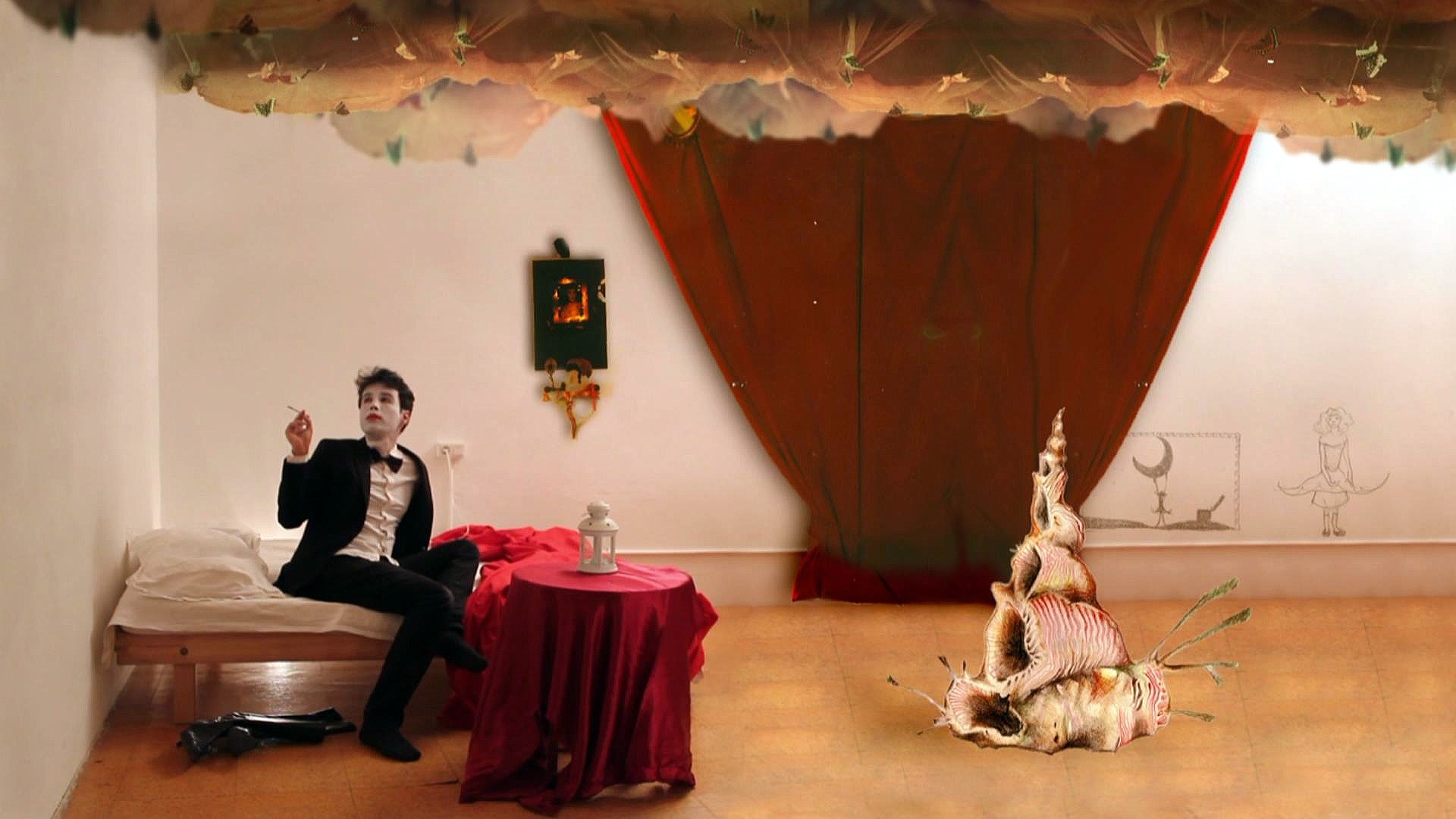
Alber Merino video – Compulsive Self-portrait
Do you include autobiographical aspects in your work?
Indeed, there are other works that are based on autobiographical experiences, such as Autoretrat compulsiu, which is a reflection on the image itself set against the imaginary that I develop in my creations; or Les Baigneurs, where tiny people carry out recreational activities in the residual spaces of everyday life, ironizing a certain type of epic image. I don’t know if any common reflection on the meaning I give to existence can be extracted from all these points of view. I think they raise more questions than answers.
I think they raise more questions than answers.
In any case, there is a constant that has to do with the ways of inhabiting a space. I always work with the environments that I have within my reach or with those places that have had a special significance for me, building a story that has some experience of its own. I do not give any meaning in particular, but I am interested in practices such as wandering, or the casual and fortuitous.
My perception of existence has more to do with chance than with anything definite. For me the meaning of existence is not determined by any purpose, not even by a direction. It is the product of arbitrariness, of one of the thousands of possibilities that could exist. That is why the absurd is a constant so present in my work, because the absurd is the negation of what is determined.
You are interested in various genres, from pieces of an experimental nature, videodance or mockumentary. Do you consider exploring other languages?
In recent years I have developed my own language that has to do with a deconstruction of the narrative. In my works there is no linear narrative that leads us to an end, but rather a liquid sequence where we move through the images. The idea of experimenting with the narrative has led me to other genres such as videodance or, for a time, mockumentary. False documentaries tell a closed story. I made two in total.
At the moment I am working on a third one, which will close the trilogy. It is the story of an apocryphal artist in the Berlin of the 80s who acts as a spy through his artistic practice. It is a story about the appropriation and political use of artistic discourse. I think that in future projects I consider making a hybrid. Use an abstract language but at the same time introduce a certain precise narrative. That may be the next step I consider.
You have just presented a retrospective with seven pieces at the Medialab Prado. How do you face your work after the years?
Well, I would like to have had the resources I have now, both technically and in terms of knowledge at the time I did my first jobs. When I see them, I feel like a lot of things that I would like to correct and that I was unaware of at the time. But I must admit that they are the testimony of a whole journey, and some, despite being improvable from a technical point of view, continue to inspire and suggest me.
Ideas are often more important than the means by which they are realized, but the formal resolution is sometimes also part of the meaning. At Medialab Madrid I presented a retrospective sample of works from the last ten years. There are hours of projections and almost twenty works that are reduced to just forty minutes of projection and a very brief selection, but which allow us to give a perspective on the evolution of the work.
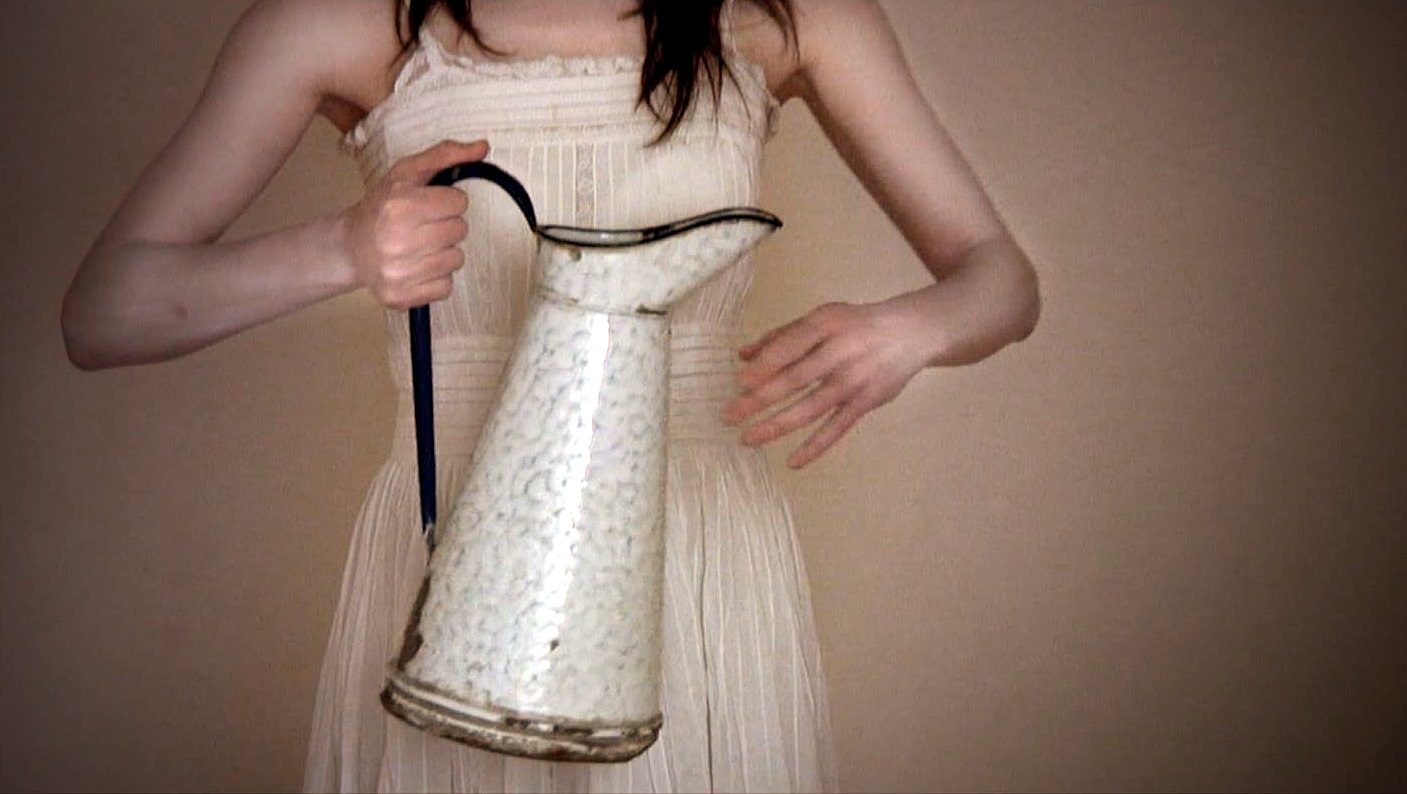
Alber Merino video – Lot’s Shadow
Urban space and architecture are highly visible elements in your videos. What is this fixation due to?
As I mentioned, it has to do with the ways of living. I often mix the organic with the geometric, life with the inert. The architectural is the framework of the subject, and in turn, the space acquires its meaning in relation to who inhabits it. Perhaps many of my works have to do with urban landscape painting. It is often a kind of portrait of the spaces where I live. However, these spaces are not literally portrayed, but are outraged, they propose routes, new perspectives, trans-temporal layers. It is a different experience from the urban landscape.
Can you give us an example?
El gran arsenico, for example, portrays the Gothic quarter of Barcelona, but it is not seen as we perceive it, not even in its archetypal tourist image, but dramatized, revealing a whole series of grotesque characters or elements incorporated later that take us into the imagination of the time. in which it was built, in the symbolism of the sculptural elements that constitute it. Thus configures a story about the occult and morality.
The city has been so dramatized that it is difficult for us to recognize it. However, we delve into a whole symbology and an imaginary that are also part of the space portrayed and give us precisely an ‘inhabited’ perspective of it. I am also interested in the alternation of urban landscapes with interiors, the transition from intimate space to collective space. All of these are layers of urban space that coexist on the same plane.
I am especially interested in your commenting on the piece titled Sprengung, in which you highlight the act of rebuilding historical memory in our country.
Unlike other pieces, Sprengung has a markedly political character. Sprengun was born from my experience living in Germany and France and seeing the treatment that these countries have made of the memory of fascism and the Second World War, and how it differs from what has happened in Spain. Without going any further, Germany carried out a major purge of all urban elements that commemorated fascism – with few exceptions.
One of them may be the Nuremberg Zeppelinfield. However, the gigantic swastika on top of Zeppelinfield was dynamited, and the video documenting this blasting in 1945 was an important post-war propaganda item. In Spain, however, huge monuments from the Franco era that celebrate fascism survive, and they have not even been resignified. I tried to visually imagine how the Nuremberg bombing document would have been applied to these monuments and show what their visual resolution would have been.
This theme was put into question precisely shortly after the video with the change of government was released, and right now it is a topical issue. It was not, however, at the time it was released last spring. The work was recently shown at the Matadero film library in Madrid as part of the Madatac festival, and was certainly emotionally received.
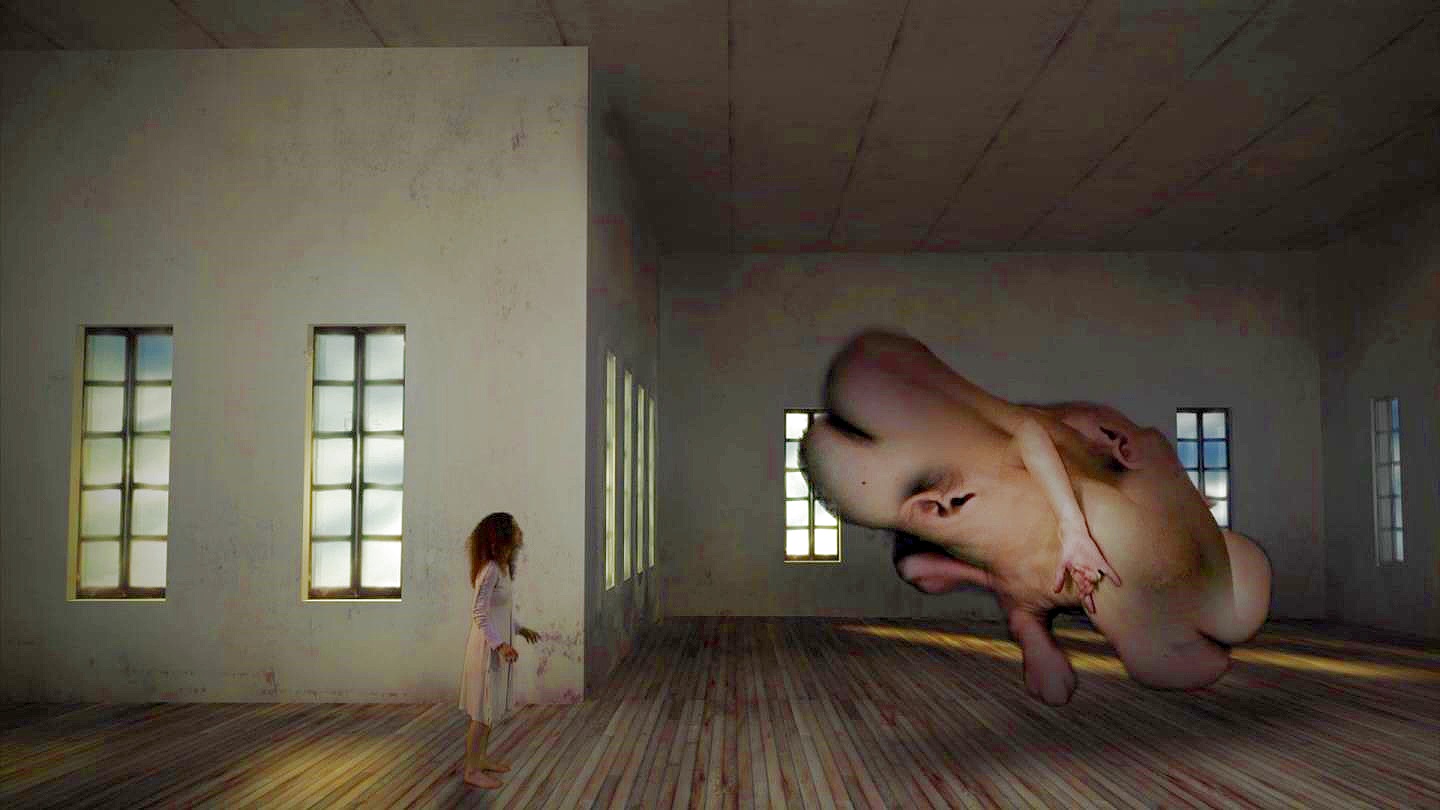
Alber Merino video – The White Rain
The hypothetical is also a reason for reflection for you. What questions are you asking yourself right now?
The possible allows us to confront the present in perspective, attributes a reading to the facts. In positivist philosophy, things are as they are and there is no other possible reality; but reality can be many things – it can mutate, and not exactly in one direction. That is why I am interested in the hypothetical, the ability to imagine other possible ones. Thought does it constantly, and the visual arts are a kind of thought developed in objects and images.
Right now I wonder about the nature of representation. I am interested in how the landscape is a political construction, how often architectural symbols are located in it that precede the prosperity they aspire to represent. In this sense, I wonder about the simulacrum and human action. I also wonder about the new narratives of the world order constructed after the demise of the Eastern bloc. I wonder if the structure of a bipolar world is not projected onto today’s supposedly multipolar society, and if the aestheticization of economic discourses is not a kind of positivism that annuls the possibility of what is different.
Do you take creative risks that may be imperceptible to the viewer? How?
Each piece presents a new challenge, although it is something that can only be appreciated by looking at it in perspective. But yes, the language is defined and delimited as it develops and each new work incorporates new experiences and new challenges. There is a big difference between the first works and the last ones, but with a constant that is what identifies a work. Some works establish continuity with other previous pieces by developing certain aspects, but others start completely from scratch and even represent a break with previous lines of work. I find the body of my work to be quite eclectic and this is also the case with the new projects I’m working on.
Your imaginary is related to metaphors about the absurdity of existence. What causes you rejection of our society?
I cannot say if pessimism is a constant in my work. Personally I do not consider it so; rather, there is a fascination towards the casual, towards the small daily gestures that escape from grandiose or epic stories. For me, the absurd has a more playful than existential meaning, which is why I cannot speak in my work of a rejection of society. Although it is true that there is a persistence of the grotesque and the ridiculous in many of my pieces.
But the grotesque has to do with the mask and the costume for me, in the end it is a question about identity. Does identity reside in what we are or in what we project? Is it something constitutive or is it a construction? The question of identity is very important in my work, and not necessarily in an uprooted sense like in Samuel Becket’s theater, where the absurdity of life is emphasized. For my part, I would not speak of a rejection of society as a whole, but of specific situations, situations that I critically address or that I highlight through the videos.
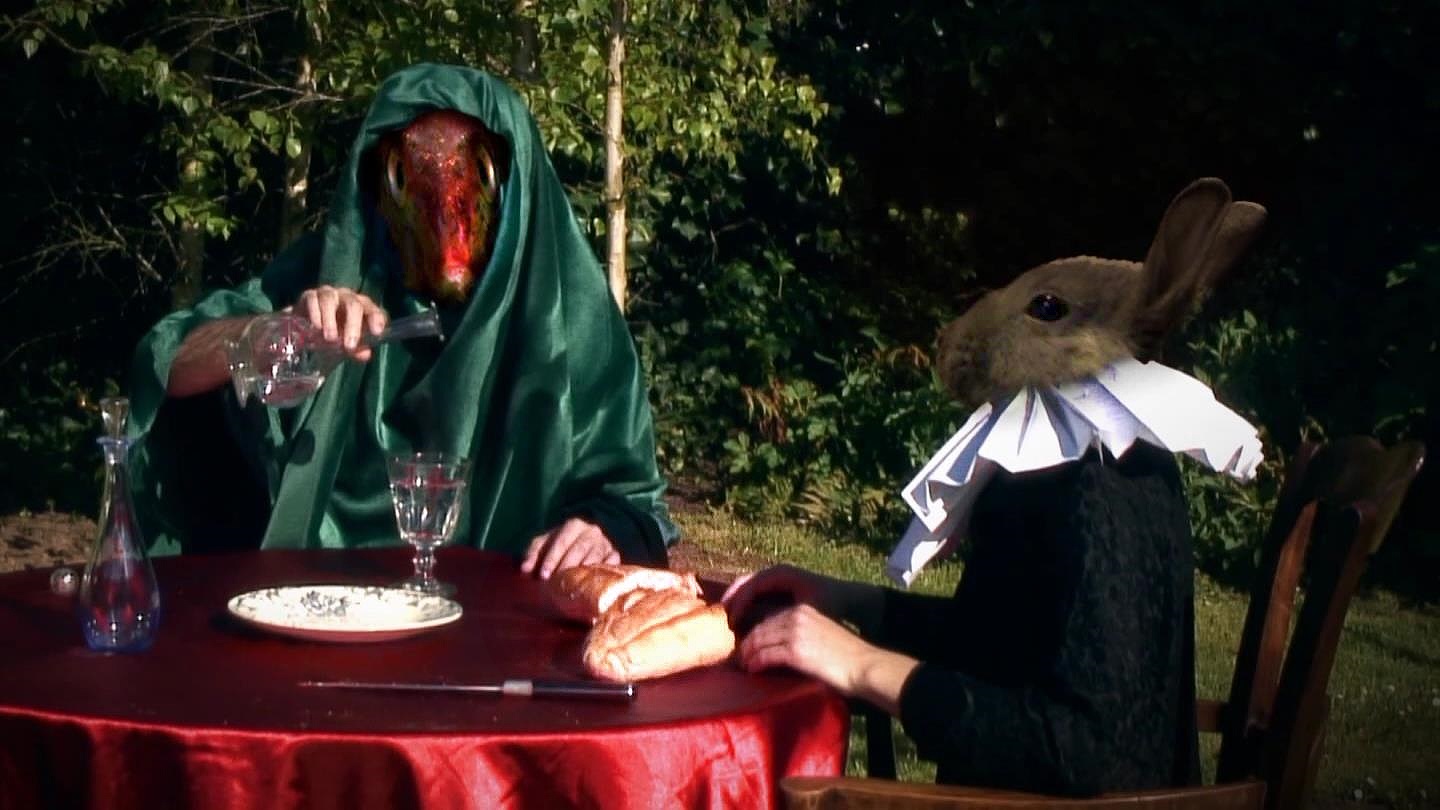
Alber Merino video – Hidden Mud
Lo hipotético también es motivo de reflexión para ti. ¿Qué preguntas te haces en este momento?
Lo posible nos permite confrontar el presente en perspectiva, atribuye una lectura a los hechos. En la filosofía positivista, las cosas son como son y no existe otra realidad posible; pero la realidad puede ser muchas cosas –puede mutar, y no precisamente en un único sentido. Por eso me interesa lo hipotético, la capacidad de imaginar otros posibles. El pensamiento lo hace constantemente, y las artes visuales son una suerte de pensamiento desarrollado en objetos e imágenes.
Ahora mismo me pregunto sobre la naturaleza de la representación. Me interesa cómo el paisaje es una construcción política, cómo a menudo en él se localizan símbolos arquitectónicos que anteceden la prosperidad que aspiran a representar. En este sentido, me pregunto sobre el simulacro y la acción humana. También me pregunto por los nuevos relatos del orden mundial construidos después de la desaparición del bloque del este. Me pregunto sobre si la estructura de un mundo bipolar no se proyecta sobre la sociedad actual supuestamente multipolar, y si la estetización de los discursos económicos no es una suerte de positivismo que anula la posibilidad de lo diferente.
¿Asumes riesgos creativos quizás imperceptibles para el espectador? ¿Cómo?
Cada pieza supone un nuevo desafío, aunque es algo que solo puede apreciarse si se mira en perspectiva. Pero sí, el lenguaje se va definiendo y acotando a medida que se va desarrollando y cada nuevo trabajo incorpora nuevas experiencias y nuevos retos. Hay una gran diferencia entre los primeros trabajos y los últimos, pero con una constante que es lo que identifica una obra. Algunos trabajos establecen una continuidad sobre otras piezas anteriores desarrollando determinados aspectos, pero otras parten completamente de cero e incluso suponen una ruptura con líneas de trabajo anteriores. Considero que el cuerpo de mi obra es bastante ecléctico y sucede así también con los nuevos proyectos en los que estoy trabajando.
Tu imaginario está relacionado con metáforas sobre lo absurdo de la existencia. ¿Qué te provoca rechazo de nuestra sociedad?
No puedo decir si el pesimismo es una constante en mi obra. Personalmente no lo considero así; más bien, hay una fascinación hacia lo casual, hacia los pequeños gestos cotidianos que escapan de relatos grandilocuentes o épicos. Para mí, el absurdo tiene un sentido más lúdico que existencial, por eso no puedo hablar en mi trabajo de un rechazo a la sociedad. Aunque sí es cierto que hay una persistencia de lo grotesco y lo ridículo en muchas de mis piezas.
Pero lo grotesco tiene que ver con la máscara y el disfraz para mí, al final es una pregunta sobre la identidad. ¿La identidad reside en lo que somos o en lo que proyectamos? ¿Es algo constituyente o es una construcción? La cuestión de la identidad es muy importante en mi trabajo, y no necesariamente en un sentido desarraigado como en el teatro de Samuel Becket, donde sí se enfatiza lo absurdo de la vida. No hablaría por mi parte de un rechazo al conjunto de la sociedad, pero sí a situaciones concretas, situaciones que a bordo de manera crítica o que pongo de manifiesto a través de los videos.
https://metalmagazine.eu/en/post/interview/albert-merino-testimonio-critico
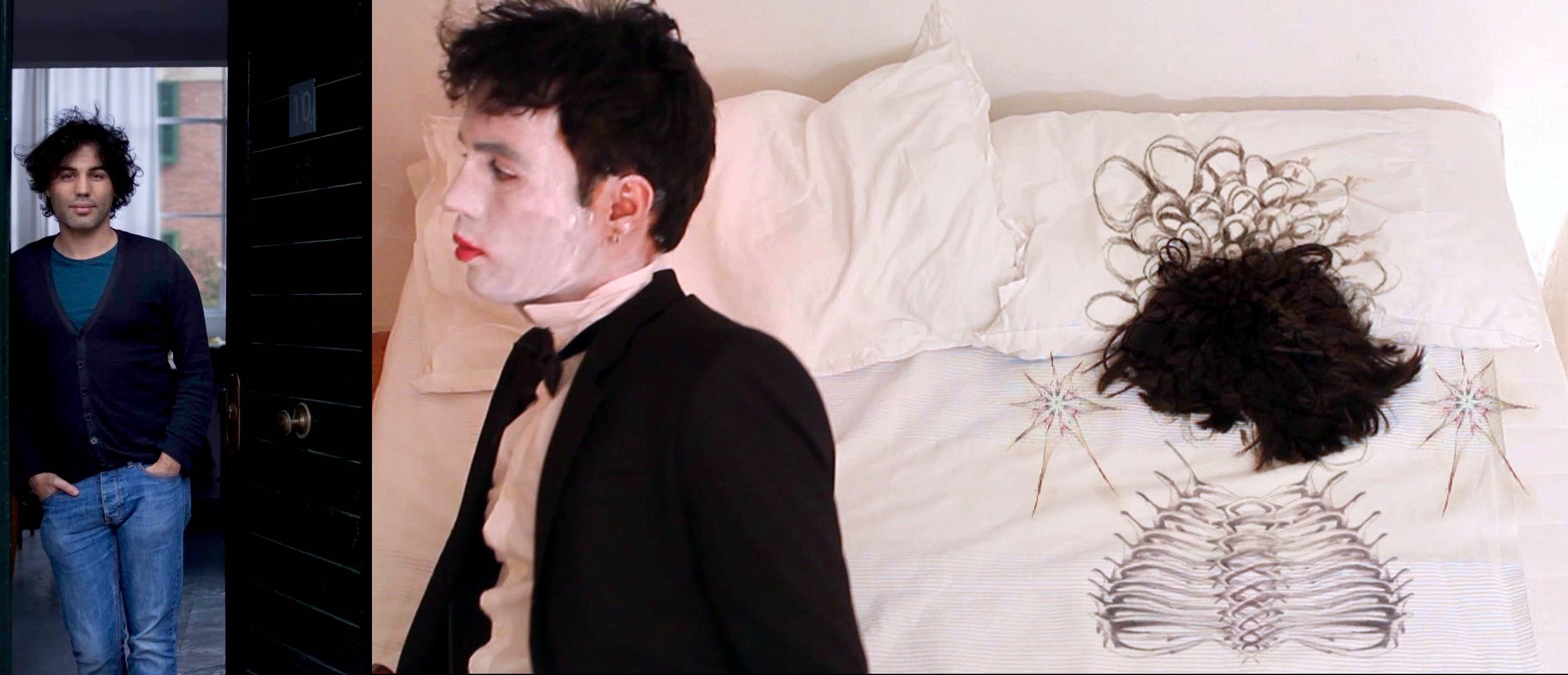
Albert Merino
Albert Merino develops a wide imagery within he intervenes and transforms reality. Using several graphic resources he explores the architecture of images and the capacity to transform them with contemporary techniques. His language often borders on absurdity and irony. Through a manipulated image he inquires the borders between simulation and truthfulness. He is interested in decompose the visual language experimenting with diferents forms of narration covering from non narrative to comedy or fake documentary. His subjects range from the condition of the individual in contemporary society to the imaginaries of collapse and the political use of symbols and images
He is Bachelor in Fine Arts from the Universities of Barcelona (UB) and Kunsthochschule Berlin Weißensee (KHB) where he specialised in Videoart. In Berlin he completed later his postgraduates studies as ‚Meisterschüler‘ under the tutelage of the artist and professor Inge Mahn
His work has been shown in a big number of international festivals and has ben presented in institutions and museums such as Arts Santa Mònica (Barcelona), Académie de France, Palais de Tokyo (Paris), Les Abattoirs (Toulouse), MEIAC (Badajoz), Nam June Paik Art Center, Songwon Art Center (Seoul), MOCA (Taipei), among others as well as in art fairs like Los Angeles Art Fair, Beijing Art Fair, ARCO, or Art Basel Hong Kong.
In his career, it is worth highlighting the individual exhibitions in the Trapezio space (Madrid), the IMA creative space (La Paz), the Chapel of Pronillo (Santander), Espai Souvenir (Barcelona) or his participation in group exhibitions at the Alternative Loop Space (Seoul), Galleria Boccanera (Trento), C1 Espace (Berlin), Sant Andreu Contemporani (Barcelona), CCCB (Barcelona), DIAS Kunsthal Vallensbæk (Denmark), Corner Gallery (Madrid) or the biennials of Wroclaw, (Poland) or Cerveira. (Portugal). His carrier has been recognized with several international awards such as ‚First Award of the videoart competition of Astillero‘ (2015) ‚First Award Videoakt 03 Videoart Biennial‘ (2013) ‚Award Madatac best videoart work‘ (2012) or ‚1st Award LUMEN EX Festival‘ (2011)
He was artist member of the French Academy in Madrid and he have realised several artist residences between France and Spain.
Participant in
CologneOFF VII – 7th Cologne International Videoart Festival 2011
CologneOFF VIII – 8th Cologne International Videoart Festival 2012
CologneOFF IX – 9th Cologne International Videoart Festival 2013
exDox – Experimemtal Documemtary Festival 2012, 2013
CologneOFF X – 10th Cologne International Videoart Festival 2014
animateCologne – Cologne Art & Animation Festival 2011, 2013, 2014, 2016
artvideoKOELN – audiovisual experiences 2015
The Wake Up! Memorial 2017
The Refugee Memorial 2017
The W:OW Project 2018
Wake-up! Climate Chamge 2022
Albert Merino is participating in total in about 50 videoart programs curated by Wilfried Agricola de Cologne shown together with networking partners all over the world.

Albert Merino
Albert Merino (Spain) – The City and The Other, 2010, 3:09
Albert Merino (Spain) – Hidden Mud, 2010, 7:42
Albert Merino (Spain) – Les Bagneurs, 2010, 3:50
Albert Merino (Spain) – The White Rain, 2010, 8:10
Albert Merino (Spain) – Le Badinage, 2010, 6:32
Albert Merino (Spain) – Lot’s Shadow, 2011, 6:40
Albert Merino (Spain) – Compulsive Self-portrait, 2011,05:46
Albert Merino (Spain) – Memories of Detachment, 2021, 18:00
Albert Merino (Spain) – Bestiary, 2018, 5:10
Albert Merino (Spain) – The Present Condition, 2020, 18:18
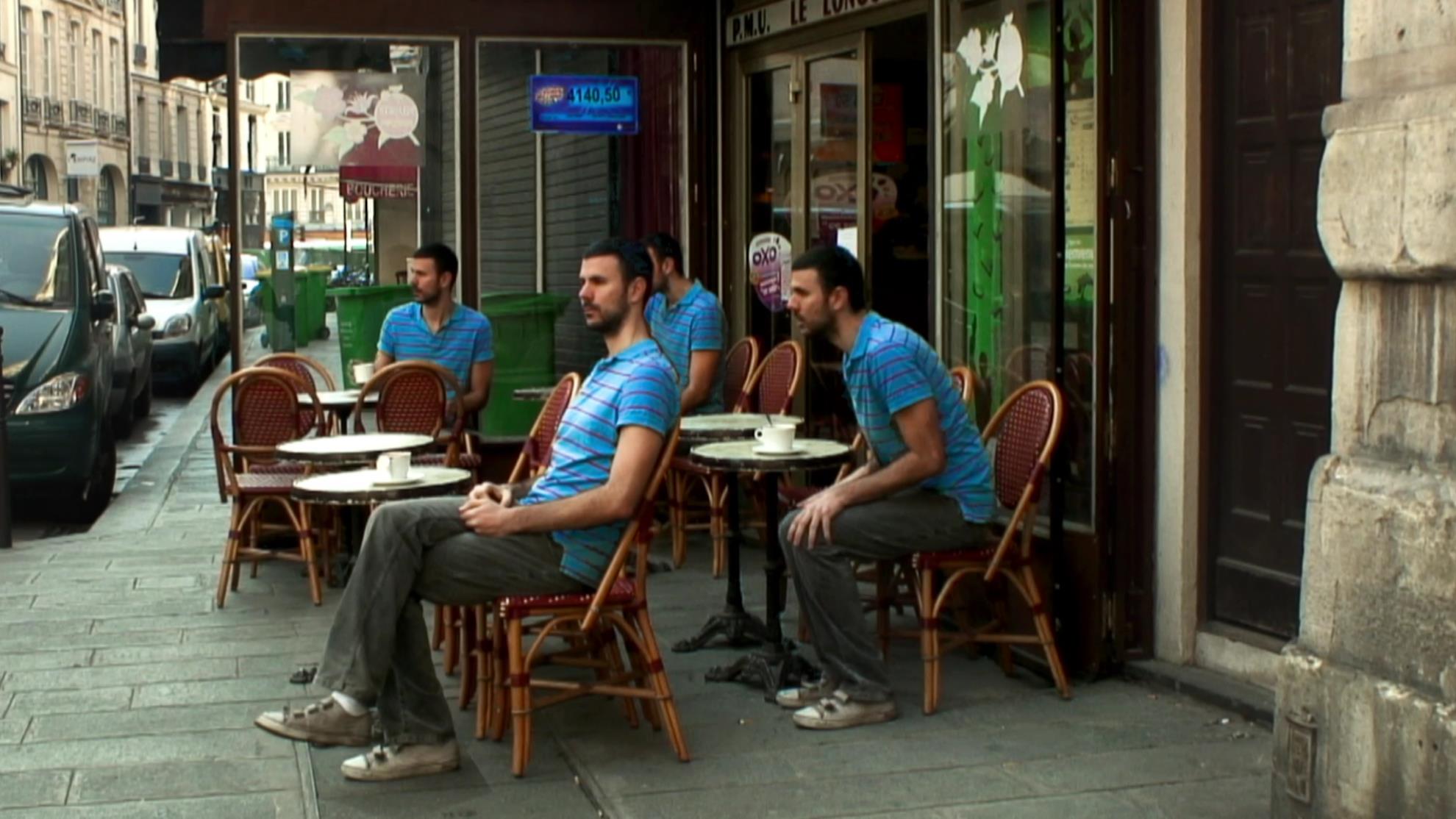
 Click to view the video
Click to view the videoAlbert Merino The City and The Other, 2010, 3:09, 2012, 3:55
The City and The Other, 2010, 3:09, 2012, 3:55
A character who travels through a city sees himself reflected in all the people around him. All the inhabitants of the urban space turn out to be the same person; the different and the otherness have disappeared. The uniformity is suddenly broken by a chance encounter. This final encounter with the different ends up transforming everything that surrounds the character. People stop being a reflection, to become ‘the other’.
The city and the other is a story about the relationship of the individual with the environment and how we understand the strange as a projection of ourselves. The individual faces a world where the only certainty he has is the existence of his being.
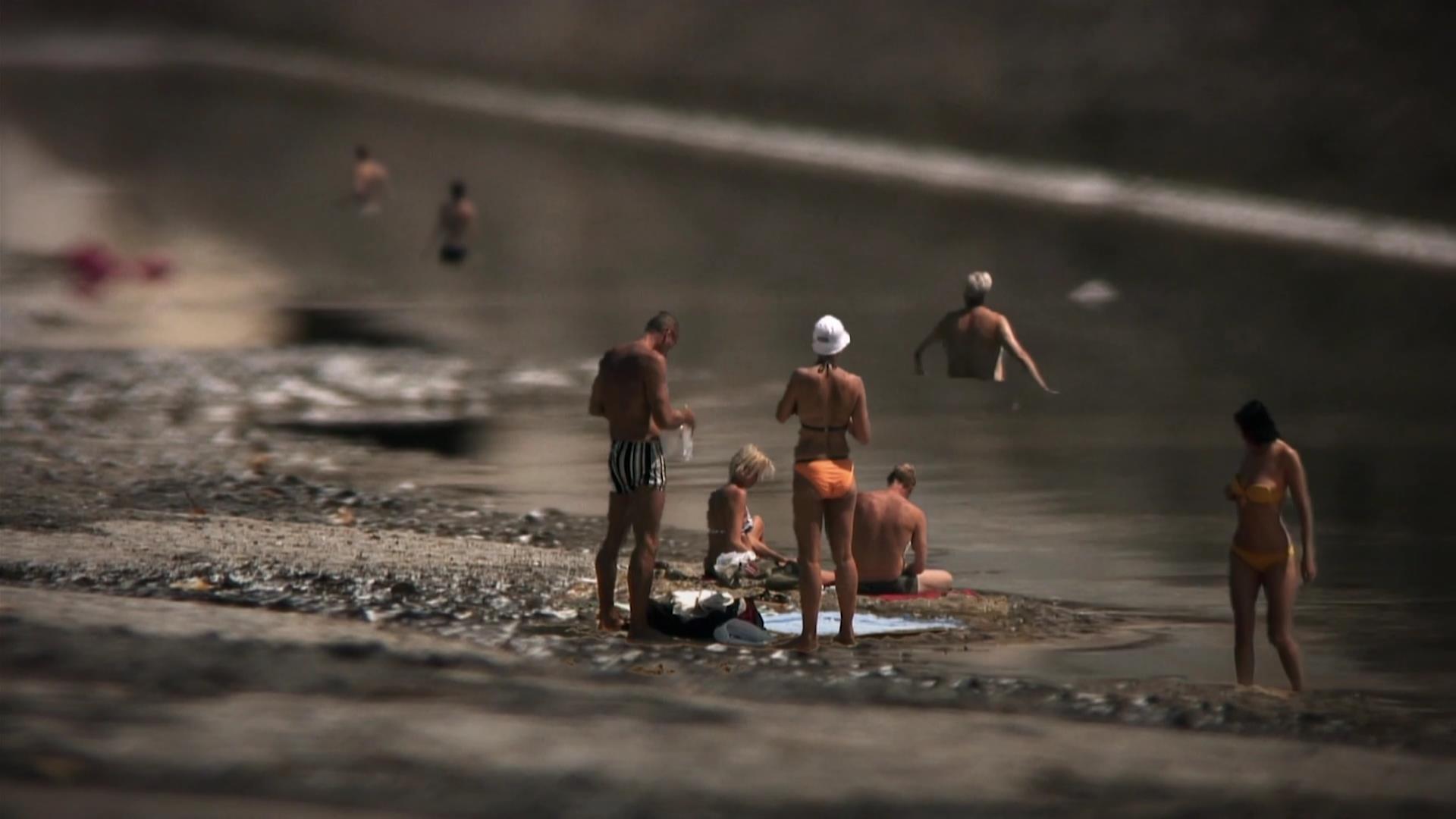
 Click to view the video
Click to view the videoAlbert Merino The City and The Other, 2010, 3:09, 2012, 3:55
Les Bagneurs, 2010, 3:50, 2013, 3:15
Cities hide residual spaces in the shadow of their great icons. These spaces, which often go unnoticed by the observer, are used to recreate snapshots that portray scenes of the masses of the contemporary world. Tiny scenes inspired by pictorial representations from the late 19th century or early 20th century, where the idealized landscape of the painters is replaced by a flawed environment.
The juxtaposition of everyday scenes on these out-of-focus spaces and the contrast generated by this decontextualization act as a metaphor for an urban space where experience has been displaced by simulation.
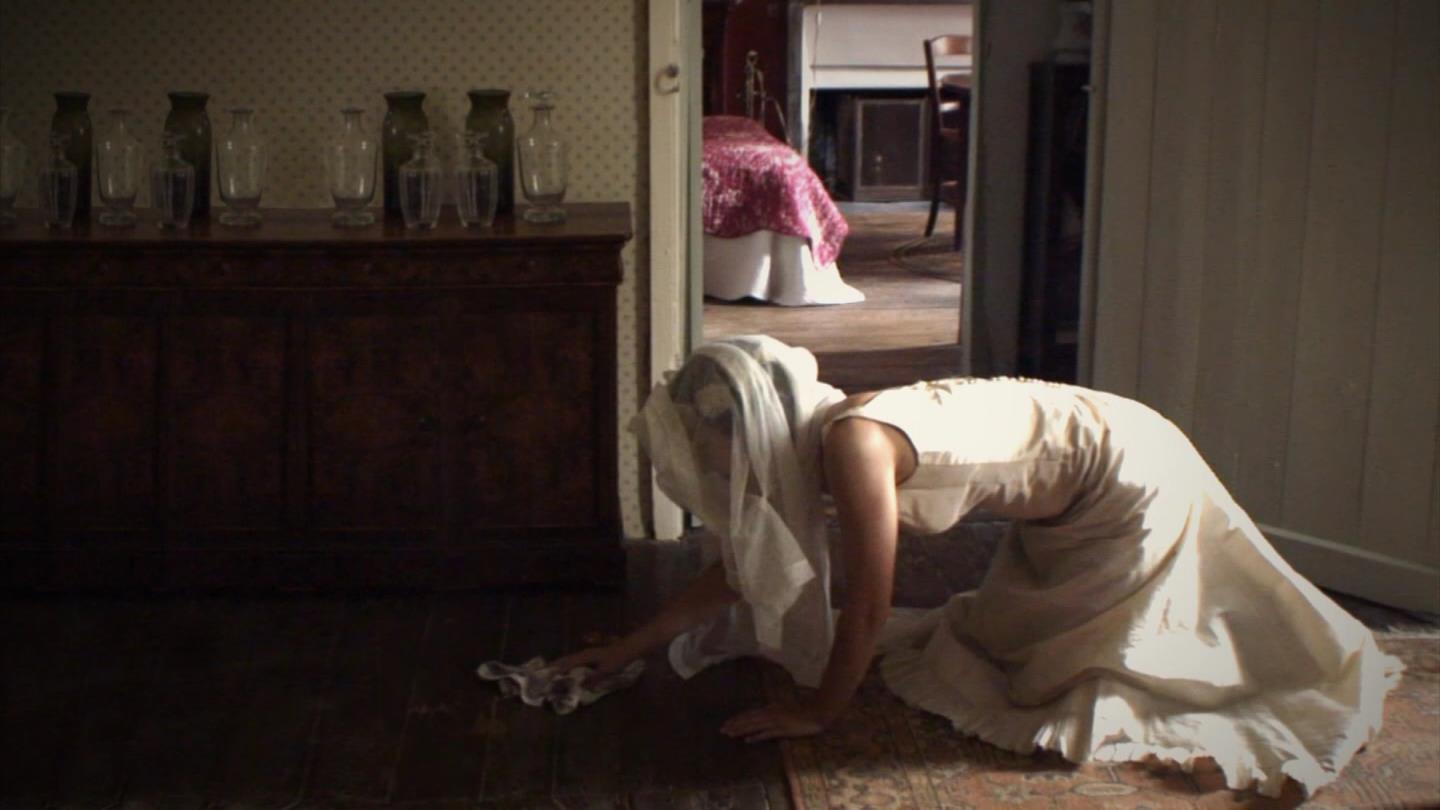
 Click to view the video
Click to view the videoAlbert Merino Hidden Mud, 2010, 7:42
Albert Merino (Spain) – Hidden Mud, 2010, 7:42
Time is deposited in layers that space accumulates in the form of sediments. Several of these temporal layers are superimposed in this video, making a domestic space coexist with its absences and its wounds.
The elements of comfort, the furniture and the objects become an oppressive scenery that is at the same time a space of confinement and confinement. The familiar symbols and the everyday are questioned through a series of disconcerting apparitions. The conventions of a certain social order are questioned within a deceptive universe where appearances reveal to us the existence of an internal order beyond what is visible.
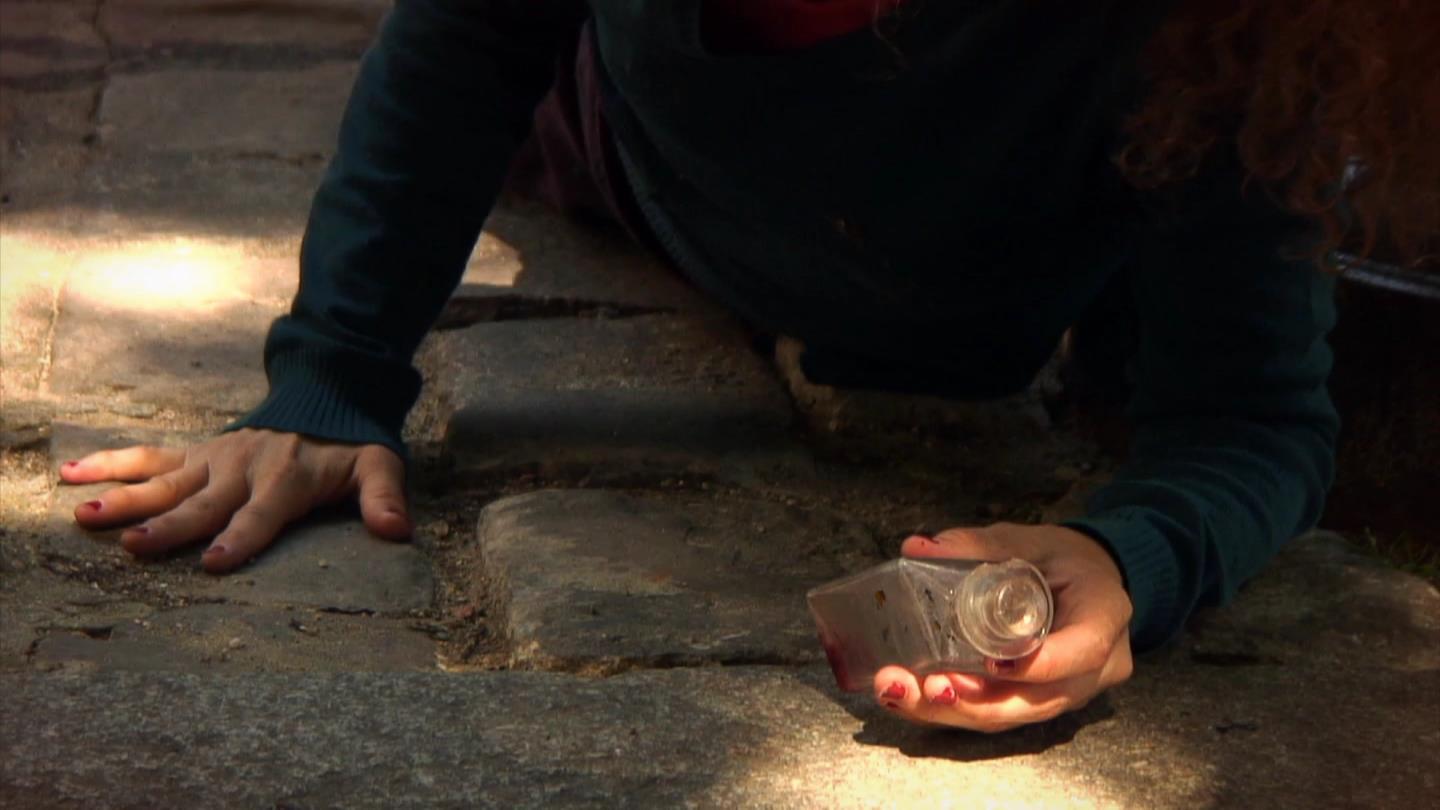
 Click to view the video
Click to view the videoAlbert Merino Le Badinage, 2010, 6:32, 2016, 8’20
Le Badinage, 2010, 6:32, 2016, 8’20”
A ballerina is trapped inside a lamppost until she manages to jump out of it. Upon reaching the ground she realizes that she cannot move her legs. After several unsuccessful attempts to get up, she ends up discovering a strange container with luminous glass inside her. These small lights, contained in her jar, will teach her the way to defeat gravity.
It is a videodance piece that in turn mixes elements of mime within a fantastic and unreal framework. It develops a story about the ability to collaborate and mutual support, when two helpless characters manage to walk together thanks to the union of their disabilities.
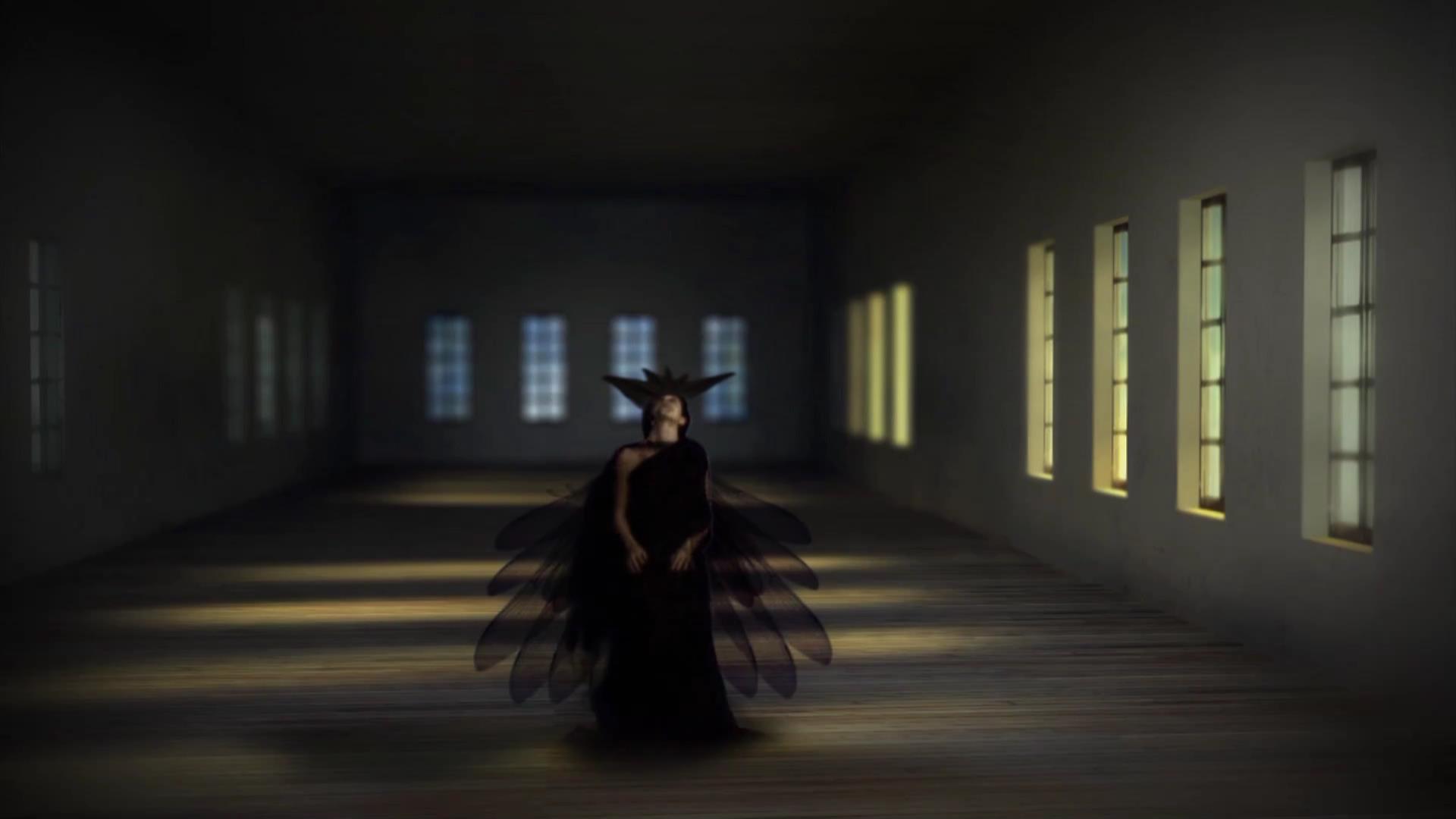
 Click to view the video
Click to view the videoAlbert Merino The White Rain, 2010, 8:10, 2013
The White Rain, 2010, 8:10
Based on oral narratives and collective imaginaries, ‘La Lluvia Blanca’ shows us a ‘wonderful story’ as an initiation journey. A story where linear time and logic are constantly transgressed, calling our attention to the mysterious potential of the environment that surrounds us.
Exploring those territories located between the real and the strange, different ghosts and fears appear in our path, populating an unreal universe where appearances take on unexpected forms.

 Click to view the video
Click to view the videoAlbert Merino Lot’s Shadow, 2011, 6:40
Lot’s Shadow, 2011, 6:40
An empty interior space serves as a stage for the staging of certain pictorial imaginaries. Among them is the painting of ‘Lot’s daughters’ to which Antonin Artaud alludes in ‘The Theater and its Double’. The model of gestural dramaturgy proposed is compared to the plague and to this strange painting that gives traditional history a completely new meaning and at the same time transgressive.
‘Lot’s Shadow’ is an interior journey through this imaginary and a way of inhabiting space based on a gestural narration where all textual aspects have been omitted.
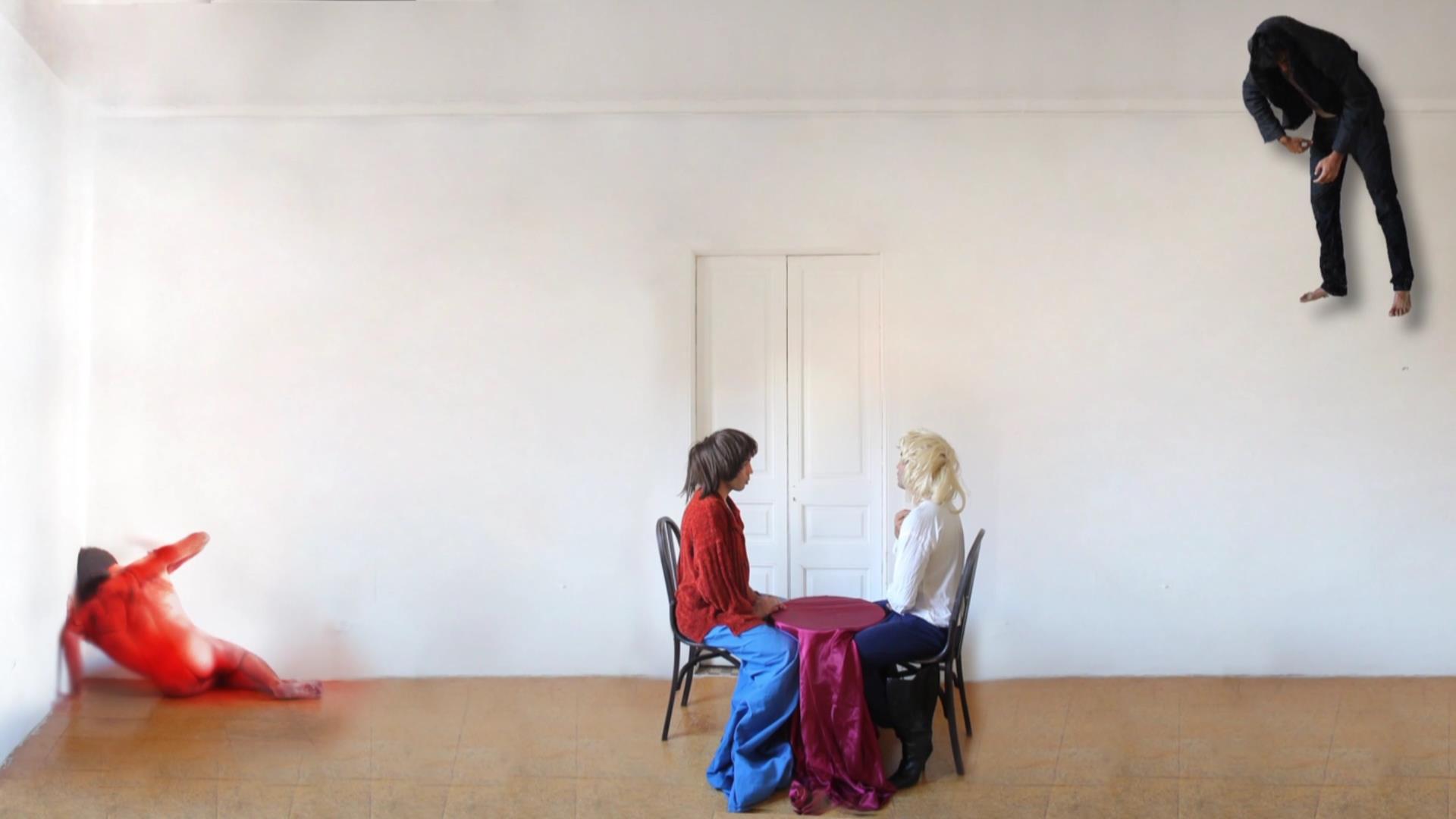
 Click to view the video
Click to view the videoAlbert Merino Compulsive Self-portrait, 2011,05:46
Compulsive Self-portrait, 2011,05:46
Self-portrait made as a commission for the celebration of the Flux Festival of author videos during the year 2011.
A strange tunnel inside a sea of cotton appears before our eyes; when we enter fantastic elements of a plant world come our way… in this way we enter an interior cosmology created from the accumulation of residual thoughts… An introspection of the person where we find different postcards of everyday life together with random drawings and recreations fictional dreams Thus, a symbolic exchange is established between the person and their environment, revealing dark regions along with other bright ones.
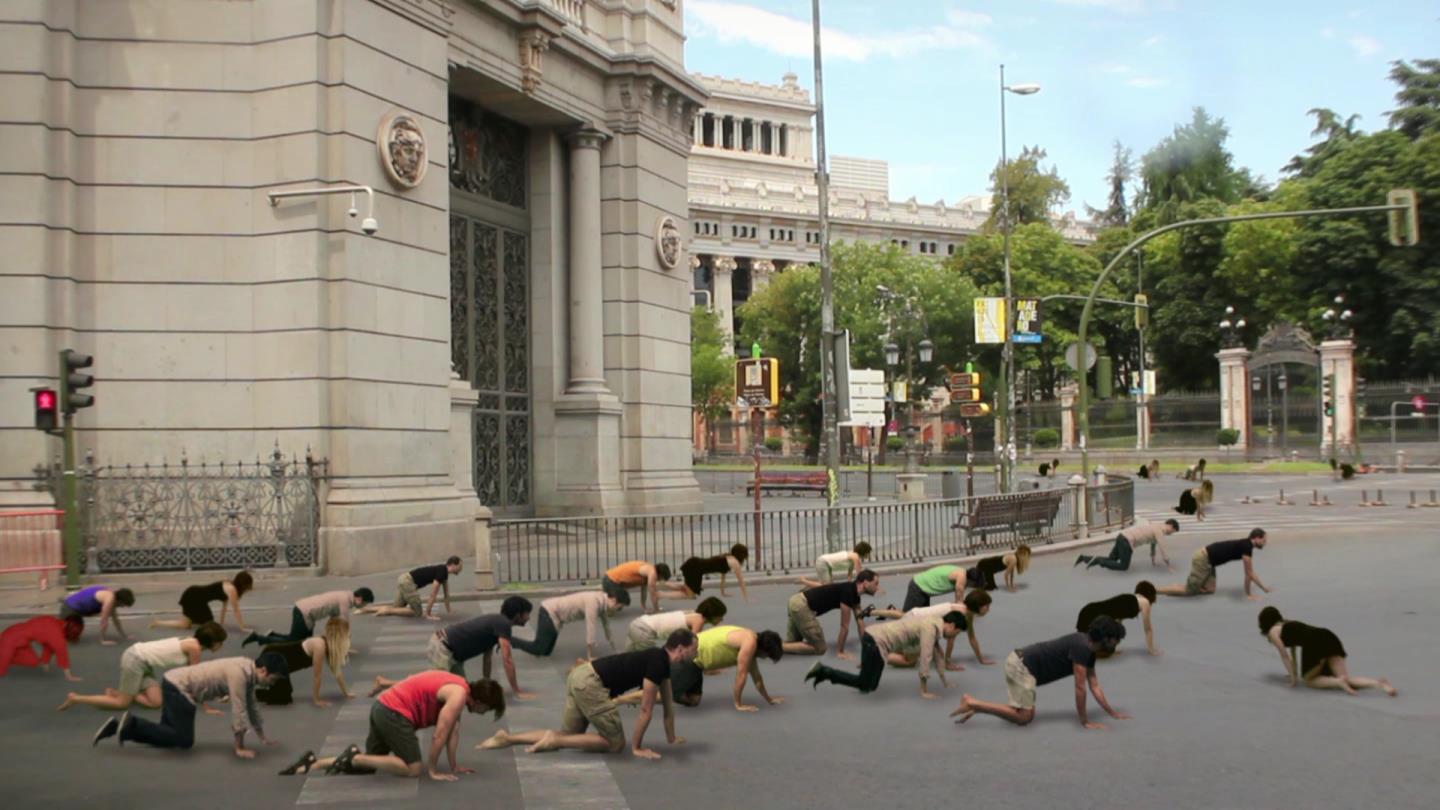
 Click to view the video
Click to view the videoAlbert Merino Bestiary, 2018, 5:10
Bestiary, 2018, 5:10
In bestiari we observe a great city where all human presence is only an architectural and symbolic reminiscence. We necessarily associate these symbols and the urban landscape with a human presence, but now this is emphasized precisely by its absence. However, this space is not empty, but is inhabited by the “other” by the beasts. Apocalyptic echoes suddenly appear in our heads, as if it were a post-war landscape or the result of a collapse… images that resonate familiar to us through the imaginary of cinema or the mass media. However, what we see is life, without any sign of destruction… life that takes other forms and establishes a continuity.
This substitution of the human leads us to the question about the relationship with the other, with what is alien to us, with the “beast”… Nature ceases to be a contained element, and now flows within the human space, also evoking the possibility of its finiteness…
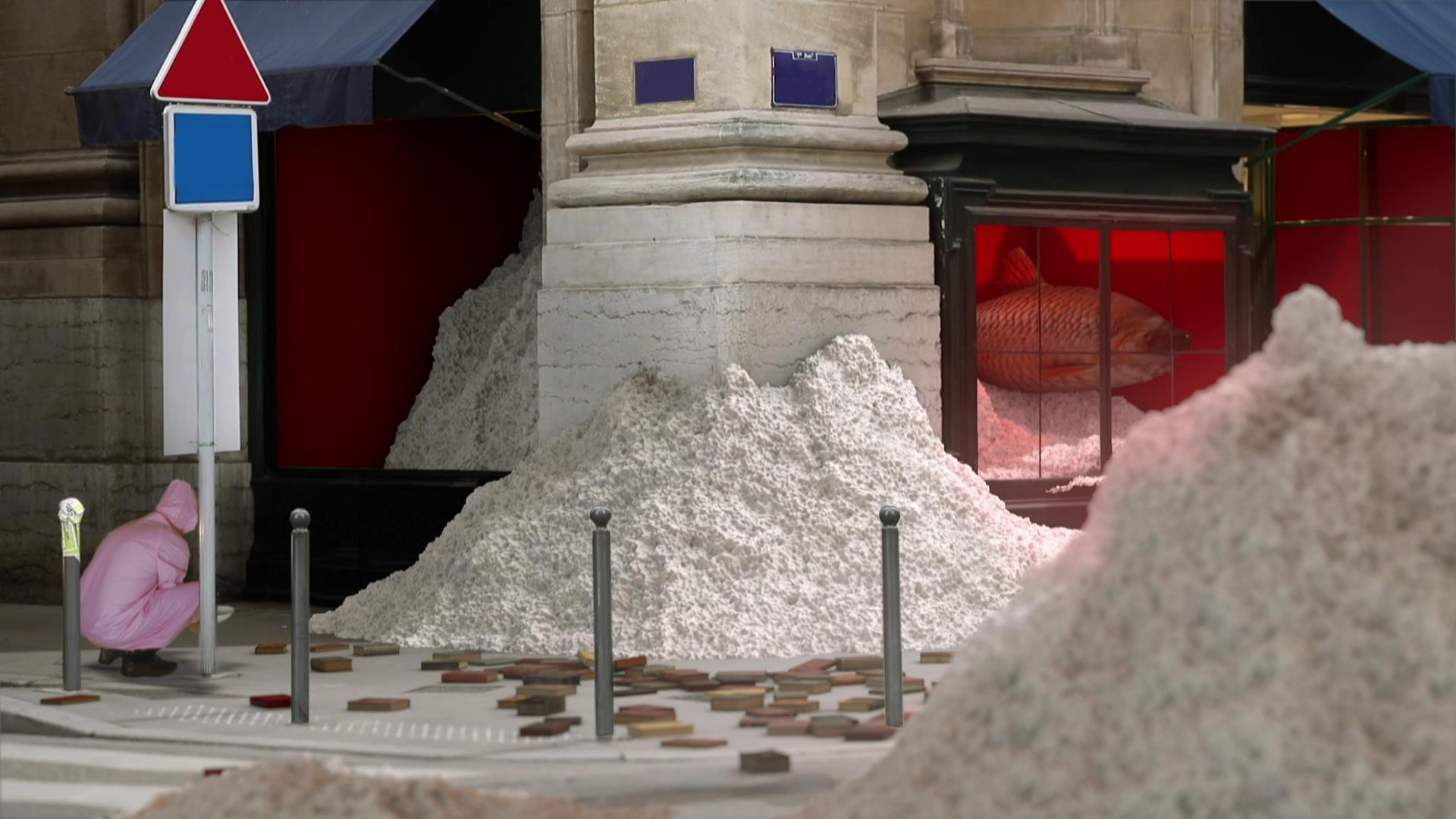
 Click to view the video
Click to view the videoAlbert Merino Memories of Detachment, 2021, 18:00
Memories of Detachment, 2021, 18:00
Detachment refers us twice to the material and the affective, linking the emotional with the physical at the same time. Detachment can be a painful but at the same time necessary gesture in the same way that the imaginaries of collapse do not necessarily imply an end but rather a desired beginning.
In the Memoria del desprendimiento, the collapse is shown as the appearance of non-specific elements that appropriate the urban space and that respond to collective imaginaries; imaginaries that reveal details of the behavior of a society.
These cultural imaginaries are built from real or modified images that have been socially agreed upon and are directly related to the evolution of image registration and manipulation technologies. Images taken or produced that articulate political narratives that in turn serve as supporting documents. The former have been selected and the latter produced and disseminated as consumer objects in the construction of a story. What is the role we attribute to the images of the collapse and how are the control devices justified? In the architecture of imaginaries, the fantasy is replaced by the possible
The elements in the video serve as metaphors for the accumulation of information and knowledge, as well as the increase in entropy or decline, through a plot that reveals contemporary spillover scenarios.
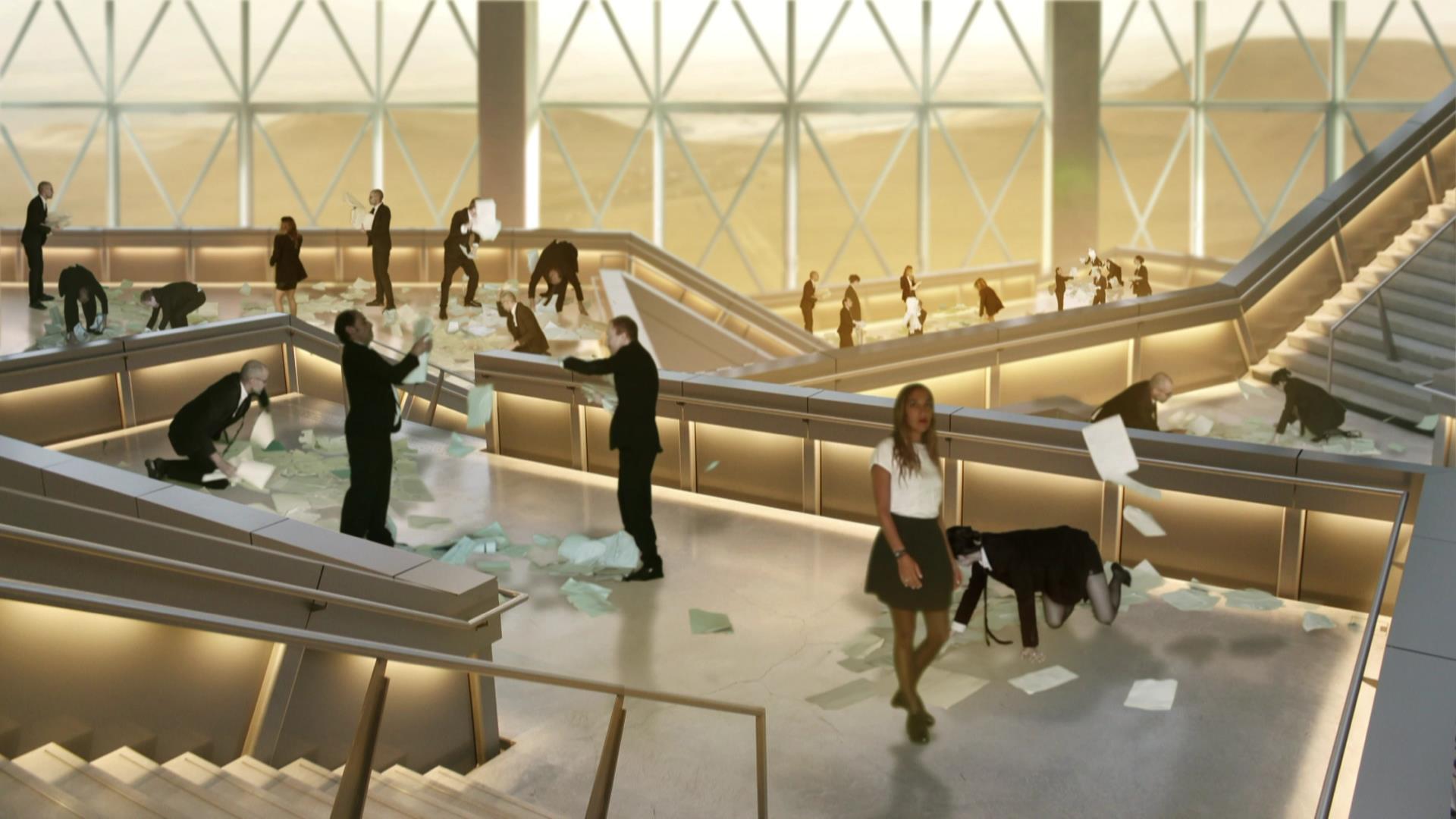
 Click to view the video
Click to view the videoAlbert Merino The Present Condition, 2020, 18:18
The Present Condition, 2020, 18:18
The present condition is a reflection on the political use of the territory and the concept of collapse applied to the social and the political. In the present there is an aestheticization of economic and social discourses that is also projected through architecture and urbanism. , acting as the staging of a supposed prosperity. Architectural symbols often precede even the prosperity they aspire to represent: Representation becomes simulacrum. The symbol anticipates its function, and in a collapse situation, it is the testimony of a failure.
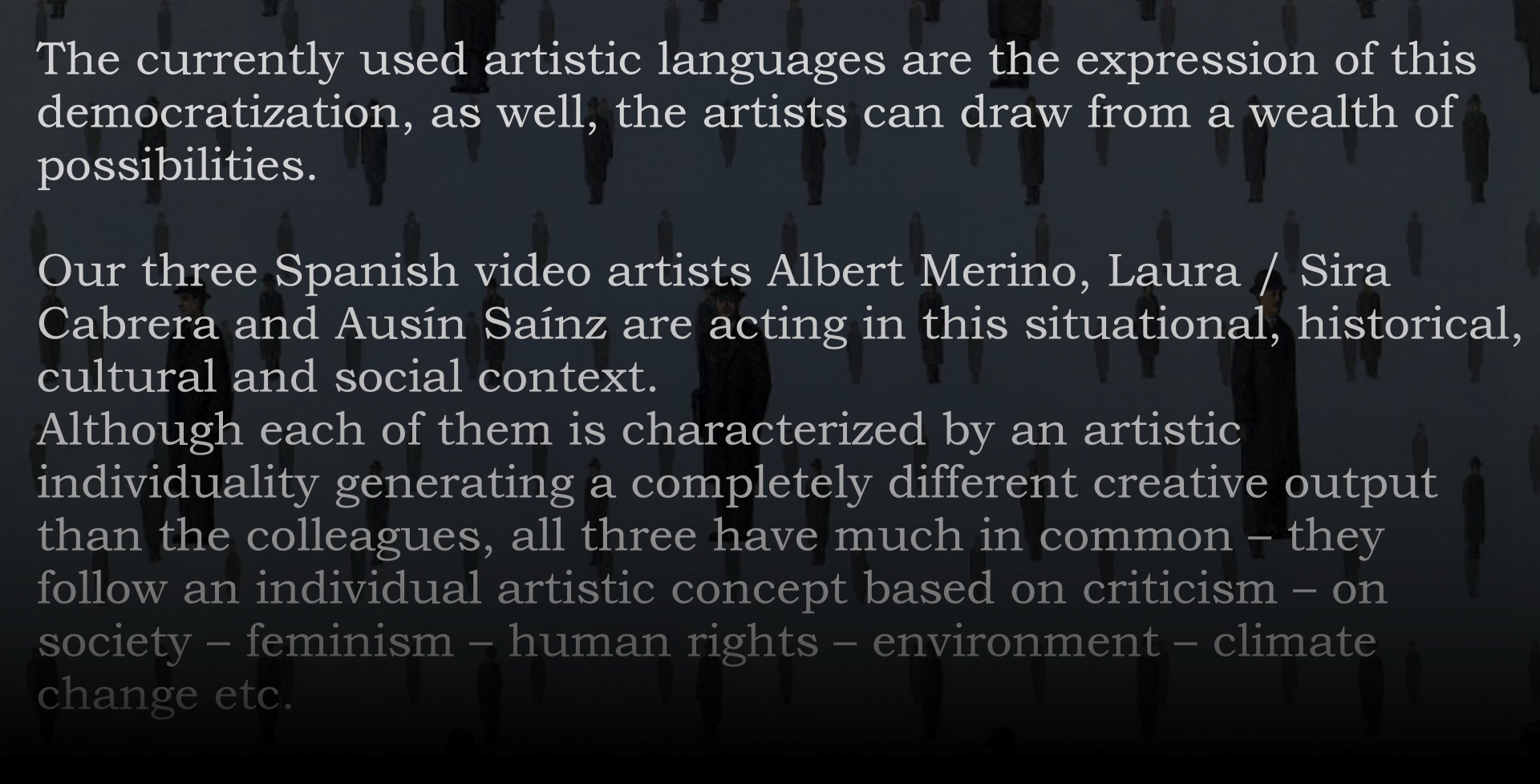

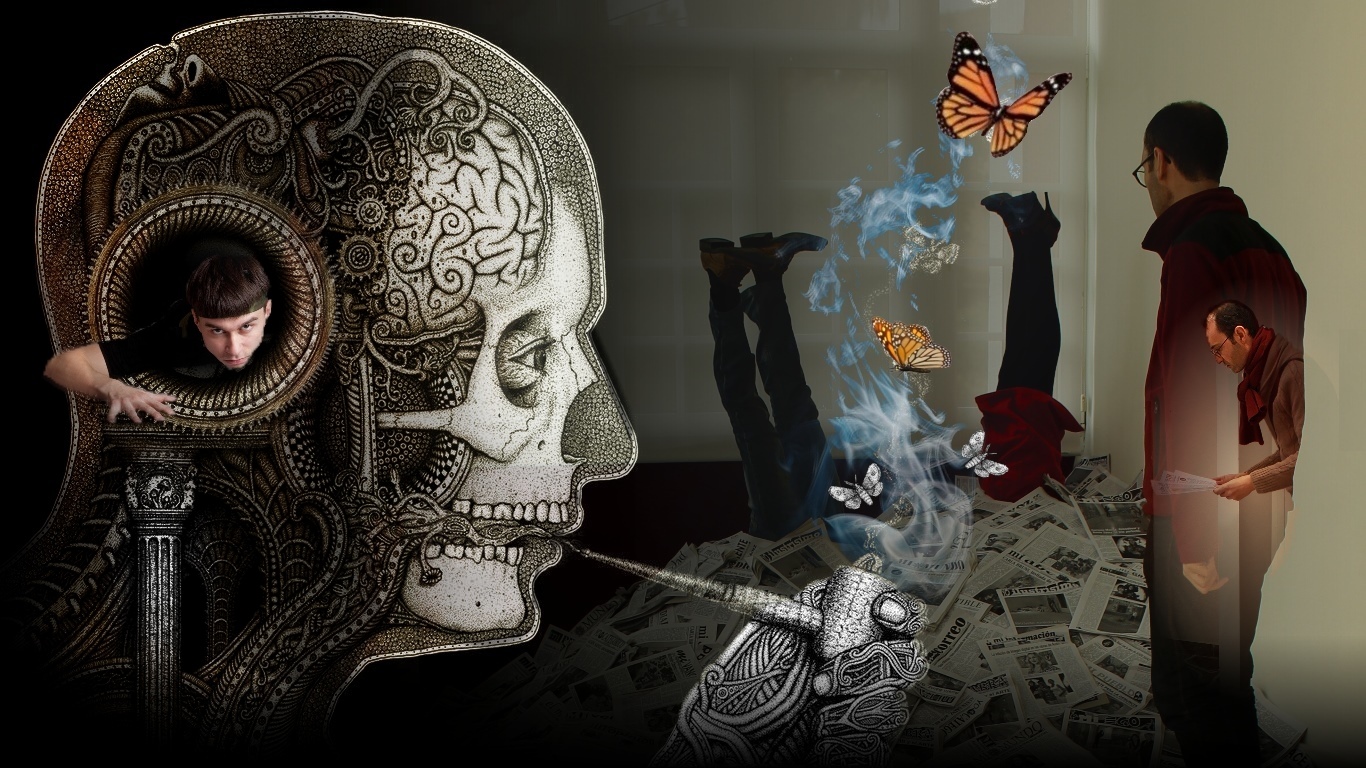


Ausin Sainz
Spanish videomaker
Interview: 10 questions
VideoChannel Interview Project
1. Tell me something about your life and the educational background I am a Spanish artist.
I studied Fine Arts at the University of Salamanca. I have studied three specialties Graphic design and visual communication, painting and sculpture. Art has become my passion, but it is not my livelihood. I am a “teacher” of drawing in secondary education. This is my livelihood. My hobby and passion is art. I started painting, then I introduced the sculpture, when I exhibited I also began to paint the floors with colored adhesive tape, introducing the installation. Then carry out urban interventions, to directly influence citizens who do not go to art centers. To document them, I introduced the video. In this way, and without abandoning the other artistic facets, I have focused on this medium. I find it the funniest and most interesting of all. Without the video, my artistic facet would not be the same.
2. When, how and why started you filming?
When I was a student, I had a subject, video, in college. They forced us to record. We didn’t have devices as accessible then as we do now. For a few years I couldn’t do any work, since I didn’t have a camera or a mixing table. With technological advances, I was able to have a still camera that also recorded video. The first recordings were of my interventions. They were very simple. Little by little I made the execution more complex. In this way, videos with their own identity emerged. To achieve more interesting effects, apply what I had learned working in photomontage, using image editing software. So I started to play with the incorporation of still images in the videos. Then I also incorporated moving images. The execution is always simple.
3. What kinds of topics have your films?
I almost always work on issues of social denunciation. They come naturally to me. They are very linked with the news of the moment. Over time I have been opening up the possibilities, including more aesthetic, documentary and fictional themes, always within experimentation. All of them are subject to lack of resources. It is an incentive to exercise more imagination.
4. How do you develop your films, do you follow certain principles, styles etc?
At first I let myself go. Since I only work with my sister, Ana María, I have a lot of freedom and flexibility. The improvisation is continuous. They are very free jobs. I only have the condition of the language. As I do not speak the English language, I am limited. I resort to alternative sounds and expressiveness. On many occasions it gives more information than verbal language.
5. Tell me something about the technical equipment you use.
It is very basic. Fortunately, technology has come a long way in recent years. With a mobile we can record with an acceptable quality. I have a small video camera with which I make almost all the recordings. A tripod and little else.
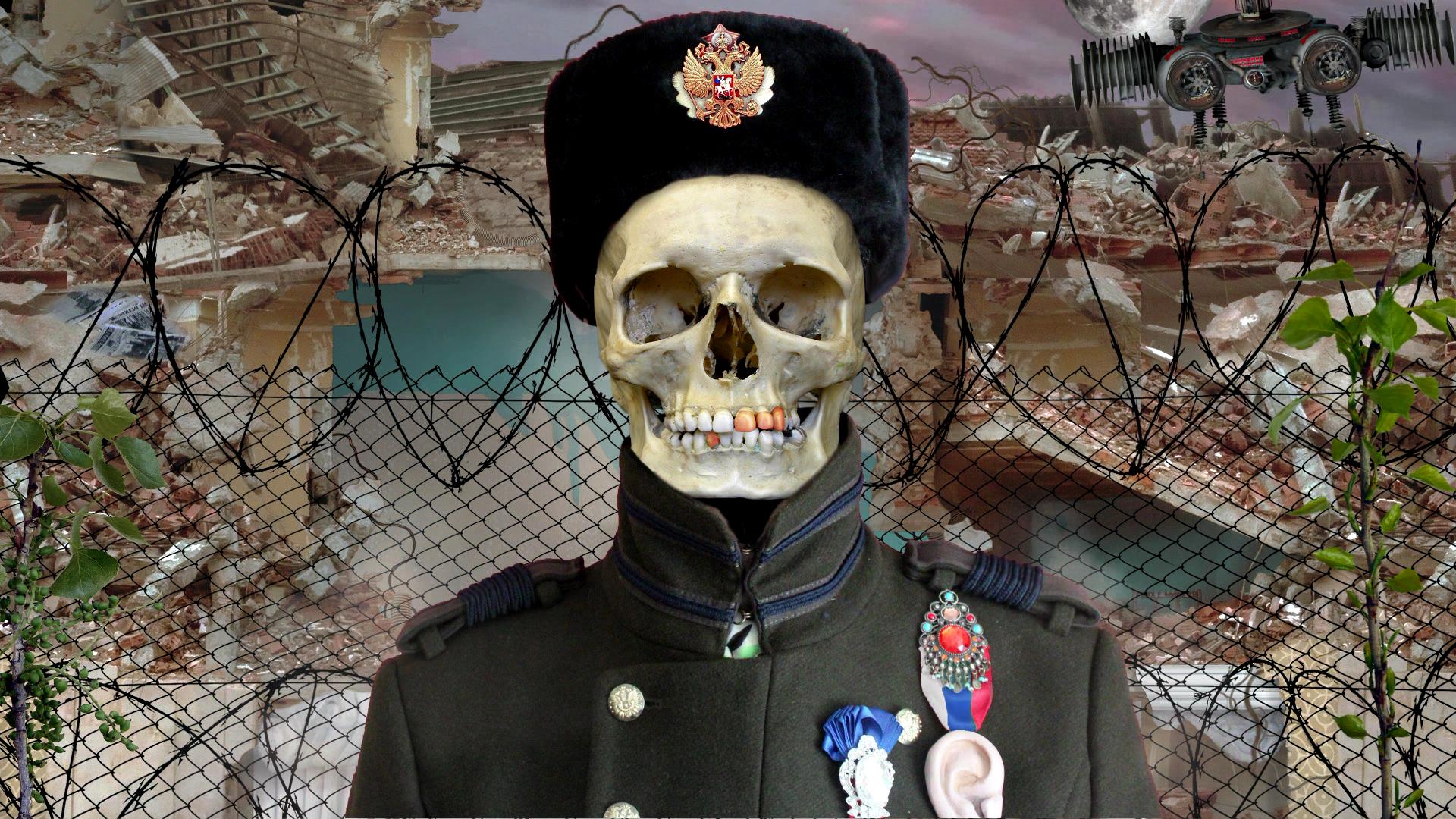
Ausin Sáinz video – Spain Catalonia_Russia
6. These days digital technology is dominating also video as a medium. In which way the digital aspect is entering the creation of your videos, technologically
and/or conceptually?
It is the basis of the work. In the editing process is when I give shape to the recorded material. I play with still images, combining them with moving images. They are very simple executions, although later they are integrated into a somewhat more complex reality.
7. How do you finance your films?
I don’t finance my films. They are very simple jobs and I resort to my reality, so as not to generate expenses. Without means, worthy results can also be obtained. I’m not looking for commercial results.
8. Do you work individually as a video artist/film maker or do you work in a team?
if you have experience in both, what is the difference, what do you prefer? I have individual works and others I do as a team with my sister Ana María. She also does a lot of artistic work and exhibitions. She plays a very important role, since she has a very peculiar feminine look. She is very creative and hardworking.
9. Who or what has a lasting influence on your film/video making?
I have no notable influences. I let myself be carried away by intuition and actuality. My evolution is given by the challenge that the execution of each one of the works supposes, and the needs that I impose on myself.
10. What are your future plans or dreams as a film/video maker?
I would like to have more free time to be able to do more work. I would also like my sister to be able to move to our city, to be able to work as a team on all projects. I would also like to be able to continue evolving in video editing, experimenting with images and sound. my dream would be that they could reach many viewers and could modify inappropriate behaviors or thoughts.
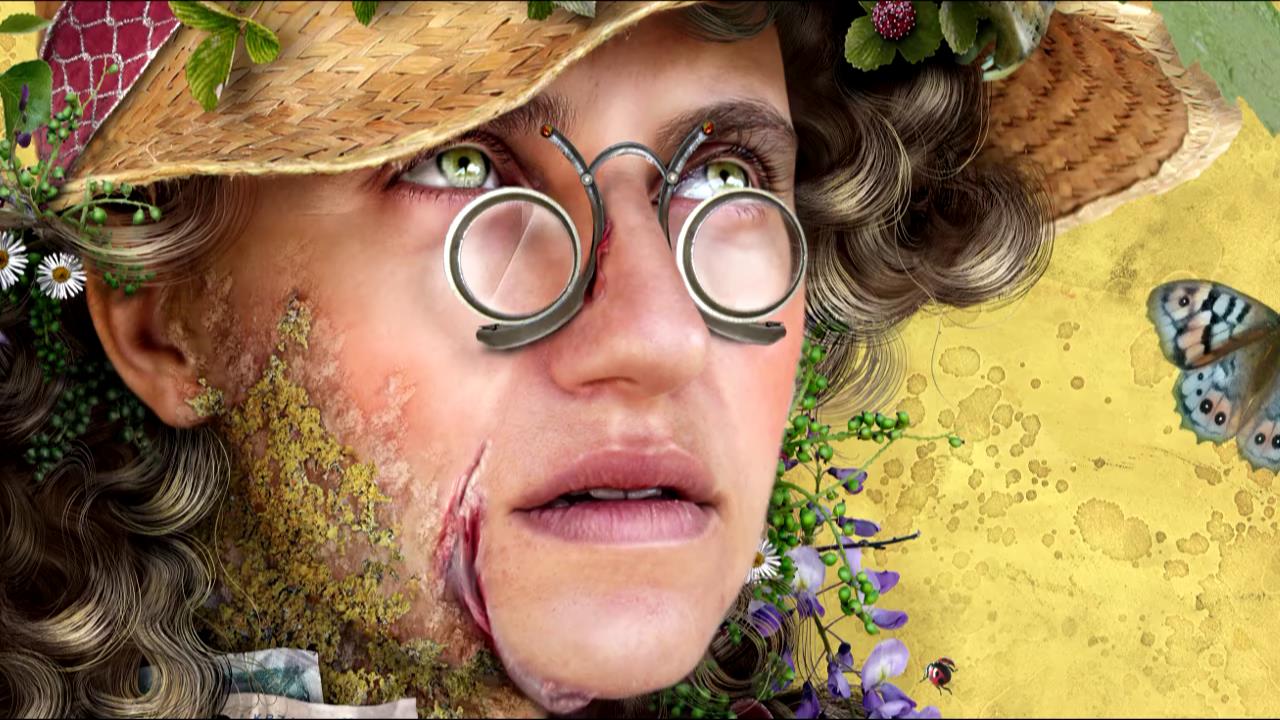
Ausin Sáinz painting
Ausin Sainz
Spain.
1. Tell us briefly about your career in art?
Briefly I could tell you that after spending my adolescence painting as an autodidact, I managed to access the Faculty of Fine Arts in Salamanca, where I began to take the first regulated notions. I specialized in Painting, Sculpture, Graphic Design and Audiovisual Communication. My works have been seen in numerous spaces and locations, both in Spain and abroad such as London, New York or Cuba. Although this seems very grandiose, in reality my works have not been shown in large spaces.
2. What is the motive that drives an artist to become multidisciplinary?
In my case, it has been the result of a natural evolution. I use the technique that best allows me to convey the idea I wish to communicate. This circumstance contains many difficulties since I am obliged to control a little of everything, being my best ally ingenuity. I started painting. It is the most accessible and cheapest technique. I soon became interested in sculpture. Without realizing it, I began to paint the floors with adhesive tape, producing a fundamental transformation in my work, both in concept and in execution. The spectator was forced to step on the installation, producing his involvement. Later I introduced works in which the spectator ceased to be a passive object, seeking his interaction. This need to involve citizens made me leave the exhibition hall, carrying out urban interventions. To record them I had to resort to video and, incidentally, I introduced video art. Everything is spinning, I’m missing the photomontage. This arose accidentally, when I had to make a poster in B/W to promote one of my exhibitions. I liked the idea of making a poster as a work in itself. After a lot of work I have managed to acquire great quality in the photomontages, being the pieces that currently interest galleries the most because they have a less aggressive character. Actually, for its execution I have to resort to painting but with photographic bases. It involves more WORK than the pictorial technique but impressive results are obtained.
3. What is your motivation when creating and choosing the themes?
My work is mainly based on social denunciation. It is not something that I have decided in advance, but that has been forged inside me without realizing it, the result of a natural evolution. Themes knock on my door. I am not conscientiously making sketches of the works but while I am working on one, I already have another in my head. Unintentionally he matures alone. It’s like it’s parked in front of me. As I can’t cope, the ideas that current events offer me pile up and, little by little, a selection is produced as a result of oblivion, or they take shape. Once the idea is clear, it is time to execute it.
The ultimate goal IS to move consciences. To attract the visitor’s attention I resort to a language that is not unknown to him and a pleasant appearance. Once the viewer stops, I try to turn mere contemplation into a process of reflection.
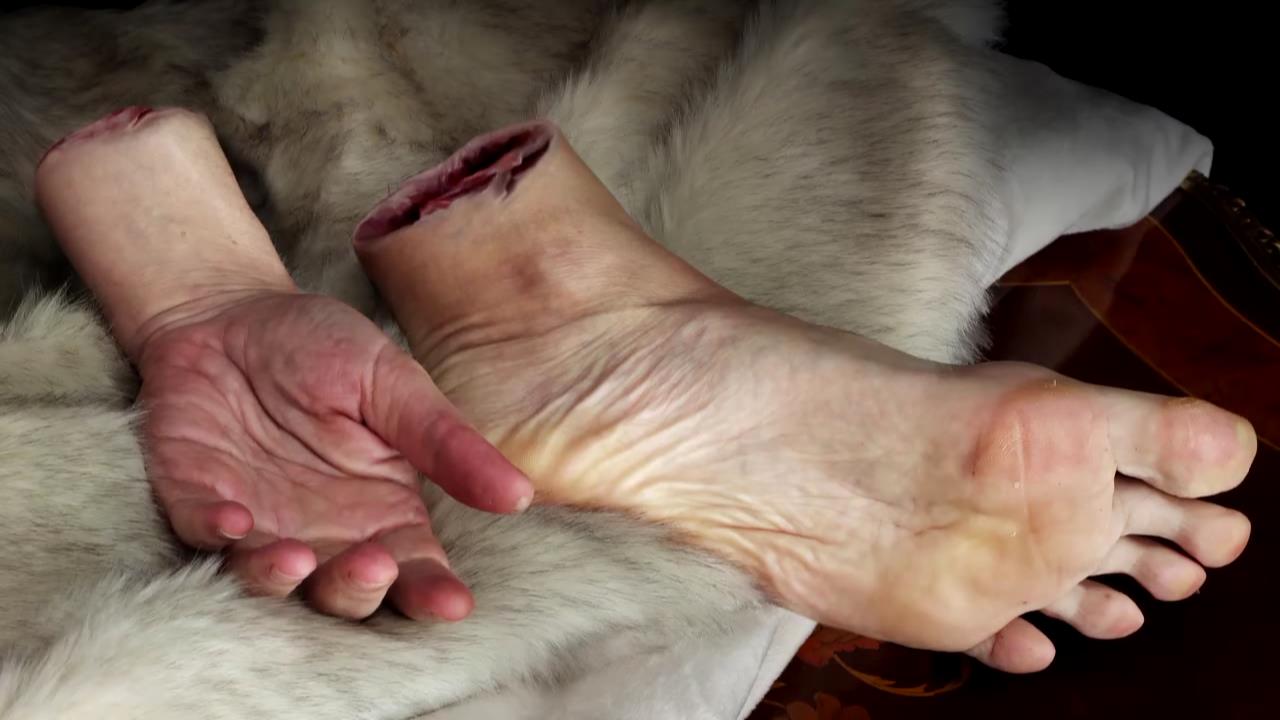
Ausin Sáinz – photo-montage
4. Is there a recurring message, or several, that you are interested in communicating through the work? Tell us about it.
Throughout my long career I have been developing various topics such as eating disorders, traffic accidents, personal image treated as an ephemeral good, personal identity, violence as a counterpoint to love. I have also made a comparison between our behavior with pets and with other humans, sexist violence, the lack of objectivity of the mass media, corruption, the crisis, urban speculation… There are many always open topics in which I can introduce a work at any time always depending on the interest that arouses me.
Working on these themes contains an added complexity and is not widely accepted within the commercial world, since they prefer white, friendlier work. But the worst experience that I have had to overcome has been in the month of February of this year 2014, with the censorship of my exhibition “Not suitable for all audiences” in an exhibition center of the Salamanca City Council as it contained two works that were not suitable for them. they liked. On the one hand, Bárcenas doing the potato dance with Rajoy crowned with shit on his head, and the other work dedicated to Infanta Cristina with another comb shit. Coincidentally, the same week coincided that the Infanta had to testify before the Judge for the Noos case. It is curious that other much more aggressive works go unnoticed, for the mere fact of being smaller or requiring a greater degree of understanding. Maybe I have to introduce new topics to denounce… since my goal is to achieve a slightly fairer world.
5. Do you feel identified with any artistic movement?
In this globalized world we receive information from the other part of the world at the moment, but despite that immediacy, I do not identify with any current artistic trend. The temporal distance to determine clear current trends is lacking. I feel isolated in my provincial world and at the same time virtually connected to other artists. It is curious that in my daily life I have no personal relationship or with artists, curators or people directly or indirectly linked to the art world of my town. Luckily, thanks to the internet, I can give projection to my work, overcoming the apathy that I cause in the crazy artistic circle.
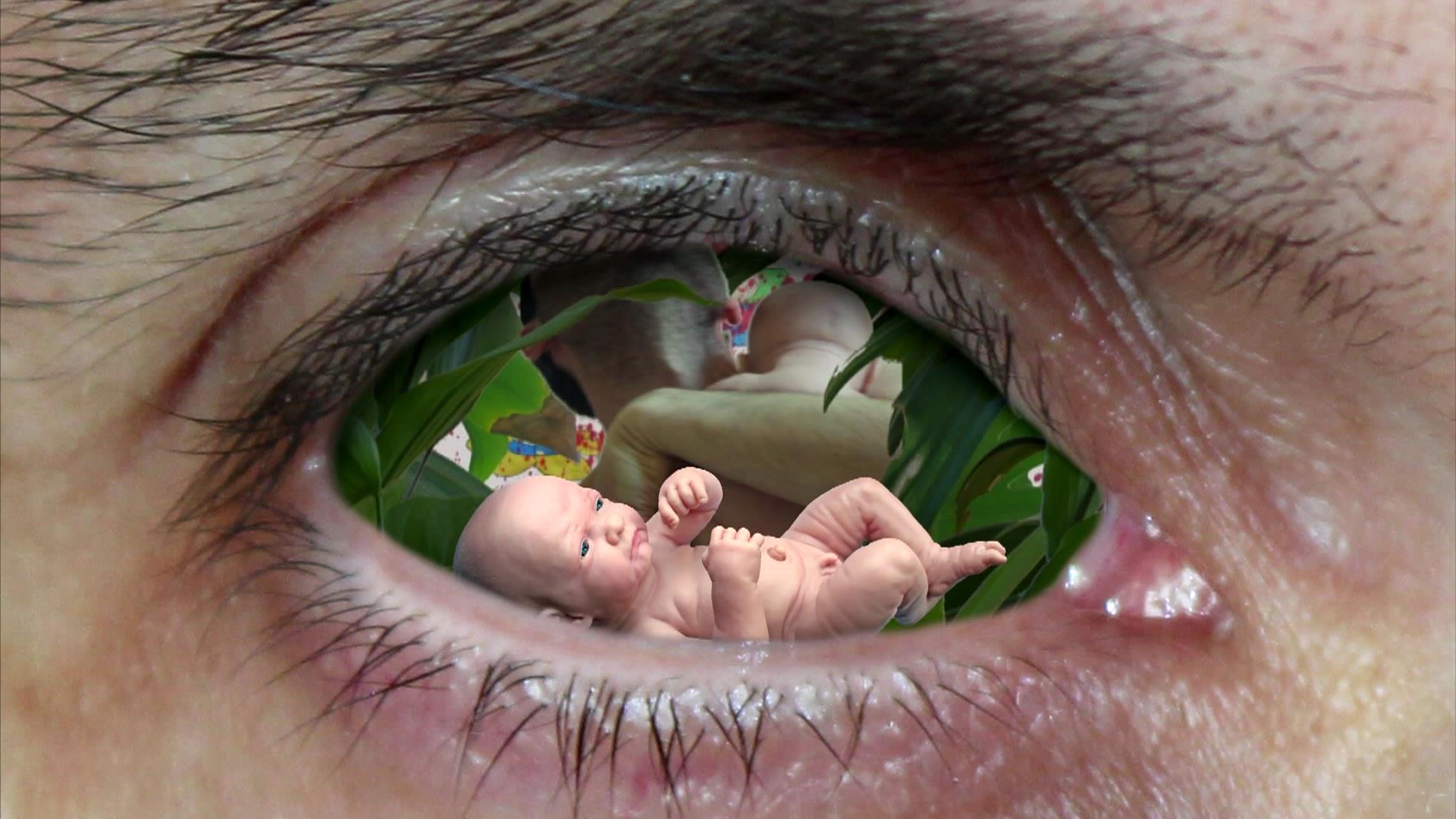
Ausin Sáinz video – The Unborn
6. How is the process of creating your work in terms of technique and materials that you use?
Not only do I develop an artistic facet, but I work with many techniques, linking each other to generate a global work, as I mentioned before.
I started painted on canvas. Since I felt the need to cover large surfaces, but did not have adequate means of transportation, I resorted to juxtaposing several canvases. As the backgrounds did not contribute anything to my work, I eliminated them, outlining the figures and distributing them on the wall. Finally, I resorted to industrially printed fabrics, selecting the motifs based on the theme to be developed and painting on them the essentials of the representation. In the final result I look for the integration between the two elements. In the small formats, I work on the backgrounds, experimenting with different techniques based on earth, varnishes and various paints. With the desire to extend myself in space, I substituted the sculpture for the installation. Later the installation itself will acquire its own identity. In video art I apply notions of photomontage in very simple executions without great technical fanfare but endowed with great creativity.
Tomorrow who knows if I will use other techniques. Everything will depend on the possibilities that they offer me, since in my case, the idea that I want to transmit is the most important thing and the technique is a mere means to reach the viewer.
7. Finally, a very subjective and open question. What is your personal vision of what Art means?
Duchamp already showed us that everything can be art…
All you have to do is go to any contemporary art museum. One does not know very well if a fire extinguisher is what it is or pretends to be something else. Its location will be a determining factor to include or discard it from the sample. It generates great confusion among the population disconnected from the world of contemporary art, as it has not evolved at the same pace. If we were all aware of this… we would all be artists and artists would have to call ourselves something else. In the end we do not stop being a tiny speck of dust in a vast universe.
From Salontanteo we thank Ausin Sáinz for giving us the opportunity to learn about his work.
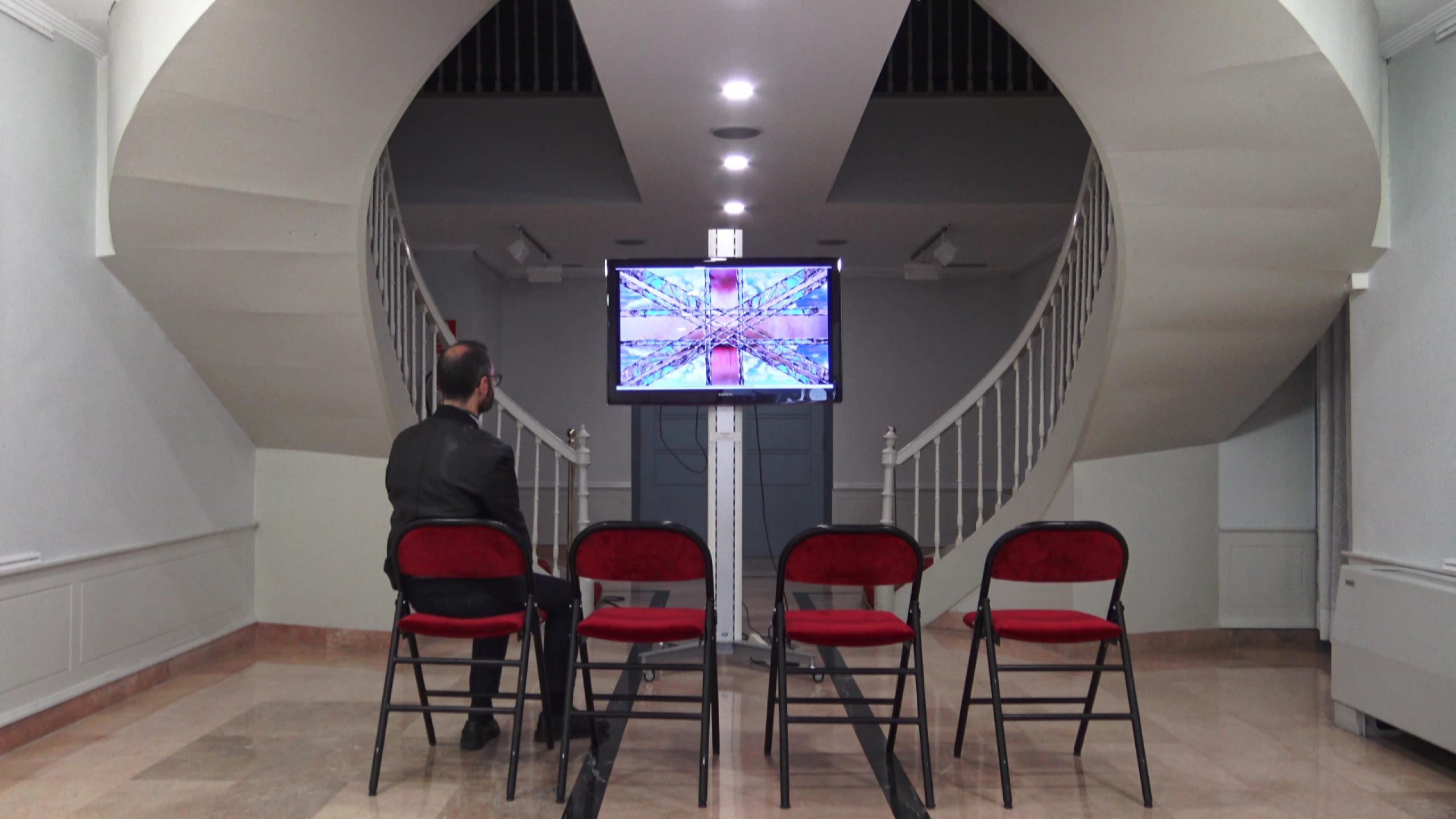
 Click to view the video
Click to view the videoAusin Sáinz Meet the artist 1
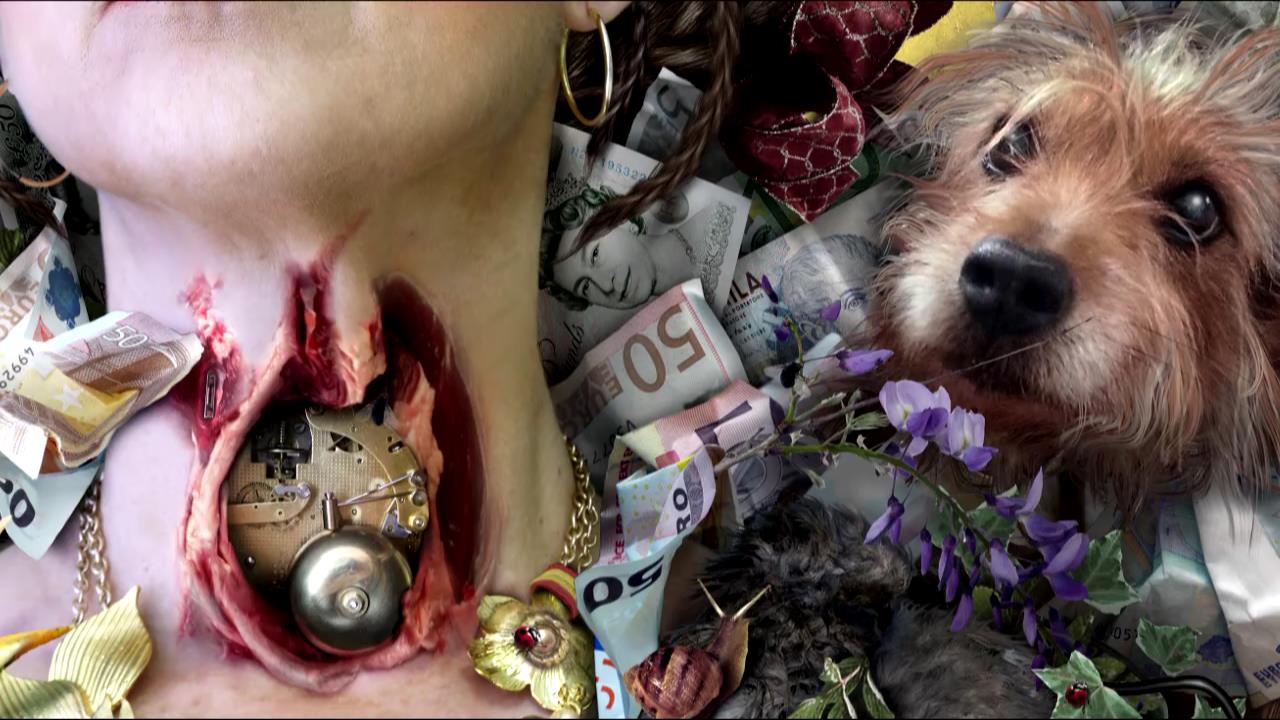
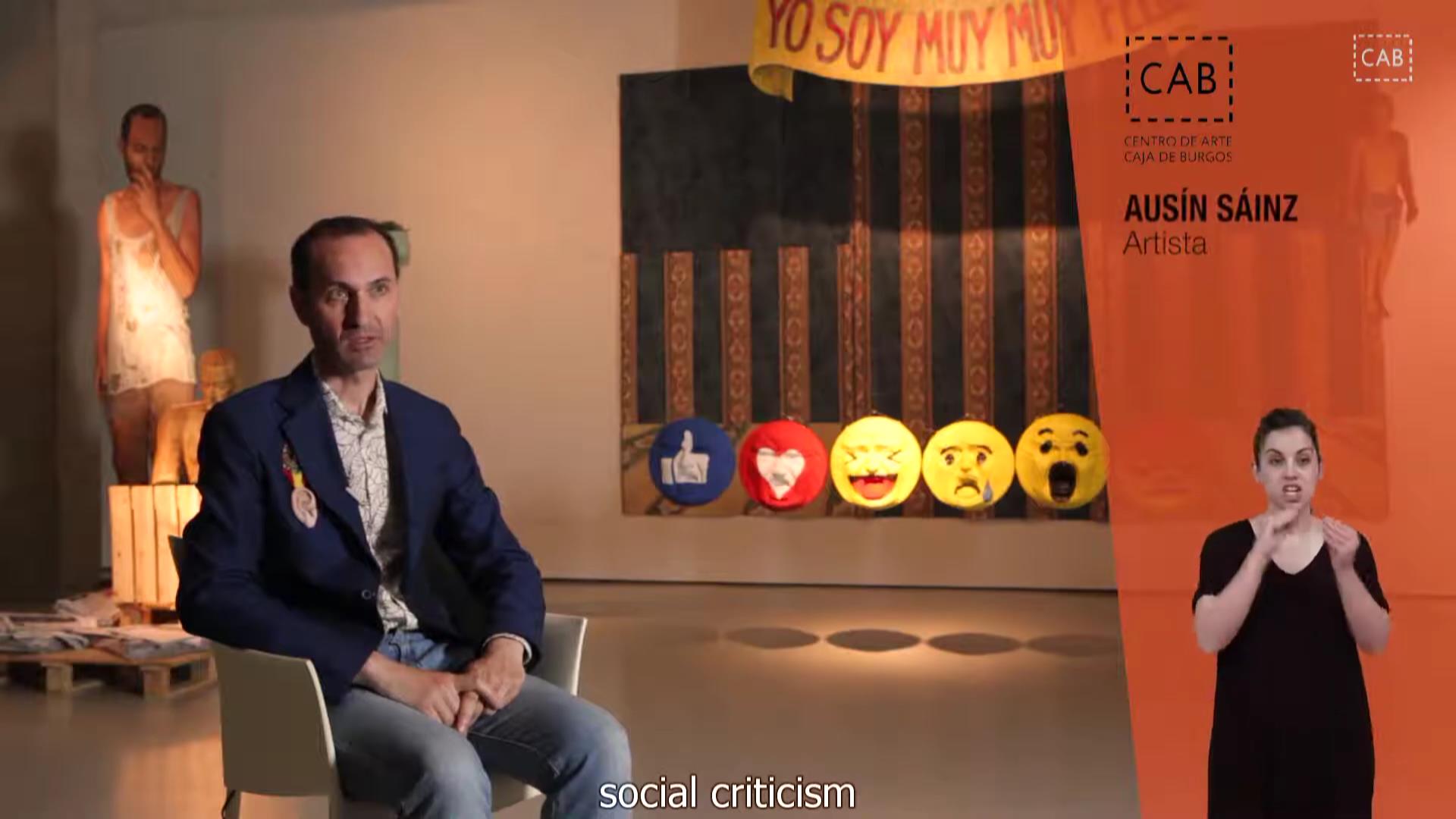
 Click to view the video
Click to view the videoAusin Sáinz Meet the artist 2
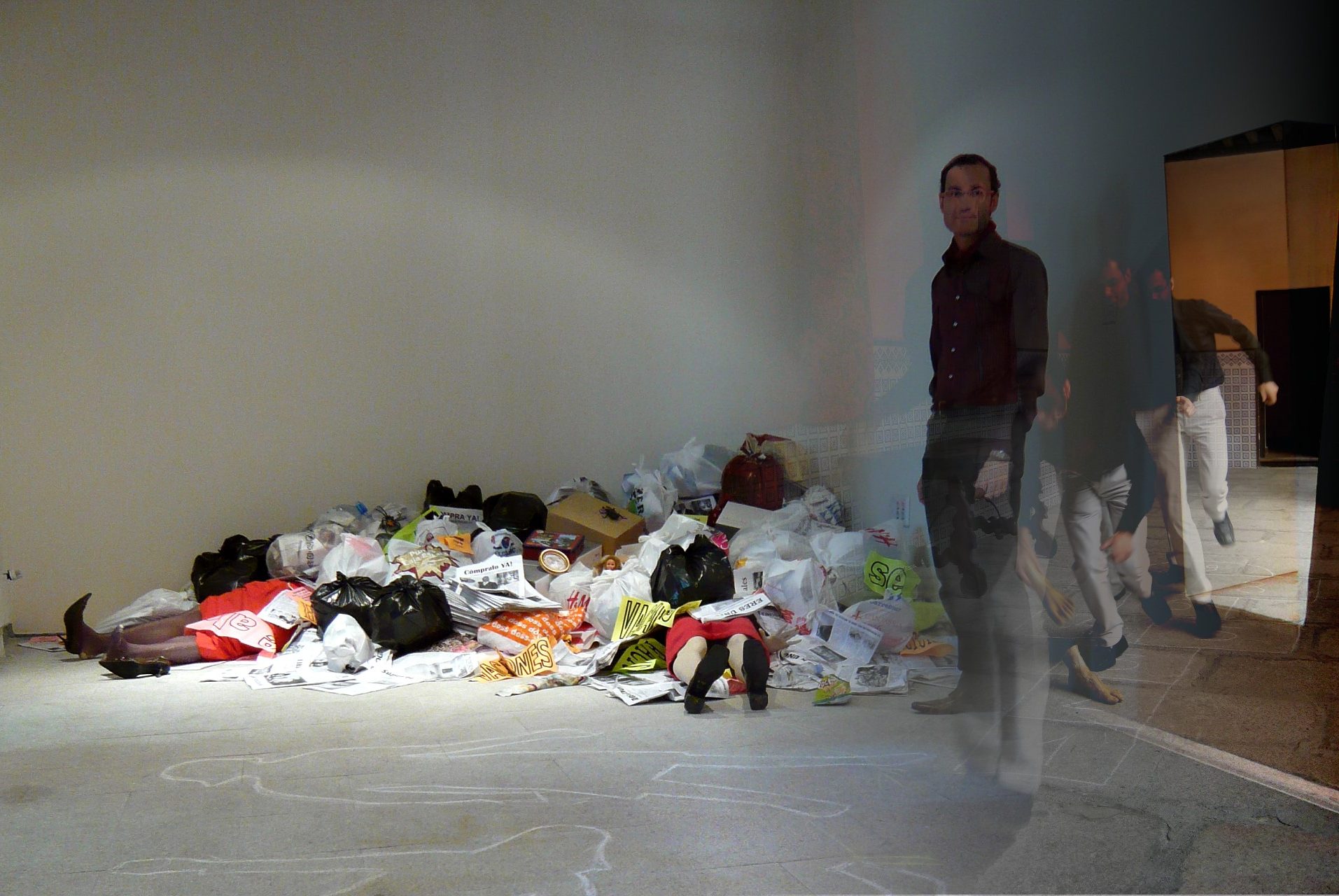
Ausín Sáinz
Trained at the Faculty of Fine Arts in Salamanca where he completed the specialties of Painting, Sculpture, Graphic Design and Audiovisual Communication, Ausín Sáinz has come a long way from his beginnings to his latest video creations and urban installations. His work, with its figurative and baroque aesthetics, disturbing and not at all accommodating, has been seen in numerous spaces both in Spain and in other countries.
I’ve always been a non-conformist, I think it’s in my genes. Carrying this personality has generated more than one problem for me. Luckily I can channel all my vital anguish through the artistic path. I transform the work of art into a loudspeaker that to a certain extent frees me. With my works I seek the reflection of the observer, since sometimes I cannot understand the blindness that surrounds us. If at first my work was more introspective and egocentric, little by little it has been transformed into a work that develops global themes, turning my figure into a mere means to tell stories, my personal connection being less. All this process has emerged unconsciously, the result of a natural evolution.
Regarding political criticism, I am only interested in its social implication. I do not belong to any political party. I am free to denounce everything that I consider irregular regardless of the subject that causes said injustice. After my controversial exposition censored by the Popular Party, certain sectors have tried to pigeonhole me as if I only had eyes to see and attack this party, ignoring previous works in which, for example, the former president of the Socialist Party government, Rodríguez Zapatero, and the ministers of his government were protagonists.
Ausin Sainz
Participant in
CologneOFF IX – 9th Cologne international Videoart Festival 2013
CologneOFF X – 10th Cologne international Videoart Festival 2014
The iTERROR Memorial 2015
The Refugee Memorial 2016
The Hiroshima/Fukushima Memorial 2016
The Wake Up! Memorial – self~imaging 2017
The W:OW Project 2018
The Wake Up! Memorial – Corona! Shut Down? 2020
The Wake Up! Memorial – Gandhi PPNRCD 2020
The Wake Up Memorial – Wake up! Climate Change 2021
The Violence Project 2022
Collective shows
2022.
“Peaceful Protest”. Peace Letters to Ukraine Project. Torrance Art Museum Los Ángeles (CA/EE. UU.)
Video Art Projects “Video Art Miden”, Galería Municipal Casa Bianca, Salónica, Grecia.
“Objetivo Burgos Jacobeo”, Fórum Evolución. Burgos.
III Convocatoria Internacional de Arte Postal – DE CORAZÓN. Móstoles, Madrid.
“Distorsión”. Solastalgia, Espacio Tangente, Burgos.
2021.
“Hogar, dulce hogar” Publicación Periferia Imaginaria nº4. Centro Cultural Villa de Móstoles. Madrid.
“4 paredes / 4 walls”. XII edition of the Magmart festival.
“PIGS” 9.0 Festival Internacional de Videoarte de Camagüey (FIVAC), Cuba.
“4 paredes / 4 walls”. ALC videoart festival, MACA (Museo de arte contemporáneo de Alicante) Alicante. España.
”4 paredes / 4 walls”. FERIA ARTE APARTE VII, Espacio de Arte Belle Artes, Cáceres.
“La Catedral, así la vieron, así la ven” Museo de la Evolución Humana y Fórum Evolución. Burgos.
2020.
“Fidelity”. VI Edición de la Feria de Arte Aparte 2020, Cáceres. España.
“Peaceful protest” The Wake Up Memorial – Gandhi – PPNRCD, Kolkata – NMF2020 ’10, Birla Academy for Art & Culture Kolkata. India.
“Rusia”, “Infecto”. The New AIDS Memorial. LGBT – Colección de películas de identidad de género – curada por Wilfried.
“HOY / TODAY”, WOW Jubilee 2020 IX Los Ángeles. TAM – Torrance Art Museum – @ Maiden LA. Los Ángeles. California. Estados Unidos.
“HOY / TODAY”, NewMediaFest2020, IAM – Institute für Alles Mögliche @ Stützpunkt Teufelsberg, Berlín, Alemania.
“4 paredes / 4 walls”. Selección oficial Internacional a competición Videoarte, MADATAC XI MUESTRA DE ARTE DIGITAL AUDIOVISUAL y TECNOLOGÍAS AUDIOVISUALES CONTEMPORÁNEAS. Circulo de Bellas Artes, Madrid. España.
“4 paredes / 4 walls”. III Muestra de Video Arte Faenza 2020. Bogotá y Pereira, Colombia.
“4 paredes / 4 walls”. III Muestra de Video Arte Faenza 2020. Santiago de Cuba y la Habana, Cuba.
“4 paredes / 4 walls”. ALC videoart festival. Colección Cigarreras, catalogada por ACOA (Artistas Contemporáneos de Alicante) Alicante. España.
ARTEGUILLOTINA. Obra gráfica contra la monarquía. Espacio Tangente. Burgos, España.
ARTEGUILLOTINA. Círculo de Arte. Toledo, España.
“Hoy/Today”, “I like to Fly”, NewMediaFest2020 3 – WOW Jubilee III Colonia. Alemania.
“Hoy/Today”, “I like to Fly”, The 1 minute befor 12 Memorial. Wake up! Climate Change! Colonia. Alemania.
“Liberty” The Lift-Off Global Network.
“Salute to Mexico” The Lift-Off Global Network.
ARTE EN CUARENTENA. “4 paredes / 4 walls” Espacio Santa Clara, Morón de la Frontera, Sevilla. España.
2019.
“Infected”.International Calls 2019, videoart, Espacioenter. Canarias. España.
“Infected”.Façade Video Festival International video art festival in Plovdiv, Bulgaria. A project of Art Today Association – Center for Contemporary Art – Plovdiv, The Ancient Bath. Bulgaria.
“PIGS”. Festival de Performance “Cuerpo a cuerpo” en Centro de Arte La Regenta (Las Palmas de Gran Canaria, España.
“PIGS” Facultad de Bellas Artes UGR (Universidad de Granada-Spain)
“PIGS” Seminario “Cuerpo, Cultura, Identidad. Desde lo individual a lo colectivo”. Lavapiés, Madrid. España.
“PIGS” FUGAS E INTERFERENCIAS. IV International Performance Art Conference. Facultad de Bellas Artes de Pontevedra (Universidad de Vigo) y CGAC (Centro Galego de Arte Contemporánea – Santiago de Compostela / Spain).
“PIGS” Urban Festival at the PiPe (Pictura Performance) en Dordrecht (The Netherlands).
“PIGS” II CONGRESO INTERNACIONAL ARTE Y POLÍTICAS DE IDENTIDAD. Visualidades y narrativas de la memoria: espacio urbano, naturaleza, migraciones, tecnología y género (CIAPI 2019). Facultad de Bellas Artes de la Universidad de Murcia, España.
“PIGS” Auditório (Sala Nascente) del Colégio de los Jesuítas de la Universidade da Madeira, Funchal (Isla de Madeira) Portugal.
“Land” selección festival IVAHM para Procesos de Error, Valparaíso. Chile.
“Europa Soñolienta”. Festival Bideodromo 2019. Centro de Producción Artística BilbaoArte. Bilbao, España.
“Land” video poetry. IN ABSENTIA. The Wrong Biennial Pavillion. Manfredonia, área de Foggia, Roma, Bolonia…
“Vanitas”. The Burrow, VLW pavilion of The Wrong Biennale. Comisariado por Aad Björkro.
“Black” knack knack. Augmented Reality. Shaun Project Space. Sunderland Pavilion of the Wrong Biennale. Reino Unido.
“PIGS” I Edición del Festival Internacional de Performances Mínimas en Vídeo “Cuerpo urbano en acción”. Seminario “Cuerpo, Cultura, Identidad. Desde lo individual a lo colectivo”, Paisaje Sensorial y Ambiances International Network. Universidad Autónoma de Madrid, España.
“PIGS” Cuerpo Urbano en Acción. Seminario Internacional Convergencias. Art Gallery, Instituto Goethe de Puerto Alegre, Brazil.
“PIGS” I Edición del Festival Internacional de Performances Urbanas en Vídeo. Universidad Politécnica de Valencia.
”Exit” y “Hogar mundo hogar”, FAENZA. Fiesta de Fuego, XXXIV Festival del Caribe. Santiago de Cuba, Cuba.
“De -Verde agónico- a -casi Nada-” T. Geografía y Objeto. Centro de Arte Contemporáneo Domus Artium 2002. DA2. Salamanca. España.
“Exit” y “Hogar mundo hogar”, programa: Humano. Muestra de videoarte 2019 FAENZA. fundación Gilberto Alzate Avendaño-FUGA. BOGOTA D.F. Colombia.
“Exit” y “Hogar mundo hogar”, FAENZA. Universidad Católica de Pereira. Risaralda. Colombia.
“Exit” y “Hogar mundo hogar”, FAENZA. Cinemateca de la Universidad Central. BOGOTA D.F. Colombia.
“Europa Soñolienta”. 8to. Festival Internación de Videoarte, Camagüey, Cuba.
“Land” videorte español seleccionados por IVAHM para FIVAC. Camagüey, Cuba.
Fragmentos de vídeo incluidos en el espectáculo LUMÍNICO 2019-20, México.
#FotoCosaBA, 6ª Edición. Mongo Scifi, Malasaña, Madrid. Madrid.
“Exposición colectiva 25 Aniversario CODIGO UBU” Universidad de Burgos. España.
“INVOLUCR-ARTE 2019” 25 aniversario AI Burgos. Teatro principal. Burgos. España.
“Me amo, me deseo”. LA BOCA ERÓTICA SELECCIÓN fotografías EROTISMO IBÉRICO, Madrid.
“Me gusta volar” LAMOSA, Laboratorio Artístico Modulable. 5 FESTIVAL DE VIDEOARTE 1 MIN, Colectivo Interferencias (Gijón) y Fiestas del Solsticio de Verano organizadas por la AA.VV Casco Antiguo de Cuenca.
Arte por habichuelas. ¿Qué es el Arte? 2º CERTAMEN INTERNACIONAL. El NOARTISTA k-ant.me. España.
2018.
“Land” The eighth NOW&AFTER’18 Internationa Video Art Festival, ARTPLAY Design Center
Nizhnyaya Syromyatnicheskaya st., 10/7, Moscow, Russia.
Exposición Itinerante del XIX Concurso Internacional de Fotografía “El Rioja y los 5 sentidos”. Centro Fundación Caja Rioja-Bankia La Merced, Logroño. Fundación Caja Rioja-Bankia de Alfaro, Arnedo y Calahorra. España.
“Nonato”. CREARTE 18. Alba de Tormes, Salamanca. España.
“Mar 2”. De puerta en puerta, Colección permanente Encuentro de Sensibilización Artística. Fotografía. Villafranca de los Caballeros, Toledo. España.
“Infecto”. muestra de videoarte Cultura Difractada: VideoPride, Museo La Neomudejar, Madrid. España.
“Passport” WOW Wake Up! – ://self~imaging for Peace, The Quarantine Film Festival Varna 2018. curated by Wilfried Agricola de Cologne. Bulgaria.
“3 2, 1 Liberty”, WOW.03 Program unit 5 We Will Fail – @ Torrance Art Museum Los Angeles/CA. EE.UU.
Contra la represión y la censura. Espacio de Creación Contemporanea Espacio Tangente. Burgos. España.
2017.
Exposición Itinerante del XIX Concurso Internacional de Fotografía “El Rioja y los 5 sentidos”. Fundación Caja Rioja-Bankia de Haro, Santo Domingo de la Calzaday Nájera. España.
“Passport”. FIVA 07. Centro Cultural San Martín, Buenos Aires, Argentina.
#TuEspacioDeMierda, Thelab, Marte, Feria Internacional de Arte Contemporáneo. Castellón. España.
“Fidelity”. La Noche de los Museos, Museo “Casa Nacional del Bicentenario”, FIVA 06, Buenos Aires. Argentina.
IV Certamen de Fotografía de Bodegas Verum, Tomelloso. Ciudad Real. España.
“Fidelity”. FIVA 06, EsBaluard / Museo de Arte Moderno y Contemporáneo de Palma de Mallorca, España.
“Fidelity”. Festival Bideodromo 2017.Centro de Producción Artística BilbaoArte, Centro Cultural Sarean y en el Instituto Francés de Bilbao, Bilbao, España.
“Fidelity”. MDA 2017, FIVA (Festival Internacional de Video Arte), Centro Cultural España Córdoba, Córdoba, Argentina.
“Fidelity”. Eneagrama Festival de cine experimental, Espacio 75, Cordoba, Argentina.
“Vanitas”. 10ª Muestra Internacional de Arte Contemporáneo “Entresilos” Villacañas, Toledo. España.
“Mar 1” y “Mar 2”. De puerta en puerta. Fotografía. Villafranca de los Caballeros, Toledo. España.
“Fidelity”. Eneagrama, Espacio 75, Córdoba, Argentina.
“Land”. Eilandhoppen, Alkmaar, Stadskantine Alkmaar, the Netherlands.
“3, 2, 1 Liberty”, WOW.03 / India W:OW Art Film & Video Festival (We Are One World // Art Film & Video Festival), Alliance Francaise du Bengale / Kokata/India y Dharamsala/India.
”Red”, selección de obras de ediciones anteriores. muestra de videoarte Cultura Difractada: VideoPride, festival La Culta (FELGTB) World Pride 2017. Museo La Neomudejar, Madrid. España.
“Anunciación”. Sección oficial muestra del Videopride 2017. Museo La Neomudejar, Madrid. España.
“VERDE AZULADO – TEAL”, IV Concurso Europeo de Creación Audiovisual “CTL 59 segundos”, Filmoteca de Pamplona, Navarra. España.
5 años no son nada, Wabi Sabi Shop&Gallery, Sevilla. España.
2016.
“Land”. GlobalVideos, StichtingWhiteCube. Filmhuis Alkmaar, Alkmaar, the Netherlands; Kulturhuset Kilden; Brøndby, Denmark; Burnaby Arts Council/Deer Lake Gallery, Burnaby BC, Canada; Helsinki Cosmopolitan Association, Helsinki, Finland; Studio Seven, Karachi, Pakistan; Gallery Mcube, Lalitpur, Nepal; Beechwood House, Moffat, Scotland; Paratissima/Chovekot pred sè, Skopje, Macedonia; Galleria Rajatila, Tampere, Finland; Studio Sonia Gil, Rio de Janeiro, Brazil; Podium de Flux, Zaandam, the Netherlands;Sinema Kolekan Jakarta, Indonesia; Mamuta Art and Research Center, Jerusalem, Israel; Spóldzielnia Orgniwo, Kraków, Poland; The Serpentine Gallery, Lismore NSW, Australia; Comuna de Han-Ian Macau, Macau SAR; Noname hub Milan, Italy; The Litte One Atelie, Hong Kong, Hong Kong SAR;
Experimento BIO 2016, Lynn Bianchi y Ausín Sáinz. ExpoGela. Bilbao. España.
“Land”. INTERFERENCE 2016. 3RD VISUAL COMMUNICATION FESTIVAL. GDAŃSK, POLAND.
“Fidelity”. Facade Video Festival 2016, Plovdiv, Bulgaria.
“Land”, muestra EXILIO. Zocalo de la cuidad de México, México.
“Land”, VideoBardo, Festival Internacional de Videopoesia (VI), Buenos Aires, Argentina. Friche la Belle de Mai
at Instants Video Festival Galerie Deux, Marsella (Fra)
“Land”, Refugee! Film Collection @, Festival x 24 Festival, artvideoKOELN, Gainsborough, UK.
“No born”, Videopride de Arcópoli, Muestra Cultura Difractada, Espacio Labruc, Madrid, España.
XVI EAC Encuentro de Arte Contemporáneo, MUA, Alicante, España.
“SOBRANZA O SOBRIETUD”, Videoarte Dulcinea, Festival de Almagro. España.
“Fidelity”, IX Festival Intencional de Vídeo arte de Barcelona, BANG, La Galeria Contrast, Galeria H20 y Casa Elizalde. Barcelona. España.
“Fidelity”, PLAY IT, Art & Breakfast, Museo Carmen Thyssen, Málaga. España.
“Land”, “Fidelity”, “Red”, Sección oficial del Festival IVAHM, Centro de Artes de Vanguardia, La Neomudejar, Madrid. España.
“Fidelity”, Selección oficial Internacional a competición Videoarte, MADATAC 07, Madrid, España. España.
“Land”, Refugee!, Collective Trauma Film Collections, CologneOFF – Cologne International Festival Network, @ 10th CeC , – Carnival of e-Creativity – Shillong/India.
“Stress Society”, Never More! Hiroshima- FukushimaCollective Trauma Film Collections, CologneOFF – Cologne International Festival Network, @ 10th CeC , – Carnival of e-Creativity – Shillong/India.
“Passport”, ://selfportrait – a show for Peace a- show for Humanity, CologneOFF – Cologne International Festival Network, @ 10th CeC , – Carnival of e-Creativity – Shillong/India.
De tus amigos, Homenaje Igancio del Río, Arco de Santa María. Burgos. España.
2015.
“3, 2, 1, Liberty”, Memorial for the Victims of Terror, PARIS, 13 Nov 2015, artvideoKOELN international. Alemania.
”Red”, 3 minuti x 30 articoli, Videoarte, Deltarte, Rosolina – Rovigo, RHO, Italia.
“Red”; “No born”, Instants Vidéo Numériques et poétiques, The 28th Festival Les Instants Vidéo 2015, Friche La Belle de Mai, Espace Culture, ADPEI, SARA, La Fraternité, Marseille, [BOX] Galerie, Milan, Italy; Visual Container TV.
“Black”; “Red”; “3, 2, 1, Liberty”; FAÇADE VIDEO FESTIVAL 2015, Art Today Association, Center for Contemporary Art – The Ancient Bath, Plovdiv, Bulgaria
“Fidelity”, V edición NemoArtFestival, La Nave Gris, Galería La hormiga, Priego de Córdoba, España.
#IBERENCONTROS1, Castelo Branco, Portugal.
¡Qué vienen los gigantillos!, Arco de Santa María, Burgos, España.
“Verde azulado Teal”, 6to Festival Internacional de Videoarte de Camagüey FIVAC-2015, Cuba.
ARCO 2015 (stand máster proyectos arquitectura) Arcotargente, galería de la Magdalela, Madrid, España.
“Dictator”, “The Unborn”, Total Art –Alienated Territories, and Alienated Timelines II, CologneOFF X, CeC 2015 – Carnival of e-Creativity, North Western Hills University Shillong/Meghalaya/India.
“Información objetiva 100%”, Encuentro y Festival Transfronterizo de Poesía, Patrimonio y Arte de Vanguardia, PAN XIII, Morille, Salamanca (Spain); Cariviçais, Portugal.
2014.
“Dictator”, 27th Festival Les Instants Vidéo 2014, Friche La Belle de Mai, Espace Culture, ADPEI, Vidéodrome 2, Marseille; [BOX] Gallery, Milan.
“Verde Azulado”, MADATAC 06, VIDEOARTE & Arte de los Nuevos Medios Audiovisuales, Madrid. España.
“Información objetiva 100%”, VI Edición de Vídeo en el Cuarto, ART ROOM-ESPACIO EXPERIMENTAL, Madrid. España.
“Dictator”, Total Art – Alienated Territories, CologneOFF X – 10th Cologne International Videoart Festival, itinerante por varios países.
“Dictator”, The Subway Video Art Night – Fourth edition 2014, Nueva York.
“Dictator”; “Teal”, Facade Video Festival 2014, Plovdiv, Bulgaria.
Affordable Art Fair 2014, Alicia Rey Gallery, Milán.
“Mujer Árabe”, Miradas de entorno, Galeria Kunza, Muestra de video arte, Coquimbo, La Serna, Ovalle, Chile.
White Wall, P2P( Prácticas Contemporáneas en la Fotografía Española), Photoespaña 2014, Teatro Fernán Gómez, Madrid. España.
Artevalencia Proyectos, Galería Perros flacos, Benicàsim ( Castellón) España.
“Muñeca loca”, 1º Muestra de videoarte internacional, Mixturas. Sala de Blas. Archidna, Málaga. España.
“Menos tu vientre”, 15 Festival Internacional de Performance ABIERTO DE ACCIÓN, Vida y Obra de Miguel Hermandez, Orihuela, Alicante. España.
Exposición retrospectiva 2003-2012, Torreón de los Guzmanes, Ávila. España.
La mesa camilla.: Espacio Caliente, La Sala De Blas, Archidona, Málalga. España.
Todos al ruedo, Monasterio de San Juan, Burgos. España.
“Mujer Árabe”, NIO 2, Muestra Internacional de Videoarte, Universidad del Quindío, Instituto de Bellas Artes, Armenia, Colombia.
The Love, O amor, I’amore, el amor… Encuentro y Festival Transfronterizo de Poesía, Patrimonio y Arte de Vanguardia, PAN XII, Morille. España.
¿Quién es la más bella de esta sala?, La Sala de Blas, Archidona, Málaga. España.
“The Unborn” Total Art – Alienated Timelines III , ColoniaOOF X / animateCologne 3
-Videoart Festival Miden Kalamata Greece – 3-5 July 2014
-Ares – International Film and Media Festival Syracuse/Italy (August 2014
-Waterpieces Video & Art Festival Riga/Latvia – 15-17 August 2015
-MIVA _ International Videoart Festival Quito/Peru – 25 August – 14 Sept 2014
-Institut fuer Alles Mögliche Berlin/Germany – 4 September 2014
-Muza Plus – a space for art Tel-Aviv/Israel – 13 September 2014
-Onomato e.V. Düsseldorf/Gerrmany – 25 September 2014
-Proyector Videoart Festival Madrid/Spain (25 Sept – 05 Oct 2014)
-Athens International Videoart Festival (Greece) – 3-5 Oct 2014
-“Damen und Herren” e.V. Düsseldorf/Germany – 10 October 2014
-Torrance Art Museum Los Angeles/USA – 6 Nov – 6 Dec 2014
– Parachute Light Zero Paris France – 21 November 2014
-EuroShorts Film Festival Gdansk/PL 24-30 Nov 2014
-Euro Shorts Film Festival Warsaw/Poland 24-30 Nov 2014
-VideoBabel – International Audiovisual Festival Cuzco/Peru (Nov 2014)
2013. Affordable Art Fair 2013, Alicia Rey Gallery, Lóndres.
“The Straight-jacket”, Under the Subway Videoart Night, Local Project Art Space. New York.
“Mujer Árabe”, NIO 2, 2ª Muestra Internación de Video Arte, Universidad Tecnológica, Pereira, Colombia.
“Mujer Árabe”, NIO 2, Muestra Internación de Video ArteCaja de Cristal, Quito, Ecuador.
“A Question of Millimetre”, Festival Internacional de Videoarte ColgneOFF IX, Lituania, Perú, Grecia.
Me amo, Visibilidad LGBT en los barrios, GAG, CENTRO GARCILASO, Barcelona. España.
Flores que en piedra viven, Arco de Santa María, Burgos. España.
Voo di VeelDiN, LAi MUSEUM, Gijón. España.
Arte Contemporáneo y Project Room Art Gira Dream, Itinerante, Facultad de Bellas Artes de Granada y Espacio de MECA, Almería. España.
Fondos reservados, La Sala de Blas, FACBA’13. V Feria de Arte Contemporáneo de la Facultad de Bellas Artes de Granada. España.
“Mujer árabe”; IV Edición Vídeo en el Cuarto Simpático, Art Room Espacio Experimental, Madrid. España.
“Chaqueta de fuerza”; “Mujer árabe”; 5to. Festival Internación de Videoarte, Camagüey, Cuba.
“Mujer árabe”; “VerdePasión”; I Festival Internacional de Videoarte 2013, L´Usine Utopik, Normandía, Francia.
Japón 400, Galería Factoría de Arte y Desarrollo, Madrid. España.
2012. Yo, yo y ellas, Kedarte II, Domus Artium 2002 DA2, Salamanca. España.
Carta de ajuste, La Sala de Blas, Archidona, Málaga. España.
Más mirar, más ver, mass media, Instalación, Feria de Arte Contemporáneo ArtJaen, Jaén. España.
Arte por derechos, Arco de Santa María, AMICOS, Burgos. España.
#144# Artemenudo, Galería-Marta Prieto, Lugo. España.
Doble, Wabi Sabi Shop & Gallery, Sevilla. España.
Viva España I, SeeSaw cLicK & ART, Museo LAi, Gijón. España.
I Love Video Art, CRAV, Centro de Recursos para las Artes Visuales, MECA Mediterráneo Centro Artístico, Almería. España.
“Mujer árabe”, videoarte, VIII Feria de Arte Contemporáneo de Arévalo, Ávila. España.
Adopciones VIP, *iluminar (Del lat. illumināre), Anuncios de las Farolas, Arte Ambulante, Madrid. España.
Mujer Divino Tesoro, *iluminar (Del lat. illumināre), Anuncios de las Farolas, Arte Ambulante, Madrid. España.
Señalética VIP, Encuentro Rural: Arte & Nuevas Tecnologías, #KEDARTE, Morille, Salamanca. España.
Mater Dolorosa, La Sala de Blas, Archidona, Málaga. España.
Iniciación al Coleccionismo, Galería Marietta Negueruela, Palencia. España.
Iniciación al Coleccionismo, Galería Rafael, Valladolid. España.
2011. San Sebastián 56/88, Galería Factoría de Arte y Desarrollo, Madrid. España.
Más mira, más ver, mass media, Kedarte I, La lata muda, Domus Artium 2002 DA2, Salamanca. España.
BITtúBITamirín, LAi MUSEUM, Gijón. España.
Mulier mulieris, MUA, Museo de la Universidad de Alicante, Alicante. España.
CompromiS.O.S., Club Diario Levante, Valencia. España.
Iniciación al Coleccionismo, Galería Marietta Negueruela, Palencia. España.
Iniciación al Coleccionismo, Galería Rafael, Valladolid. España.
Intervenciones artísticas sin huella, Factoryart, Centro de Historia, Zaragoza. España.
Intervenciones artísticas sin huella, Factoryart, Sala Raíces, Huesca. España.
Salón de ná…vida´10, (Árboles, tango de sus…), Lucernario, Sala LAi, Gijón. España.
DesDIÁLOGOs, Arte Ambulante, Cuadrilátero Federación Madrileña Boxeo, Madrid. España.
CalzArte 6, IFEMA Feria de Madrid, itinerante. España.
Artistas 2010, Torreón de los Guzmanes. Ávila. España.
El mal gusto, un arte más, ARTEAPARTE, Espacio de Arte y Acción Belleartes, Cáceres. España.
11j. X aniversario, Espacio Tangente, Burgos. España.
Mártires de la Violencia Machista, Two Head of Chicken, Gallery Evora, Portugal.
Mi sofá. Ese mueble objeto del deseo, La Sala de Blas, Archidona, Málaga. España.
Conexión, Faah!, Feria de Fotografía Abierta e Independiente, Buenos Aires, Argentina.
PradoRey 2011, Rueda, Valladolid. España.

Ausin Sáinz video – Passport

Ausín Saínz
Ausin Sainz (Spain) – Peaceful Protest,, 2020, 5:00
Ausin Sainz (Spain) – Walls, 2020, 8:17
Ausin Sainz (Spain) – Today,, 2019, 5:00
Ausin Sainz (Spain) – Infecto, 2016, 2:55
Ausin Sainz (Spain) – Security, 2015, 06:25
Ausin Sainz (Spain) – Passport,, 2015, 04:36
Ausin Sainz (Spain) – Fidelity, 2015, 6:12
Ausin Sainz (Spain) – Dictator,. 2014, 03:47
Ausin Sainz (Spain) – The Unborn,, 2014, 4:43
Ausin Sáinz (Spain) – Spain Catalonia_Russia, 2022, 07:48
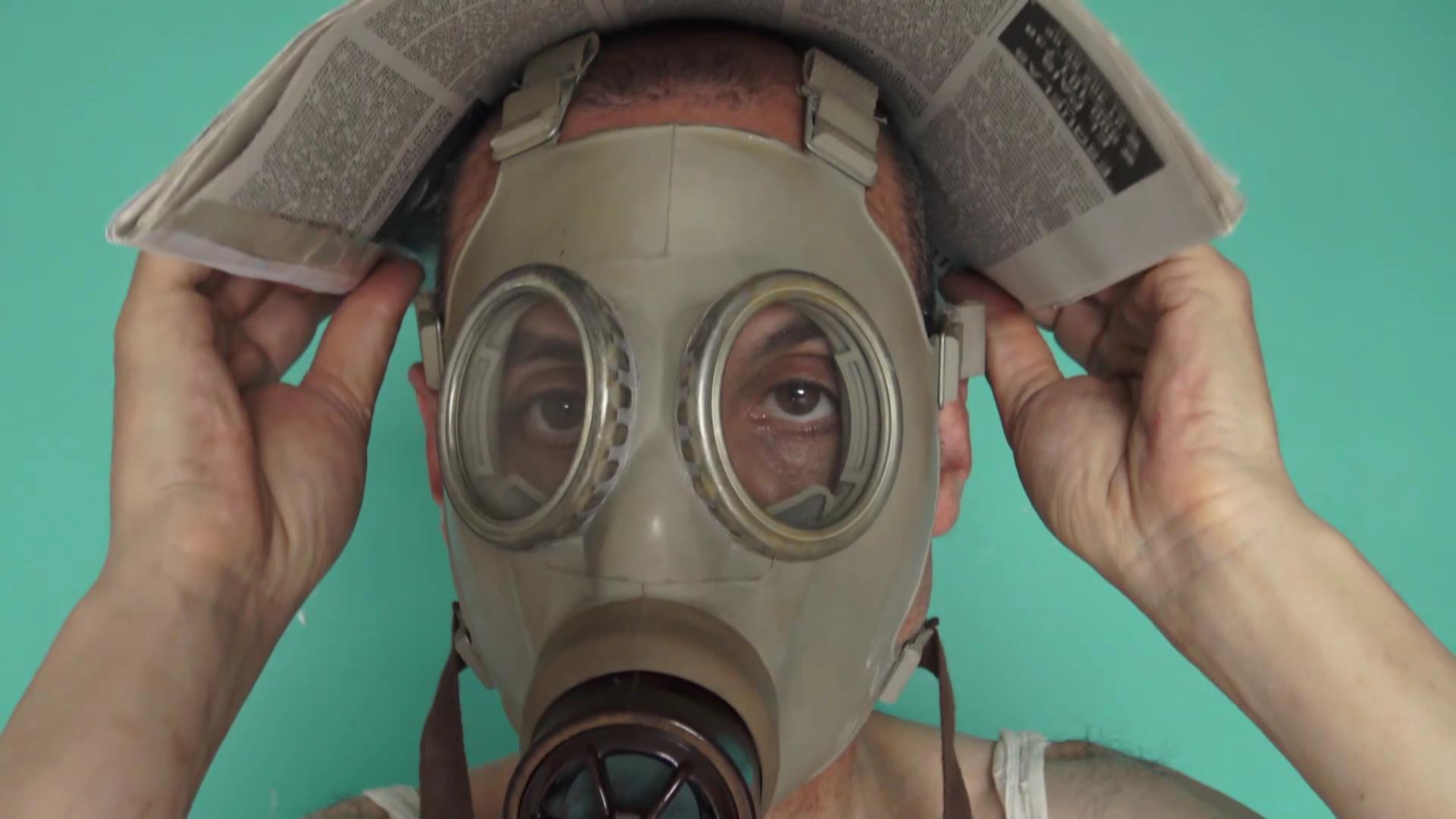
 Click to view the video
Click to view the videoAusin Sáinz Spain Catalonia_Russia, 2022, 07:48
Spain Catalonia_Russia, 2022, 07:48
´In Spain there has been a lot of violence, due to an independence movement in a region, Catalonia. Now it has been discovered that Russia encouraged this revolution in different ways. In this video I imagine what could have happened. If a war had broken out, the most important monuments in the small cities of the interior could have been destroyed. irrecoverable damage would be produced to the artistic heritage of the rest of Spain. The source of wealth for these small towns, tourism, would have disappeared.
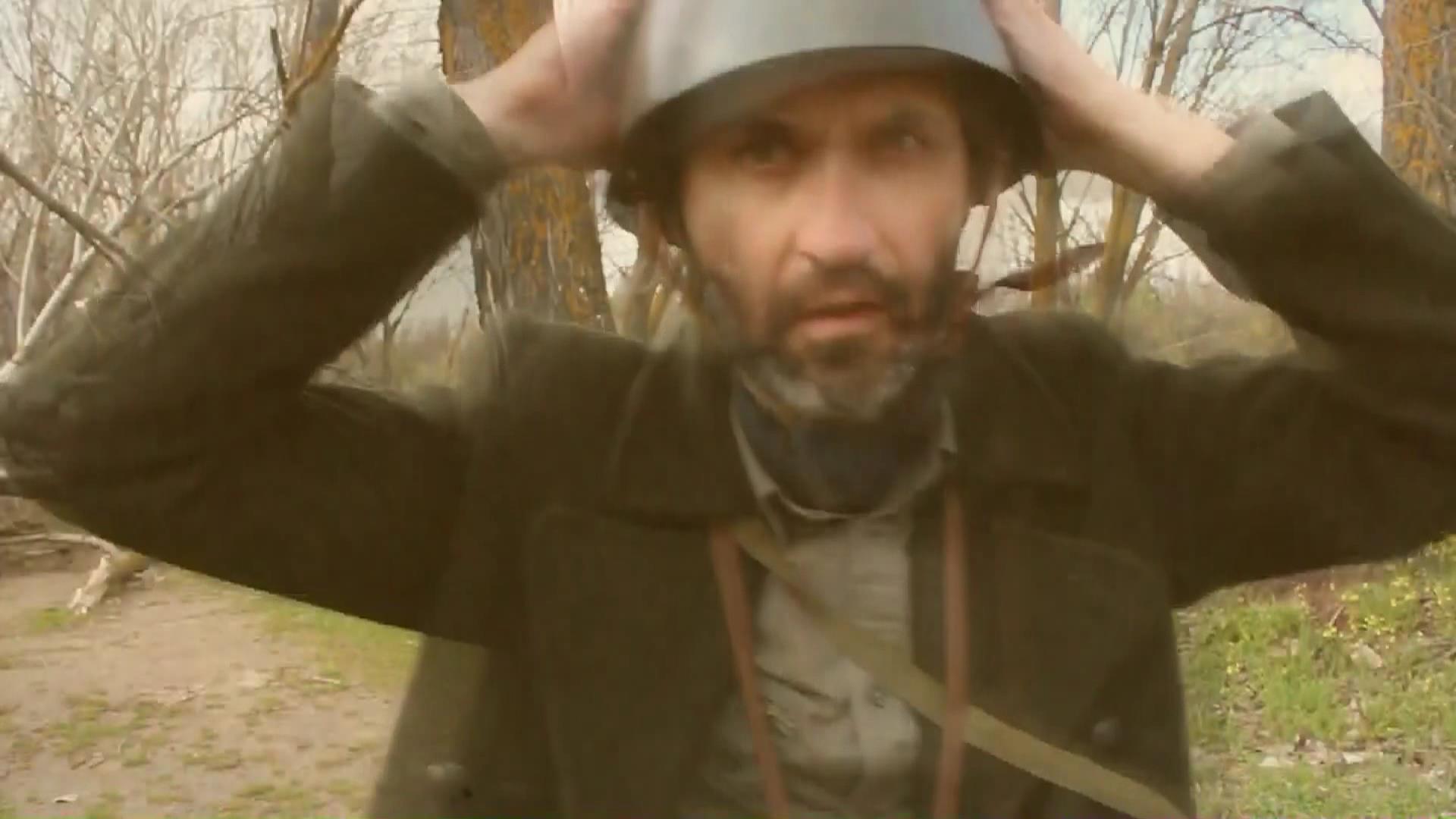
 Click to view the video
Click to view the videoAusin Sáinz Dictator, 2014, 03:47
Dictator,. 2014, 03:47
The Dictator is emotionally mighty, big, free, eternal. He is believed the the Almighty. Reality has invisible borders. His empire asks a strength that he is not sure have. He knows he is fragile, small, and is accompanied, but he feels watched and questioned. He defends his fears without overcome.
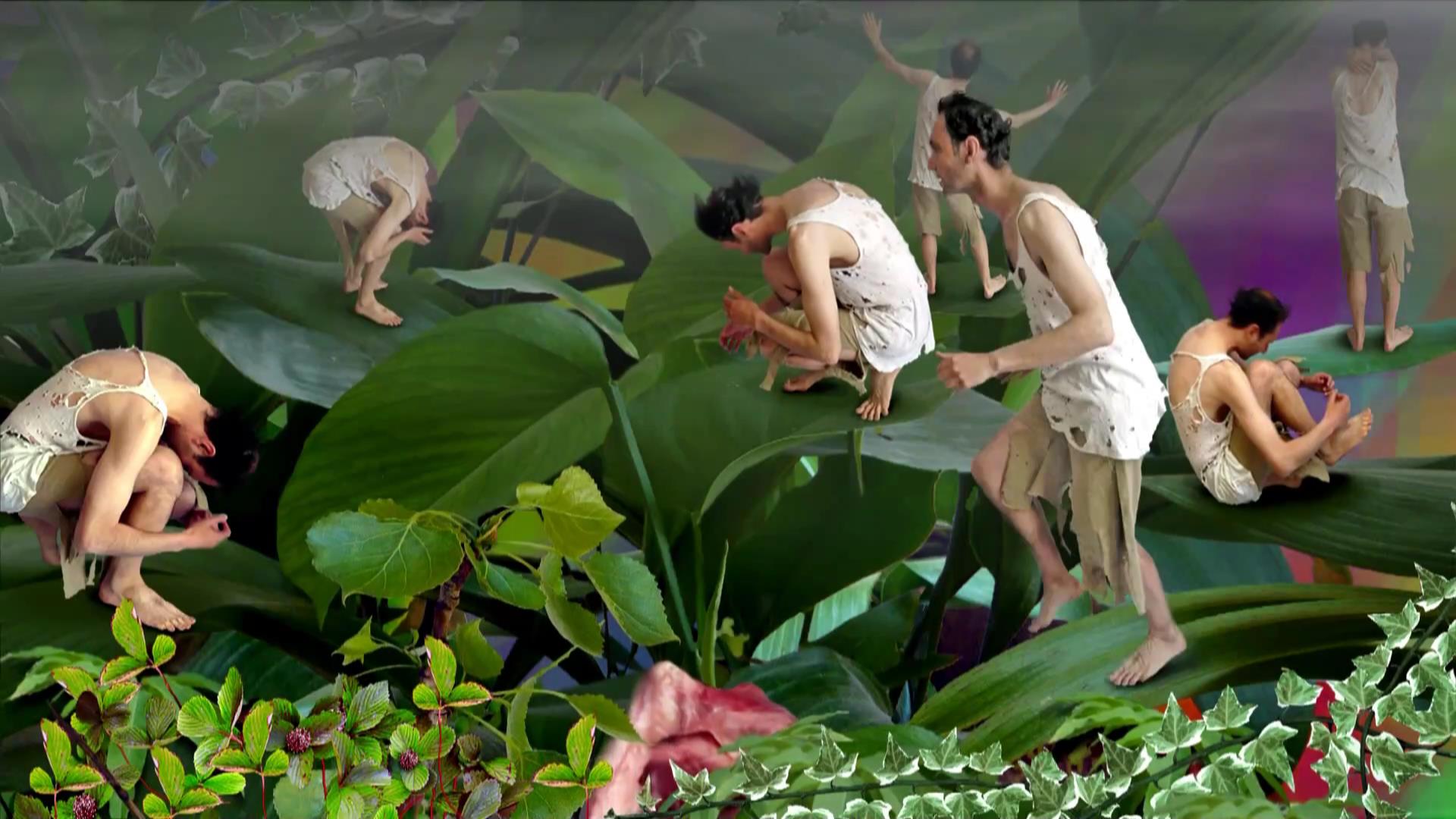
 Click to view the video
Click to view the videoAusin Sáinz The Unborn, 2014, 4:43
The Unborn,, 2014, 4:43
the unborn. Nature is not perfect. Men can not give birth. It reflects the female submission for religious reasons. Women’s identity is destroyed the pretext of some texts written by
men. That is a big weight the woman has to deal with to evolve.
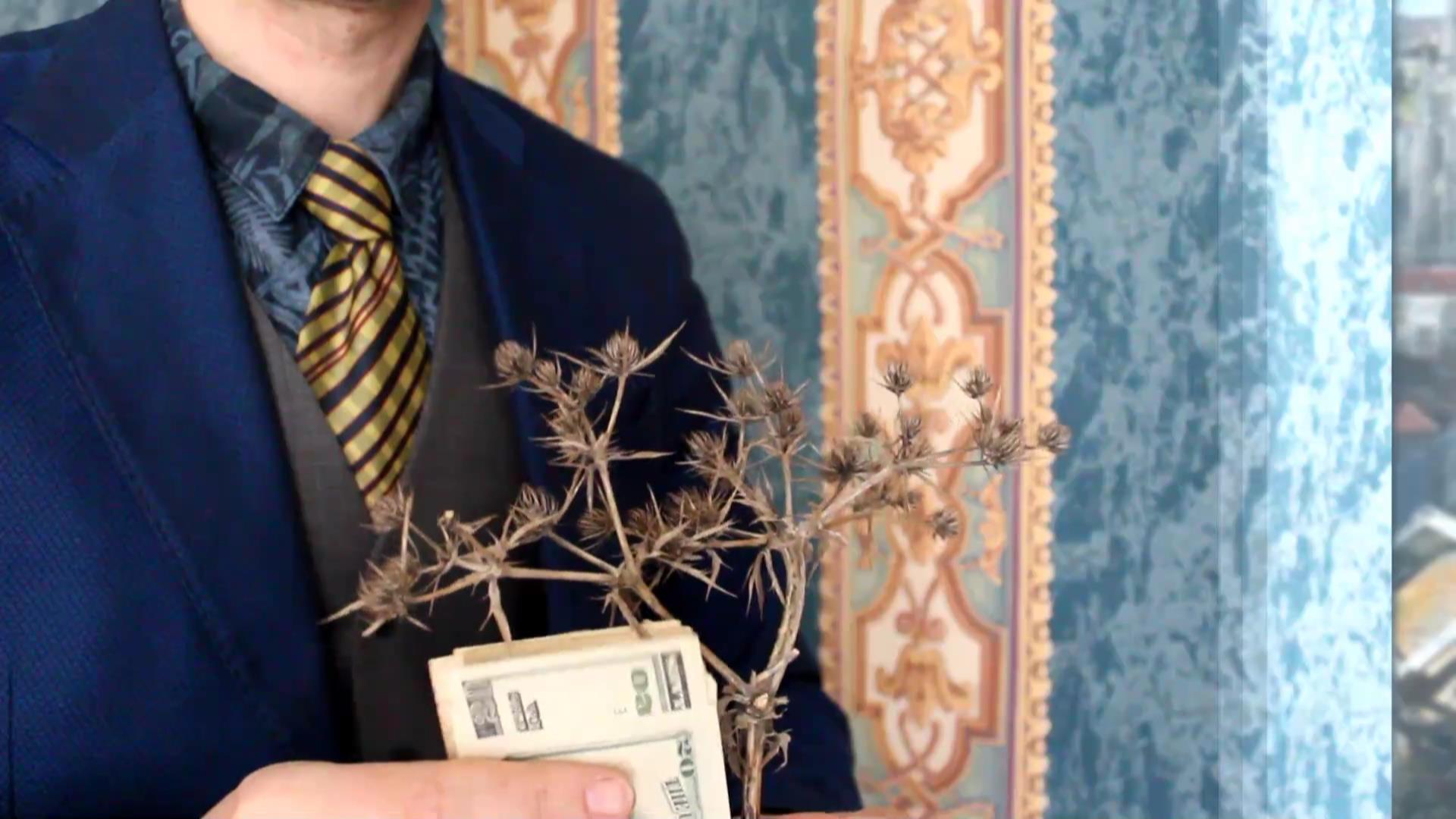
 Click to view the video
Click to view the videoAusin Sáinz Fidelity, 2015, 6:12
Fidelity, 2015, 6:12
Dürer was the first artist who introduced the self – portrait as a defining element of his art, using the most modern of its time technique. Today’s self – portraits have become popular thanks to digital images. In this video I emulating a self – portrait self – portrait Dürer youth where it appears as boyfriend with thistle flower between his fingers, German symbol of fidelity. It arose following the statement that his father sent him when he was forming outside Germany, which confirmed its commitment to a young rich. That hard faithfulness little time as quickly came the first marital discord. This liken it to the fidelity to which we submit today. Our daily struggle for stability at the expense of whatever, in a globalized world.
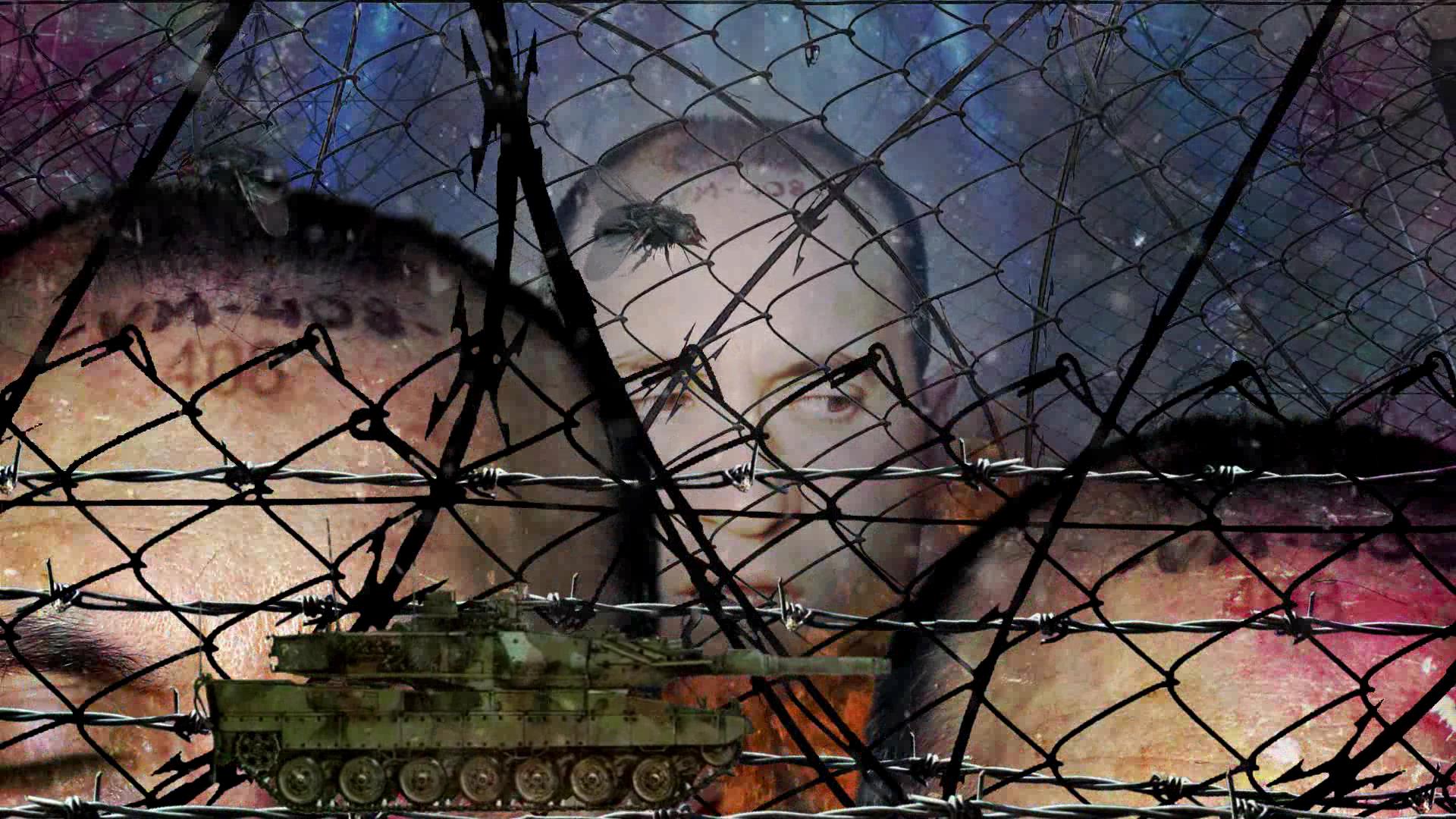
 Click to view the video
Click to view the videoAusin Sáinz Passport, 2015, 04:36
Passport, 2015, 04:36
An identification document can mark our destination. In this video I reproduce my Passport and what could happen if it were deleted. In the end, insects as insignificant as flies can enjoy more freedom than human beings themselves.
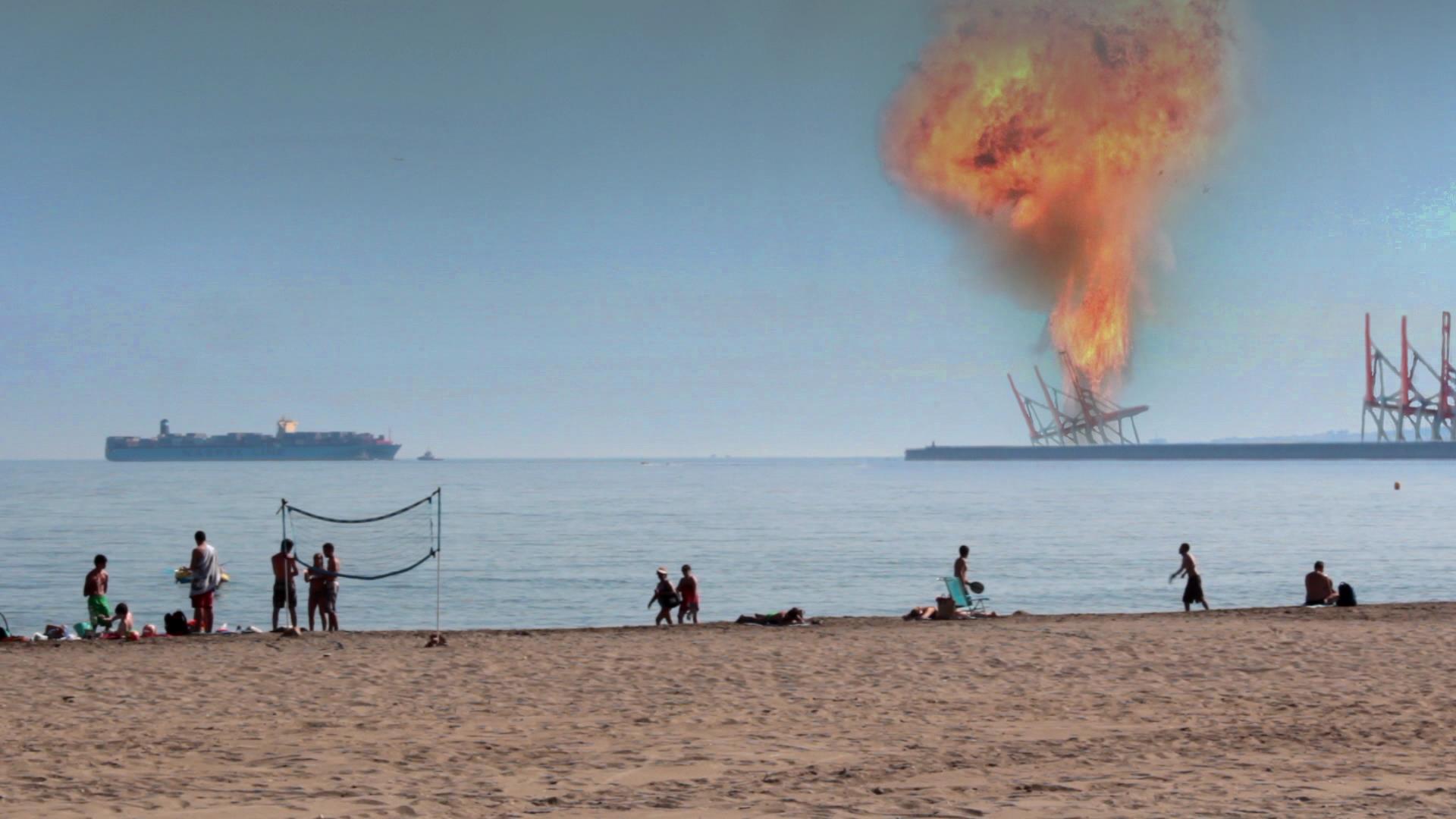
 Click to view the video
Click to view the videoAusin Sáinz Security, 2015, 06:25
Security, 2015, 06:25
I propose a reflection on the idea of “ownership of the land” in the face of the wave of refugees and immigrants arriving in the most advanced countries. Citizens who are poor and want to improve in another country, have great government difficulties to achieve it. Rich people have total freedom of movement.
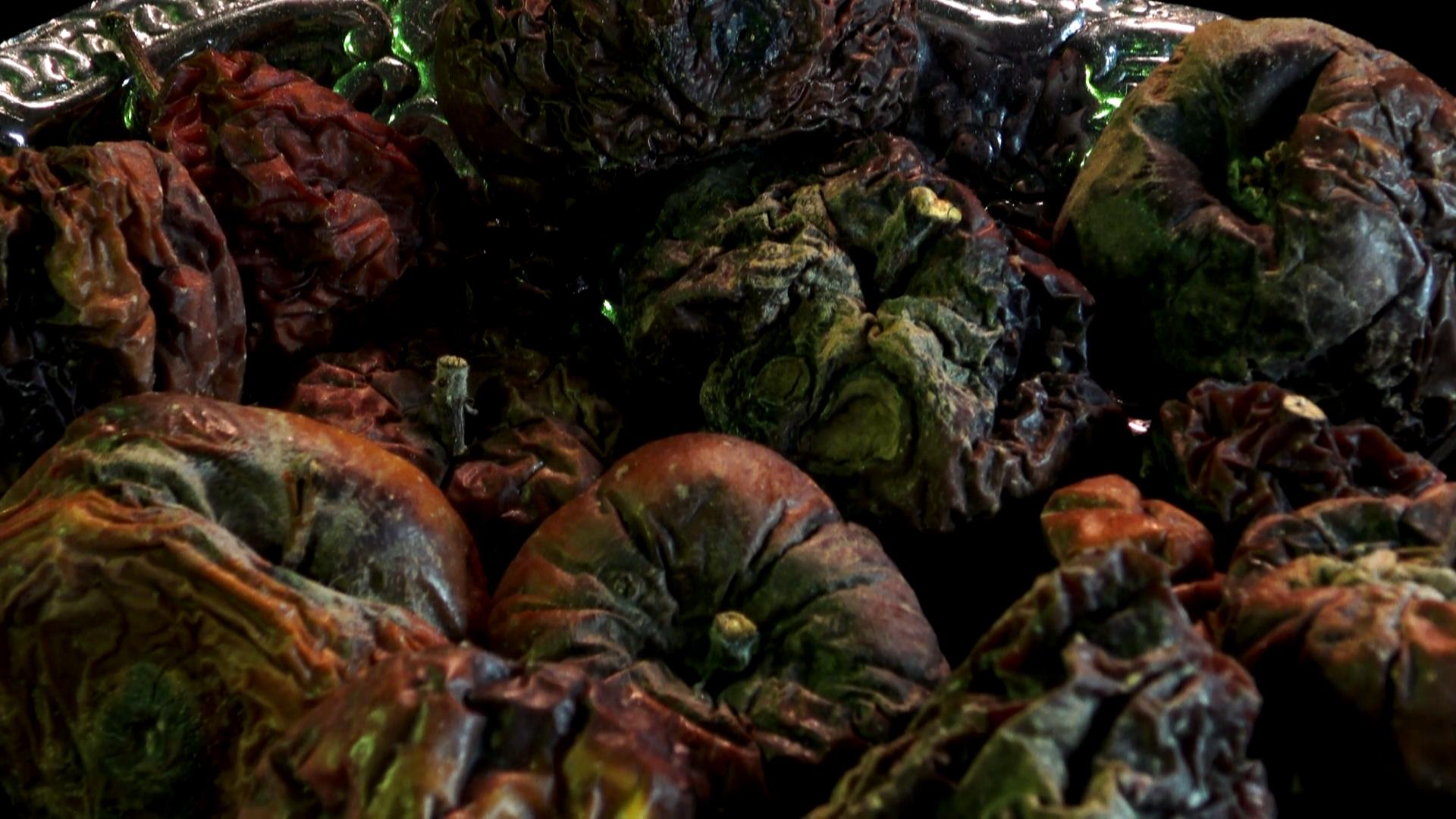
 Click to view the video
Click to view the videoAusin Sáinz Infecto, 2016, 2:55
Infecto, 2016, 2:55
With the world so little evolved, it is inevitable that refugees will continue to exist. The demonstrations that Adolf Hitler made on November 16, 1940 about homosexuality, continue 78 years later.
The death penalty for homosexual relations is valid in eight states: Iran, Saudi Arabia, Yemen and Sudan apply it throughout the territory; Somalia and Nigeria, in some provinces.
In addition, the Islamic State terrorist organization punishes those sexual minorities with death in the territories it controls in northern Syria and northwestern Iraq.
In five other countries – Pakistan, Afghanistan, the United Arab Emirates, Qatar and Mauritania – the death penalty is technically permitted by an interpretation of Islamic law (Sharia), although it does not apply.
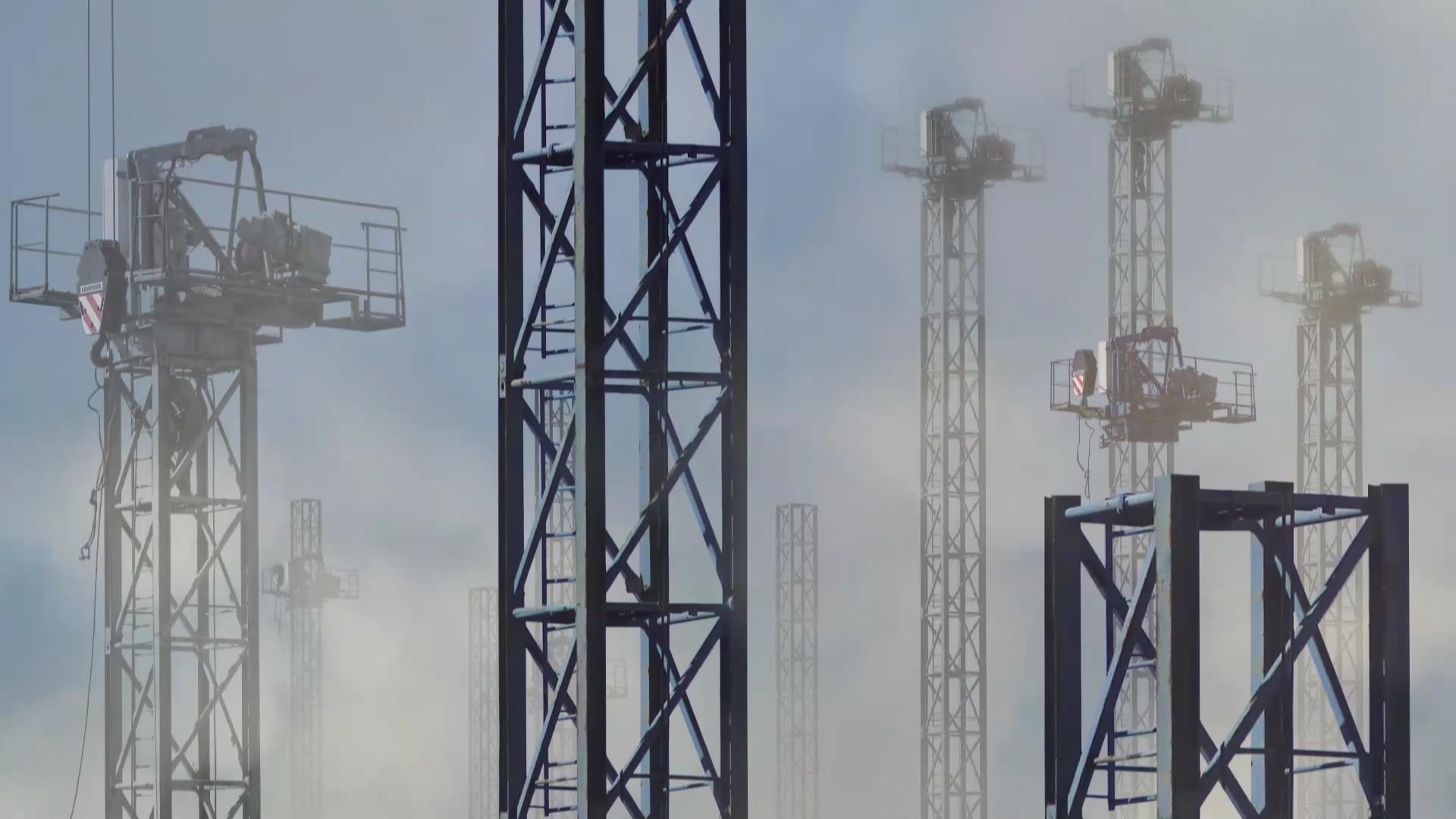
 Click to view the video
Click to view the videoAusin Sáinz Today, 2019, 5:00
Today,, 2019, 5:00
The daily abuse of man on planet earth has become something everyday. We have spoiled the earth, the air and the water. Now they make us sick. Either we take it seriously or lose our planet.
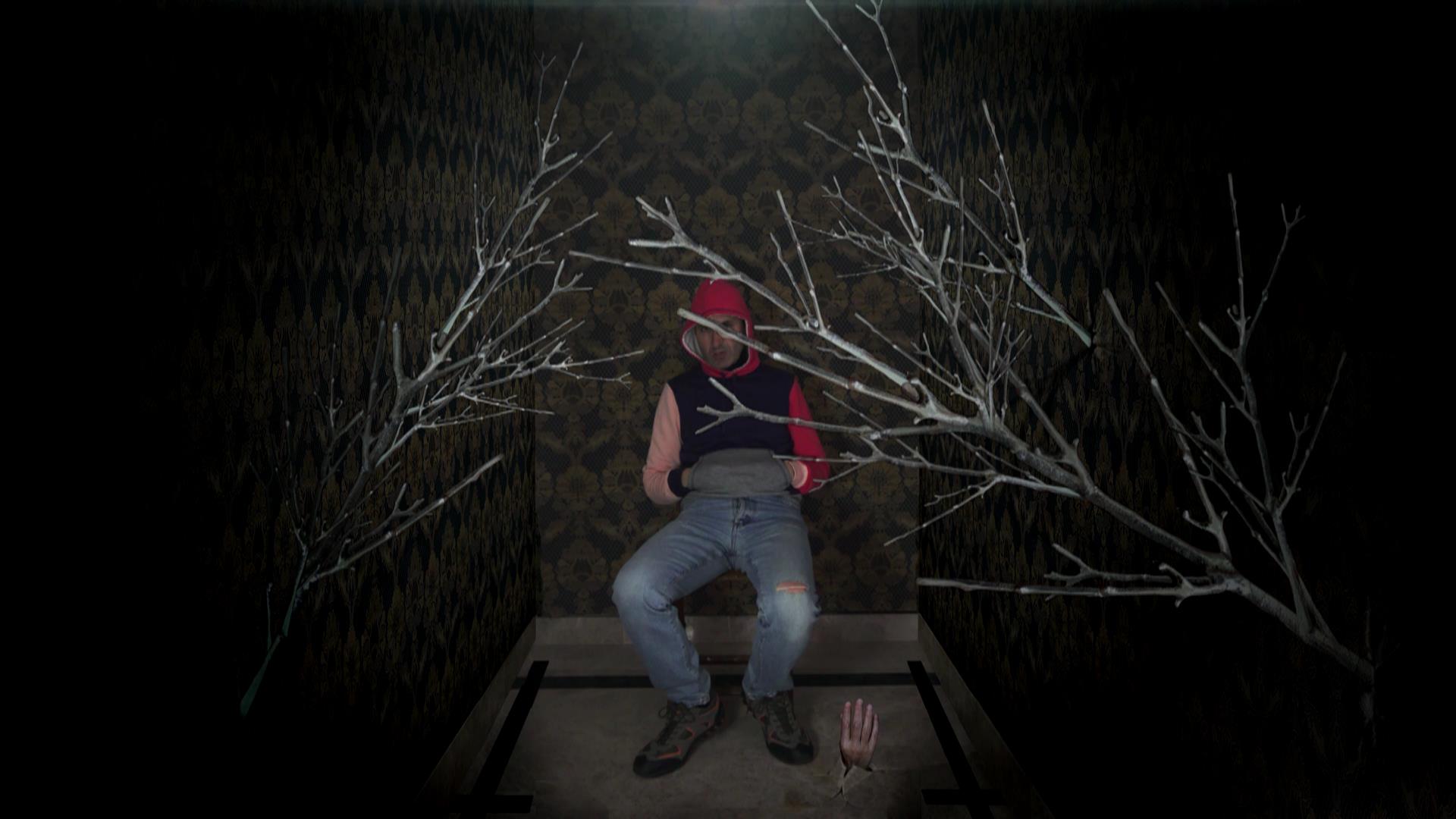
 Click to view the video
Click to view the videoAusin Sáinz Walls, 2020, 8:17
Walls, 2020, 8:17
The epidemic disease of the coronavirus that has spread throughout the world, has left many dead. It is still attacking us, forcing us to take measures to defend ourselves, based mainly on changing our lifestyles. To represent this very atypical situation that we are experiencing all over the world, I have resorted to the recreation of four walls in physical space, structuring the temporary space in various paintings as a theatrical representation. Each of these units represent different problems that we have had to face throughout the forced seclusion in our homes over the past few months. Being confined within four walls can generate uncontrollable situations. Covid-19 has put us to the test.
Títle:
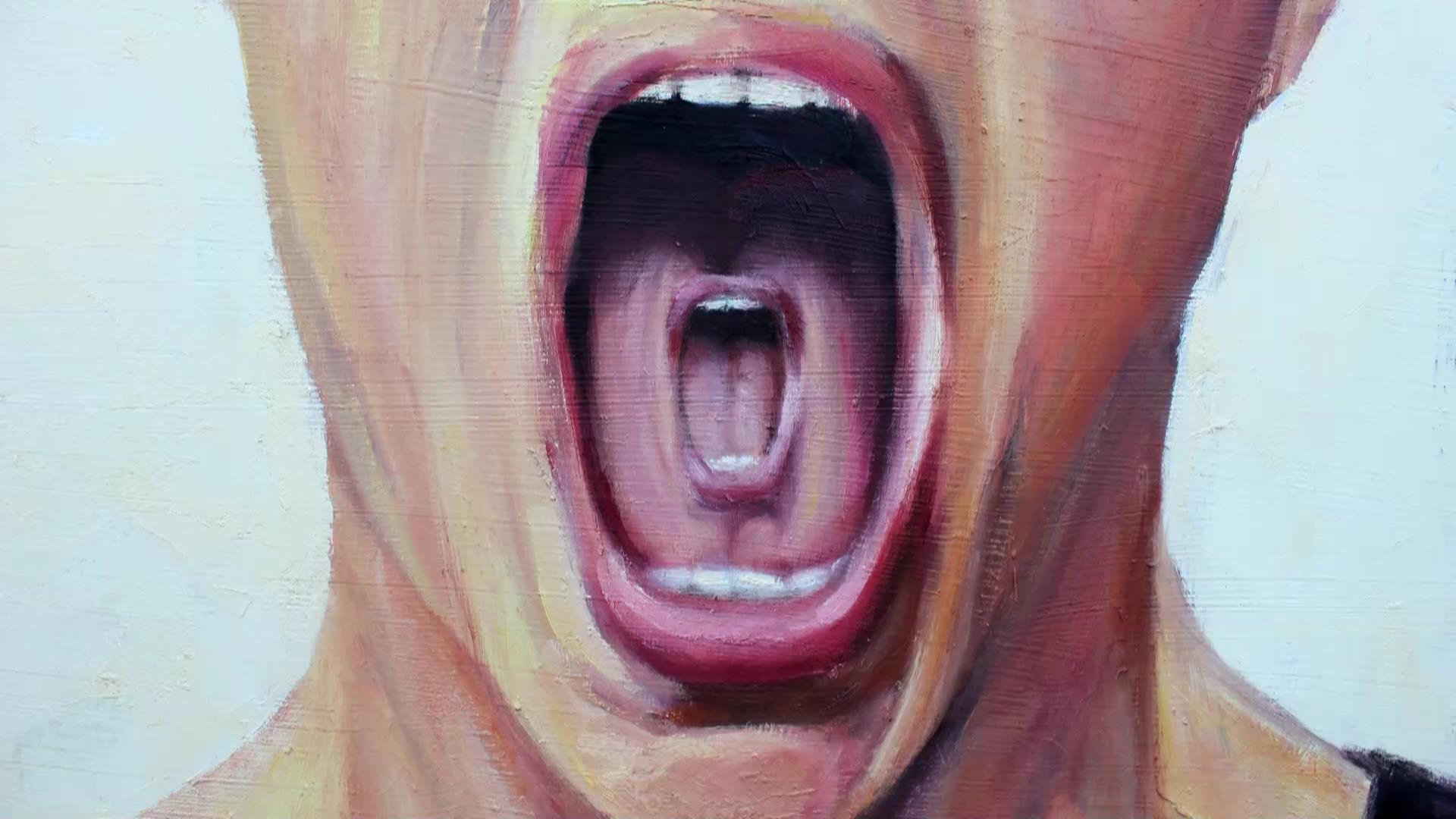
 Click to view the video
Click to view the videoAusin Sáinz Peaceful Protest, 2020, 5:00
Peaceful Protest, 2020, 5:00
In democratic societies we are used to peaceful protests. They are only attended when the media broadcast them. The powerful do not wish to have a bad name. In Spain democracy is relatively recent. During the Franco dictatorial regime all kinds of barbarities were carried out. They were silenced by the regime itself and the countries that supported it. Currently there is still a worrying social and political sector that denies that reality. They idealize it and prevent those affected from being honored.
f) 2 screenshots
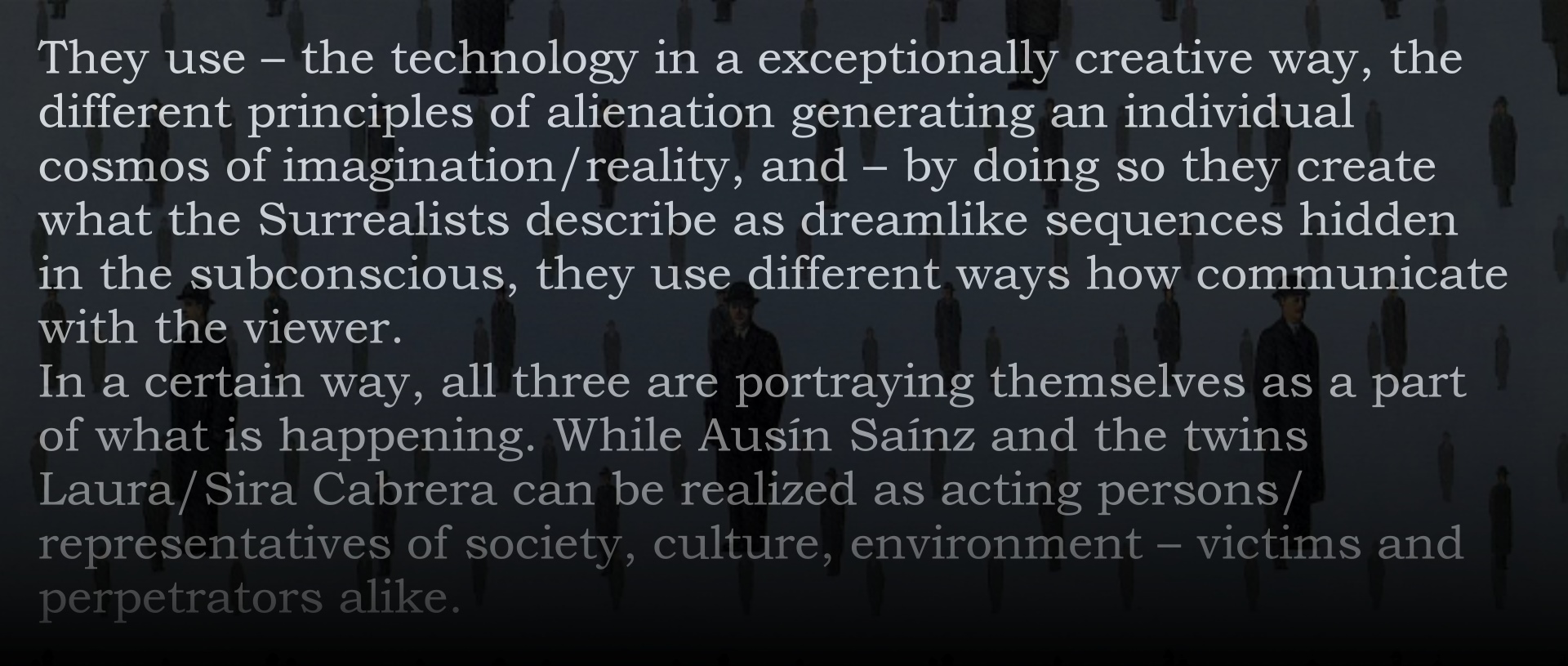
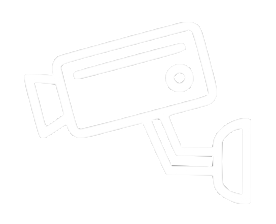
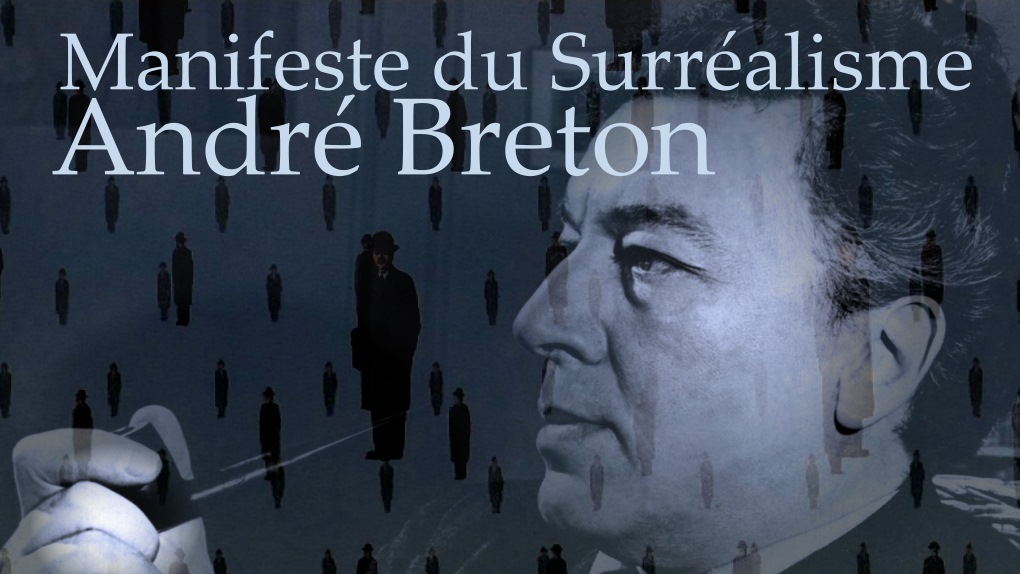

Manifesto of Surrealism
(André Breton 1924 )
So strong is the belief in life, in what is most fragile in life – real life, I mean – that in the end this belief is lost. Man, that inveterate dreamer, daily more discontent with his destiny, has trouble assessing the objects he has been led to use, objects that his nonchalance has brought his way, or that he has earned through his own efforts, almost always through his own efforts, for he has agreed to work, at least he has not refused to try his luck (or what he calls his luck!). At this point he feels extremely modest: he knows what women he has had, what silly affairs he has been involved in; he is unimpressed by his wealth or his poverty, in this respect he is still a newborn babe and, as for the approval of his conscience, I confess that he does very nicely without it. If he still retains a certain lucidity, all he can do is turn back toward his childhood which, however his guides and mentors may have botched it, still strikes him as somehow charming. There, the absence of any known restrictions allows him the perspective of several lives lived at once; this illusion becomes firmly rooted within him; now he is only interested in the fleeting, the extreme facility of everything. Children set off each day without a worry in the world. Everything is near at hand, the worst material conditions are fine. The woods are white or black, one will never sleep.
But it is true that we would not dare venture so far, it is not merely a question of distance. Threat is piled upon threat, one yields, abandons a portion of the terrain to be conquered. This imagination which knows no bounds is henceforth allowed to be exercised only in strict accordance with the laws of an arbitrary utility; it is incapable of assuming this inferior role for very long and, in the vicinity of the twentieth year, generally prefers to abandon man to his lusterless fate.


Though he may later try to pull himself together on occasion, having felt that he is losing by slow degrees all reason for living, incapable as he has become of being able to rise to some exceptional
situation such as love, he will hardly succeed. This is because he henceforth belongs body and soul to an imperative practical necessity which demands his constant attention. None of his gestures will be expansive, none of his ideas generous or far-reaching. In his mind’s eye, events real or imagined will be seen only as they relate to a welter of similar events, events in which he has not participated, abortive events. What am I saying: he will judge them in relationship to one of these events whose consequences are more reassuring than the others. On no account will he view them as his salvation.
Beloved imagination, what I most like in you is your unsparing quality.
There remains madness, “the madness that one locks up,” as it has aptly been described. That madness or another…. We all know, in fact, that the insane owe their incarceration to a tiny number of
legally reprehensible acts and that, were it not for these acts their freedom (or what we see as their freedom) would not be threatened. I am willing to admit that they are, to some degree, victims of their imagination, in that it induces them not to pay attention to certain rules – outside of which the species feels threatened – which we are all supposed to know and respect. But their profound indifference to the way in which we judge them, and even to the various punishments meted out to them, allows us to suppose that they derive a great deal of comfort and consolation from their imagination, that they enjoy their madness sufficiently to endure the thought that its validity does not extend beyond themselves. And, indeed, hallucinations, illusions, etc., are not a source of trifling pleasure. […]


The case against the realistic attitude demands to be examined, following the case against the materialistic attitude. The latter, more poetic in fact than the former, admittedly implies on the part of man a kind of monstrous pride which, admittedly, is monstrous, but not a new and more complete decay. It should above all be viewed as a welcome reaction against certain ridiculous tendencies of spiritualism. Finally, it is not incompatible with a certain nobility of thought. By contrast, the realistic attitude, inspired by positivism, from Saint Thomas Aquinas to Anatole France, clearly seems to me to be hostile to any intellectual or moral advancement. I loathe it, for it is made up of mediocrity, hate, and dull conceit. It is this attitude which today gives birth to these ridiculous books, these insulting plays. It constantly feeds on and derives strength from the newspapers and stultifies both science and art by assiduously flattering the lowest of tastes; clarity bordering on stupidity, a dog’s life. The activity of the best minds feels the effects of it; the law of the lowest common denominator finally prevails upon them as it does upon the others. [. . .]
We are still living under the reign of logic: this, of course, is what I have been driving at. But in this day and age logical methods are applicable only to solving problems of secondary interest. The absolute rationalism that is still in vogue allows us to consider only facts relating directly to our experience. Logical ends, on the contrary, escape us. It is pointless to add that experience itself has founditself increasingly circumscribed. It paces back and forth in a cage from which it is more and more difficult to make it emerge. It too leans for support on what is most immediately expedient, and it is protected by the sentinels of common sense. Under the pretense of civilization and progress, we have managed to banish from the mind everything that may rightly or wrongly be termed superstition, or fancy; forbidden is any kind of search for truth which is not in conformance with accepted practices. It was, apparently, by pure chance that a part of our mental world which we pretended not to be concerned with any longer — and, in my opinion by far the most important part — has been brought back to light. For this we must give thanks to the discoveries of Sigmund Freud. On the basis of these discoveries a current of opinion is finally forming by means of which the human explorer will be able to carry his investigation much further, authorized as he will henceforth be not to confine himself solely to the most summary realities. The imagination is perhaps on the point of reasserting itself, of reclaiming its rights. If the depths of our mind contain within it strange forces capable of augmenting those on the surface, or of waging a victorious battle against them, there is every reason to seize them — first to seize them, then, if need be, to submit them to the control of our reason. The analysts themselves have everything to gain by it. But it is worth noting that no means has been designated a priori for carrying out this undertaking, that until further notice it can be construed to be the province of poets as well as scholars, and that its success is not dependent upon the more or less capricious paths that will be followed.
Freud very rightly brought his critical faculties to bear upon the dream. It is, in fact, inadmissible that this considerable portion of psychic activity (since, at least from man’s birth until his death, thought offers no solution of continuity, the sum of the moments of the dream, from the point of view of time, and taking into consideration only the time of pure dreaming, that is the dreams of sleep, is not inferior to the sum of the moments of reality, or, to be more precisely limiting, the moments of waking) has still today been so grossly neglected. I have always been amazed at the way an ordinary observer lends so much more credence and attaches so much more importance to waking events than to those occurring in dreams. It is because man, when he ceases to sleep, is above all the plaything of his memory, and in its normal state memory takes pleasure in weakly retracing for him the circumstances of the dream, in stripping it of any real importance, and in dismissing the only determinant from the point where he thinks he has left it a few hours before: this firm hope, this concern. He is under the impression of continuing something that is worthwhile. Thus the dream finds itself reduced to a mere parenthesis, as is the night.


And, like the night, dreams generally contribute little to furthering our understanding. This curious state of affairs seems to me to call for certain reflections:
1) Within the limits where they operate (or are thought to operate) dreams give every evidence of being continuous and show signs of organization. Memory alone arrogates to itself the right to excerpt from dreams, to ignore the transitions, and to depict for us rather a series of dreams than the dream itself.
By the same token, at any given moment we have only a distinct notion of realities, the coordination of which is a question of will.* (Account must be taken of the depth of the dream. For the most part I retain only what I can glean from its most superficial layers. What I most enjoy contemplating about a dream is everything that sinks back below the surface in a waking state, everything I have forgotten about my activities in the course of the preceding day, dark foliage, stupid branches. In “reality,” likewise, I prefer to fall.) What is worth noting is that nothing allows us to presuppose a greater dissipation of the elements of which the dream is constituted. I am sorry to have to speak about it according to a formula which in principle excludes the dream. When will we have sleeping logicians, sleeping philosophers? I would like to sleep, in order to surrender myself to the dreamers, the way I surrender myself to those who read me with eyes wide open; in order to stop imposing, in this realm, the conscious rhythm of my thought.
Perhaps my dream last night follows that of the night before, and will be continued the next night, with an exemplary strictness. It’s quite possible, as the saying goes. And since it has not been proved in the slightest that, in doing so, the “reality” with which I am kept busy continues to exist in the state of dream, that it does not sink back down into the immemorial, why should I not grant to dreams what I occasionally refuse reality, that is, this value of certainty in itself which, in its own time, is not open to my repudiation? Why should I not expect from the sign of the dream more than I expect from a degree of consciousness which is daily more acute? Can’t the dream also be used in solving the fundamental questions of life? Are these questions the same in one case as in the other and, in the dream, do these questions already exist? Is the dream any less restrictive or punitive than the rest? I am growing old and, more than that reality to which I believe I subject myself, it is perhaps the dream, the difference with which I treat the dream, which makes me grow old.


2) Let me come back again to the waking state. I have no choice but to consider it a phenomenon of interference. Not only does the mind display, in this state, a strange tendency to lose its bearings (as evidenced by the slips and mistakes the secrets of which are just beginning to be revealed to us), but, what is more, it does not appear that, when the mind is functioning normally, it really responds to anything but the suggestions which come to it from the depths of that dark night to which I commend it. However conditioned it may be, its balance is relative. It scarcely dares express itself and, if it does, it confines itself to verifying that such and such an idea, or such and such a woman, has made an impression on it.
What impression it would be hard pressed to say, by which it reveals the degree of its subjectivity, and nothing more. This idea, this woman, disturb it, they tend to make it less severe. What they do is isolate the mind for a second from its solvent and spirit it to heaven, as the beautiful precipitate it can be, that it is. When all else fails, it then calls upon chance, a divinity even more obscure than the others to whom it ascribes all its aberrations. Who can say to me that the angle by which that idea which affects it is offered, that what it likes in the eye of that woman is not precisely what links it to its dream, binds it to those fundamental facts which, through its own fault, it has lost? And if things were different, what might it be capable of? I would like to provide it with the key to this corridor.


3) The mind of the man who dreams is fully satisfied by what happens to him. The agonizing question of possibility is no longer pertinent. Kill, fly faster, love to your heart’s content. And if you
should die, are you not certain of reawaking among the dead? Let yourself be carried along, events will not tolerate your interference. You are nameless. The ease of everything is priceless.
What reason, I ask, a reason so much vaster than the other, makes dreams seem so natural and allows me to welcome unreservedly a welter of episodes so strange that they could confound me now as I
write? And yet I can believe my eyes, my ears; this great day has arrived, this beast has spoken.
If man’s awaking is harder, if it breaks the spell too abruptly, it is because he has been led to make for himself too impoverished a notion of atonement.
4) From the moment when it is subjected to a methodical examination, when, by means yet to be determined, we succeed in recording the contents of dreams in their entirety (and that presupposes a
discipline of memory spanning generations; but let us nonetheless begin by noting the most salient facts), when its graph will expand with unparalleled volume and regularity, we may hope that the mysteries which really are not will give way to the great Mystery. I believe in the future resolution of these two states, dream and reality, which are seemingly so contradictory, into a kind of absolute reality, a surreality, if one may so speak. It is in quest of this surreality that I am going, certain not to find it but too unmindful of my death not to calculate to some slight degree the joys of its possession.
A story is told according to which Saint-Pol-Roux, in times gone by, used to have a notice posted on the door of his manor house in Camaret, every evening before he went to sleep, which read: THE
POET IS WORKING.
A great deal more could be said, but in passing I merely wanted to touch upon a subject which in itself would require a very long and much more detailed discussion; I shall come back to it. At this
juncture, my intention was merely to mark a point by noting the hate of the marvelous which rages in certain men, this absurdity beneath which they try to bury it. Let us not mince words: the marvelous is always beautiful, anything marvelous is beautiful, in fact only the marvelous is beautiful. [. . .]
One evening, therefore, before I fell asleep, I perceived, so clearly articulated that it was impossible to change a word, but nonetheless removed from the sound of any voice, a rather strange
phrase which came to me without any apparent relationship to the events in which, my consciousness agrees, I was then involved, a phrase which seemed to me insistent, a phrase, if I may be so bold, which was knocking at the window. I took cursory note of it and prepared to move on when its organic character caught my attention. Actually, this phrase astonished me: unfortunately I cannot remember it exactly, but it was something like: “There is a man cut in two by the window,” but there could be no question of ambiguity, accompanied as it was by the faint visual image* (Were I a painter, this visual depiction would doubtless have become more important for me than the other. It was most certainly my previous predispositions which decided the matter. Since that day, I have had occasion to concentrate my attention voluntarily on similar apparitions, and I know they are fully as clear as auditory phenomena. With a pencil and white sheet of paper to hand, I could easily trace their outlines. Here again it is not a matter of drawing, but simply of tracing. I could thus depict a tree, a wave, a musical instrument, all manner of things of which I am presently incapable of providing even the roughest sketch. I would plunge into it, convinced that I would find my way again, in a maze of lines which at first glance would seem to be going nowhere. And, upon opening my eyes, I would get the very strong impression of something “never seen.” The proof of what I am saying has been provided many times by Robert Desnos: to be convinced, one has only to leaf through the pages of issue number 36 of Feuilles libres which contains several of his drawings (Romeo and Juliet, A Man Died This Morning, etc.) which were taken by this magazine as the drawings of a madman and published as such.) of a man walking cut half way up by a window perpendicular to the axis of his body. Beyond the slightest shadow of a doubt, what I saw was the simple reconstruction in space of a man leaning out a window. But this window having shifted with the man, I realized that I was dealing with an image of a fairly rare sort, and all I could think of was to incorporate it into my material for poetic construction. No sooner had I granted it this capacity than it was in fact succeeded by a whole series of phrases, with only brief pauses between them, which surprised me only
slightly less and left me with the impression of their being so gratuitous that the control I had then exercised upon myself seemed to me illusory and all I could think of was putting an end to the
interminable quarrel raging within me. [. . .]


Completely occupied as I still was with Freud at that time, and familiar as I was with his methods of examination which I had some slight occasion to use on some patients during the war, I resolved to obtain from myself what we were trying to obtain from them, namely, a monologue spoken as rapidly as possible without any intervention on the part of the critical faculties, a monologue consequently unencumbered by the slightest inhibition and which was, as closely as possible, akin to spoken thought. It had seemed to me, and still does — the way in which the phrase about the man cut in two had come to me is an indication of it — that the speed of thought is no greater than the speed of speech, and that thought does not necessarily defy language, nor even the fast-moving pen. It was in this frame of mind that Philippe Soupault — to whom I had confided these initial conclusions – and I decided to blacken some paper, with a praiseworthy disdain for what might result from a literary point of view. The ease of execution did the rest. By the end of the first day we were able to read to ourselves some fifty or so pages obtained in this manner, and begin to compare our results. All in all, Soupault’s pages and mine proved to be remarkably similar: the same overconstruction, shortcomings of a similar nature, but also, on both our parts, the illusion of an extraordinary verve, a great deal of emotion, a considerable choice of images of a quality such that we would not have been capable of preparing a single one in longhand, a very special picturesque quality and, here and there, a strong comical effect. The only difference between our two texts seemed to me to derive essentially from our respective tempers. Soupault’s being less static than
mine, and, if he does not mind my offering this one slight criticism, from the fact that he had made the error of putting a few words by way of titles at the top of certain pages, I suppose in a spirit of mystification. On the other hand, I must give credit where credit is due and say that he constantly and vigorously opposed any effort to retouch or correct, however slightly, any passage of this kind which seemed to me unfortunate. In this he was, to be sure, absolutely right.* (I believe more and more in the infallibility of my thought with respect to myself, and this is too fair. Nonetheless, with this thoughtwriting, where one is at the mercy of the first outside distraction, “ebullutions” can occur. It would be inexcusable for us to pretend otherwise. By definition, thought is strong, and incapable of catching itself in error. The blame for these obvious weaknesses must be placed on suggestions that come to it from without.) It is, in fact, difficult to appreciate fairly the various elements present: one may even go so far as to say that it is impossible to appreciate them at a first reading. To you who write, these elements are, on the surface, as strange to you as they are to anyone else, and naturally you are wary of them. Poetically speaking, what strikes you about them above all is their extreme degree of immediate absurdity, the quality of this absurdity, upon closer scrutiny, being to give way to everything admissible, everything legitimate in the world: the disclosure of a certain number of properties and of facts no less objective, in
the final analysis, than the others.
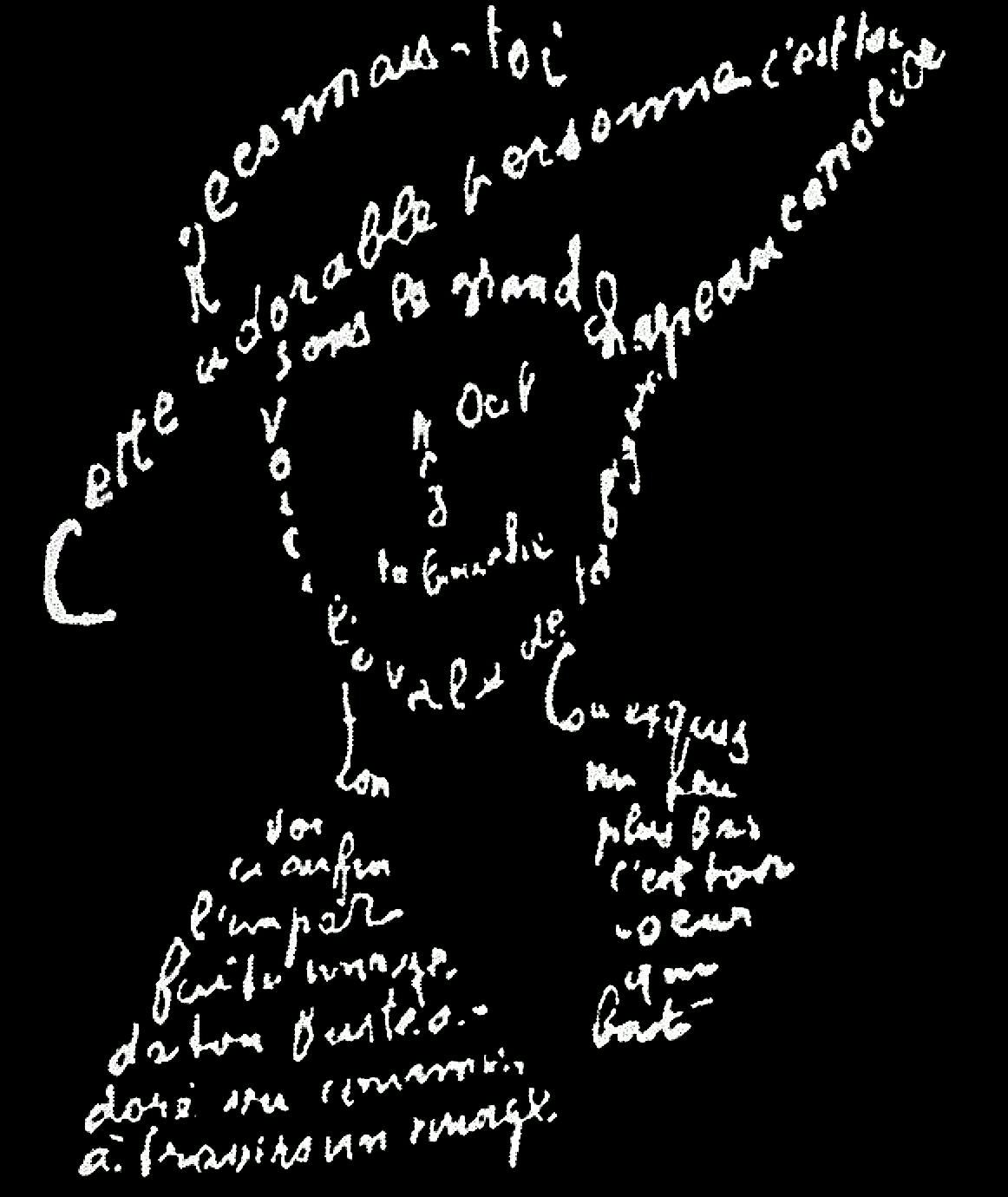 Caligram by Apollinaire
Caligram by Apollinaire
In homage to Guillaume Apollinaire, who had just died and who, on several occasions, seemed to us to have followed a discipline of this kind, without however having sacrificed to it any mediocre literary means, Soupault and I baptized the new mode of pure expression which we had at our disposal and which we wished to pass on to our friends, by the name of SURREALISM.[. . .]
Those who might dispute our right to employ the term SURREALISM in the very special sense that we understand it are being extremely dishonest, for there can be no doubt that this word had no
currency before we came along. Therefore, I am defining it once and for all:
SURREALISM, n. Psychic automatism in its pure state, by which one proposes to express — verbally, by means of the written word, or in any other manner — the actual functioning of thought.
Dictated by the thought, in the absence of any control exercised by reason, exempt from any aesthetic or moral concern.









ENCYCLOPEDIA. Philosophy. Surrealism is based on the belief in the superior reality of certain forms of previously neglected associations, in the omnipotence of dream, in the disinterested play of
thought. It tends to ruin once and for all all other psychic mechanisms and to substitute itself for them in solving all the principal problems of life. [. . .]
. . .The mind which plunges into Surrealism relives with glowing excitement the best part of its childhood. For such a mind, it is similar to the certainty with which a person who is drowning reviews
once more, in the space of less than a second, all the insurmountable moments of his life. Some may say to me that the parallel is not very encouraging. But I have no intention of encouraging those who tell me that. From childhood memories, and from a few others, there emanates a sentiment of being unintegrated, and then later of having gone astray, which I hold to be the most fertile that exists. It is perhaps childhood that comes closest to one’s “real life”; childhood beyond which man has at his disposal, aside from his laissez-passer, only a few complimentary tickets; childhood where everything nevertheless conspires to bring about the effective, risk-free possession of oneself. Thanks to Surrealism, it seems that opportunity knocks a second time. It is as though we were still running toward our salvation, or our perdition. In the shadow we again see a precious terror. Thank God, it’s still only Purgatory. With a shudder, we cross what the occultists call dangerous territory. In my wake I raise up monsters that are lying in wait; they are not yet too ill-disposed toward me, and I am not lost, since I fear them. [. . .]
Surrealism, such as I conceive of it, asserts our complete nonconformism clearly enough so that there can be no question of translating it, at the trial of the real world, as evidence for the defense. It could, on the contrary, only serve to justify the complete state of distraction which we hope to achieve here below.
Kant’s absentmindedness regarding women, Pasteur’s absentmindedness about “grapes,” Curie’s absentmindedness with respect to vehicles, are in this regard profoundly symptomatic. This world is only
very relatively in tune with thought, and incidents of this kind are only the most obvious episodes of a war in which I am proud to be participating. Surrealism is the “invisible ray” which will one day enable us to win out over our opponents. “You are no longer trembling, carcass.” This summer the roses are blue; the wood is of glass. The earth, draped in its verdant cloak, makes as little impression upon me as a ghost. It is living and ceasing to live which are imaginary solutions. Existence is elsewhere.
André Breton. Excerpt from the First Manifesto of Surrealism in Art in Theory 19001990:
An Anthology of Changing Ideas.
Charles Harrison & Paul Wood, eds. (Oxford: Blackwell Publishers, 1992), pp. 87‐88.
Complete Text available as PDF
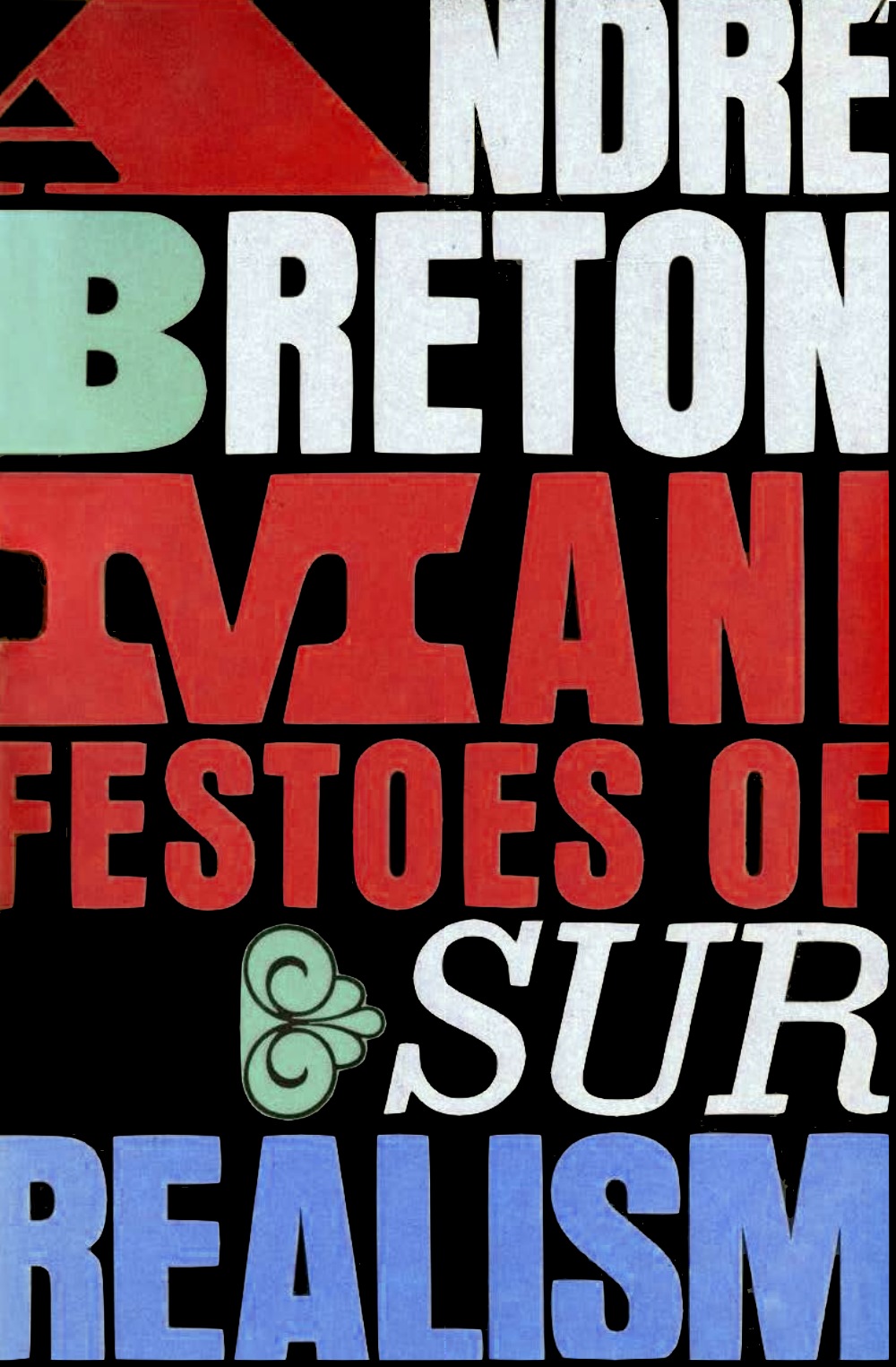

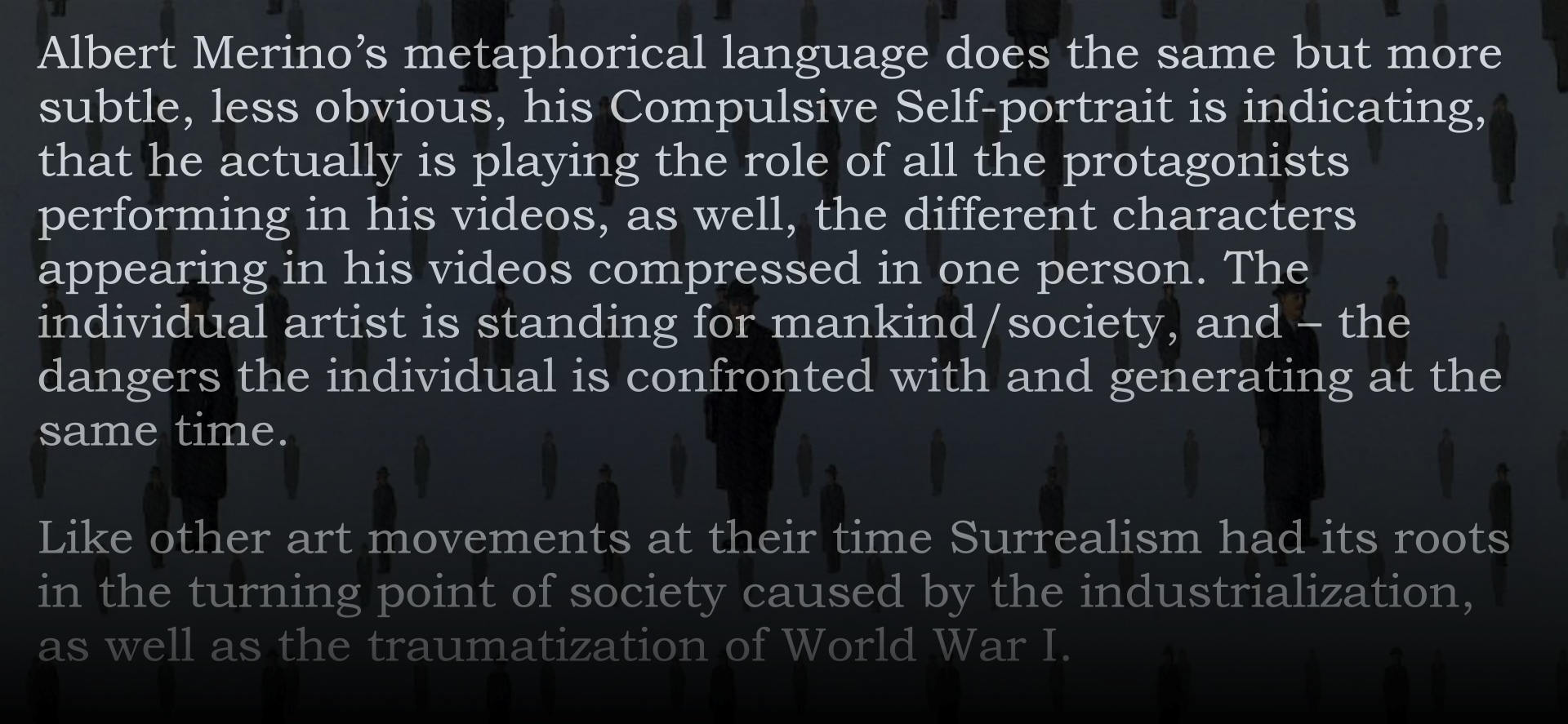

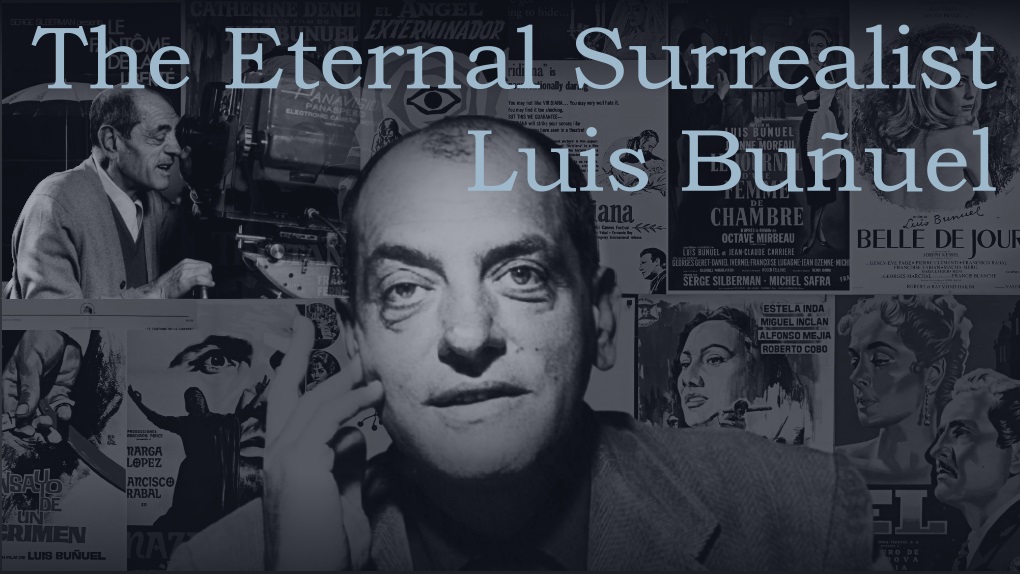

Luis Buñuel: Eternal Surrealist
by
Adrian Martin
How many times, in cultural history, has surrealism been declared out for the count? For the German philosopher Walter Benjamin, writing in 1929, surveying the surrealist literature of André Breton, Robert Desnos, and Louis Aragon, the glory days of this predominantly French movement—which had started scarcely a decade earlier, in 1917—were pretty much already over. Thirty years after Benjamin’s pronouncement, the troublemakers of the Situationist International, led by Guy Debord, never missed a chance to mock what they perceived as the nearly extinct dinosaur of surrealism, with its aging spokesmen no longer so terribly shocking in their studied provocations. In that same period of the ’50s and well beyond, Salvador Dalí’s clownish embrace of magazine advertising, TV, and general media celebrity hastened the impression, in many people’s minds, that surrealism was a spent force, reduced to a bunch of tired clichés—just another ephemeral art-world or showbiz fad.
But there has always been an unbeatable counterargument to any prognosis of surrealism’s demise, and it can be summed up in a name: Spanish-born Luis Buñuel (1900–1983). From his first short, the classic Un chien andalou (1929), to his final feature, That Obscure Object of Desire (1977), Buñuel always stayed true to those primary surrealist principles with which he most identified: a spirit of revolt; the subversive power of passionate love, both romantic and erotic; a belief in the creativity of the unconscious (dreams and fantasies); a pronounced taste for black humor; and, last but never least, an abiding contempt for institutional religion and its representatives.
Indeed, if there is one motif above all others that characterizes Buñuel’s cinema, it is surely the parade (again, from first film to last) of nuns, priests, and even saints, presented as figures who are variously silly, pompous, repressive, and sinister—sometimes all of those attributes at once.
In any decent reckoning with Buñuel, cinema, and surrealism, we must take into account not only his own dazzling career spanning half a century, but also the profound marks it has left on the sensibility of subsequent major filmmakers. Figures including Pedro Almodóvar, Walerian Borowczyk, David Lynch, Věra Chytilová, David Cronenberg, Jan Švankmajer, Sara Driver, Arturo Ripstein, Alejandro Jodorowsky, Jean-Claude Brisseau, and Raúl Ruiz have all absorbed different aspects of the Master and reinterpreted his method in their own fashion.
However, after so many appropriations and recyclings, we may today have a somewhat skewed notion of Buñuel and his art. When we revisit his work, we discover not a torrid, psychedelic, violently disjointed style—the type of thing young art students always imagine surrealism to have been in its anarchic heyday—but the exact opposite: an unnerving calmness, a directness and simplicity in the way he staged the most outrageous situations and spun the most outlandish tales.


“Buñuel meticulously shaped his films as arrows designed to burrow straight into the unconscious of spectators, without undue filters or explanations.”
He aimed, throughout his life, for an ever less adorned manner: little musical underlining (when he does use music, it is always powerful); an extremely controlled direction of actors (he collaborated with many great ones, from Fernando Rey to Catherine Deneuve), with special attention paid to gesture and outward appearance; no facile camera tricks or ostentatious displays of color or design. Buñuel meticulously shaped his films as arrows designed to burrow straight into the unconscious of spectators, without undue filters or explanations.
According to legendary Swiss critic and programmer Freddy Buache (1924–2019), friend of Buñuel and author of an important 1970 book on him: “The true originality of Buñuel’s cinema is that it slips into the mould of the most cliché-ridden type of filmmaking, and then destroys it by bursting out from within.” This was already true even in his wildest days of youth. Un chien andalou and L’âge d’or (1930) are full of provocative, startling images (some of them devised by Dalí) that play simultaneously on the registers of black comedy (dead animals in the former) and scandalous liberation (love scenes in the latter). But Buñuel almost always begins his scenes with a perfectly composed, elegant picture of bourgeois respectability and refinement—which he then proceeds to dismantle. Across his career, the outright iconoclasm of this procedure softens—but, with a supreme sense of perversity, the uncanny sense of something not quite right comes to inhabit every situation at its outset, and in its core.
Buñuel reflected, in the course of a 1965 interview, on the need he felt to evolve beyond that first, openly antagonistic phase of surrealism. The horrors of twentieth-century history had, in his opinion, rendered the art movement’s celebrated shock tactics redundant: “How is it possible to shock after the Nazi mass murders and the atom bombs dropped on Japan?” But he went on to suggest: “One has to modify one’s method of attack, although one’s aims remain essentially the same—for the moral oppression has remained unchanged, it has simply assumed another disguise. What I’m aiming to do in my films is to disturb people and destroy the rules of a kind of conformism that wants everyone to think they are living in the best of all possible worlds.”
L’âge d’or was a movie that in its day—and as movie lore has often recounted—prompted outraged spectators (especially those affiliated with far-right political groups) to riot and tear up the cinema in which it was screening. André Breton, surrealism’s chief spokesperson at the time, celebrated the “violent liberation” that the film heralded, and its ultimate message of “a better life” whose cornerstone is “LOVE” (the capitals are his). But Buñuel, while never becoming disenchanted with such a fine surrealist credo, saw ruefully that this better life never truly came into existence for the majority of people anywhere in the world, despite the best efforts of a few feverishly intoxicated, creative imaginations. The essential stumbling block, he realized, was that deluded fantasy, held by most citizens, of existing “in the best of all possible worlds.” It’s that perception, that internalized ideology, that needed to be eroded by the powers of art—but it could only be done slowly and surely, slyly. So, as his style became more direct, his profound “message” became more indirect—and yet more pervasive in its effect on viewers, a seduction and a slap contained in the same gesture.


Buñuel’s trajectory can seem to us, in retrospect, like a starry one—few filmographies can boast the level of sustained achievement that takes us from the veritable surrealist manifesto of L’âge d’or to the corrosive social satire of Viridiana (1961) and, for his penultimate work, the completely free “sketch comedy” of The Phantom of Liberty (1974). Yet he did not always find it easy to maintain the momentum of this career. Fifteen years separate the disquieting documentary Land Without Bread (1932) from his first assignment in Mexico (where he resettled), Gran Casino. Despite the international triumph in 1950 of Los olivdados, a blending of surrealism with neorealism, Buñuel’s time as a director-for-hire in the Mexican industry cast a shadow of decline over his artistry.
As always, Buñuel was candid about his fortunes and misfortunes. Of the musicals, westerns, thrillers, melodramas, and romances he made during the 1950s, he admitted there were “three or four frankly bad films,” but nonetheless insisted: “I never infringed my moral code.” In retrospect, cinema critics and historians see the output of those years in a more positive light. For what Buñuel learned then was how to bring his surrealist impulses within the limits of traditional genre and narrative.
Throughout the 1950s and into the early ’60s, Buñuel also offers an early example, par excellence, of what we today call the transnational filmmaker. By 1950 he had already accumulated production experiences in Spain, France, Mexico, and even the U.S., squirreled away doing odd jobs in various Hollywood studios. Robinson Crusoe (1954) and Death in the Garden (1956) are both examples of coproduction (of Mexico with, respectively, the U.S. and France), allowing Buñuel to work with actors including Dan O’Herlihy and Simone Signoret—not to mention Michel Piccoli, who would reappear in his later projects. Both these films place their characters in natural surroundings (island, forest) and pitilessly weigh up so-called civilized ethics (in all its racism and paternalism) against fleeting, precarious experiences of freedom and self-knowledge.


The opening years of the 1960s must have been a puzzling time for Buñuel. On the one hand, still based largely in Mexico, he makes two of his greatest masterpieces, Viridiana and The Exterminating Angel (1962). These films have lost none of their explosive energy or dark wit. Viridiana is the most perfect formulation of a story Buñuel loved to often tell: of a deluded person (Silvia Pinal as the titular heroine) who thinks she is propagating “saintly,” Christian goodness, all the while triggering social catastrophe around her, and herself slipping into the darkest, amoral waters. The Exterminating Angel, a project Buñuel had nurtured since the mid ’50s, is a surrealistic mind-game crossed with a situation recalling Jean-Paul Sartre’s hellish No Exit: a large party finds itself inexplicably trapped inside a room, unable to simply walk out.
Yet these films bore little relation to the nouvelle vague in France or other burgeoning “new cinema” movements around the world in that era. Buñuel still had his firm fans (including the great Mexican essayist and poet Octavio Paz) but he was, in a superficial sense at least, no longer “fashionable.” By the time he made his own first fully French production, Diary of a Chambermaid, in 1964 with Piccoli and Jeanne Moreau, he found himself dismissed by the likes of Éric Rohmer in Cahiers du cinéma, painted as an artist who was repetitively and wearily settling old scores from forty years previously. It remains his most underrated film, veritably seething under its placid exterior.
In 1965, the forty-five-minute Simon of the Desert—another of his blasphemous, antireligious comedies, setting the code of ascetic denial against an array of delicious, earthly pleasures—seemed to some at the time like a characteristic postscript to a distinguished career. (Another faithful devotee, Brazilian Glauber Rocha, can be glimpsed among the wild rockers in its final scene.) But, as things happily turned out, Buñuel was on the cusp of a startling renaissance. Partly due to a sympathetic producer (Serge Silberman) and screenwriting collaborator (Jean-Claude Carrière), Buñuel relaunched his career—at the age of sixty-seven!—with Belle de jour (1967). This portrait of a demure housewife (Deneuve) who becomes a high-grade, much sought-after prostitute in the daytime effortlessly blurs the line between fantasy and reality, myth and mundanity. For the subsequent decade, it was one wonderful film after another for Buñuel, made mostly in France—with a crucial trip back to Spain for Tristana (1970), again starring Deneuve, a downbeat, antipatriarchal parable that is, at heart, his angriest and bleakest testament.
In truth, it wasn’t as if Buñuel in the later ’60s had really changed either his style or his content. Just as he remained true to surrealism, he also doggedly stuck to the inspiring, subversive literature he adored in his youth and long planned to adapt: novels by Octave Mirbeau (Diary of a Chambermaid), Benito Pérez Galdós (Tristana), and Pierre Loüys (The Woman and the Puppet, the source for both That Obscure Object of Desire, and Josef von Sternberg’s The Devil Is a Woman in 1935). But, starting with Belle de jour, there was a productive friction between the mannered surfaces of French high society and the filmmaker’s ironic sensibility that generated new sparks—and certainly won him a new, international audience.
The Milky Way (1969)—yet another satirical attack on religion and its myths—announced the tendency, prominent in Buñuel’s final decade of productivity, to use episodic narrative structures. Anecdotes, dreams, and flashbacks are cleverly strung together along some “spine” of a basic situation. The Discreet Charm of the Bourgeoisie (1972)—in which a bunch of refined characters forever tramp around looking for a good, uninterrupted meal—reverses the shut-in premise of The Exterminating Angel. In either case, the result is the same: a slow descent into uncivilized savagery, a surrender to animalistic drives, a gradual stripping away of every social hypocrisy. And, meanwhile, the wider world is overrun not by righteous revolutionaries but increasingly fanatical, insane, murderous terrorists (and, in this, Buñuel was frighteningly prescient).


The Phantom of Liberty furthered this sardonic operation of de-culturation: in one of its episodes, elegant citizens gather together at a table to defecate, and retire to their atomized bathroom cubicles in order to greedily devour food. That Obscure Object concludes with a mysterious terrorist blast that caps off, with an appropriately apocalyptic flourish, a withering comedy of manners about the non-communication between modern women (the heroine is played—not that every first-time viewer notices this—by two alternating actors, Carole Bouquet and Ángela Molina) and old-fashioned men (incarnated once more by Fernando Rey). That was also the end of Buñuel’s screen career. He did nurture subsequent film projects, but decided to concentrate—with Carrière’s close assistance—on the composition of his marvelous autobiography, My Last Sigh (1982). One of its many delights is the revelation of the “ordinary,” even conservative Buñuel—the faithful husband and devoted father, the guy who even enjoys talking to exceptionally smart and enlightened priests—right alongside the forever enraged and passionate surrealist. The line everyone quotes from this book remains its best and greatest paradox: “Still an atheist . . . thank God!”
“Buñuel was a unique mixture of pure artistic intuition and the most skilled filmmaking craft—so skilled that he was able to keep making films well into the 1970s.”
Buñuel was a firm believer in the power of the unconscious mind—Carrière tells the tale of how working in tandem with the director was often a matter of spontaneously exercising the “muscle” of their imaginations—but he disallowed everything that locked unconsciousness down to something systematic and static. Buñuel was a unique mixture of pure artistic intuition and the most skilled filmmaking craft—so skilled that he was able to keep making films well into the 1970s, even as his eyesight was failing him. Buache summed up both Buñuel’s personality and his approach to filmmaking perfectly: “The artist in him cannot be separated from the man. He walks, laughs, and has a drink with friends in just the same way as he conceives a scene, shoots it, and then fits it organically into his storyline.”
He tended to laugh at critical interpretations of his work. Although, as a surrealist, he was no stranger to the Freudian tenets of psychoanalysis, he especially mocked ultra-rational attempts to rigidly decipher the “symbolism” of his images and scenes. Spiders, ants, endless roads, as well as all strange, off-screen sounds of drums, machine gun fire, or buzzing insects . . . these recurrent elements all resonated in the dramatic or comic context Buñuel gave them, but they didn’t “mean” anything exact. As a true and eternal surrealist, Buñuel believed in the poetic—not divine—mystery inherent in all things.
Adrian Martin is an Australian-born film critic based in Spain; his website, covering forty years of writing, is at filmcritic.com.au.

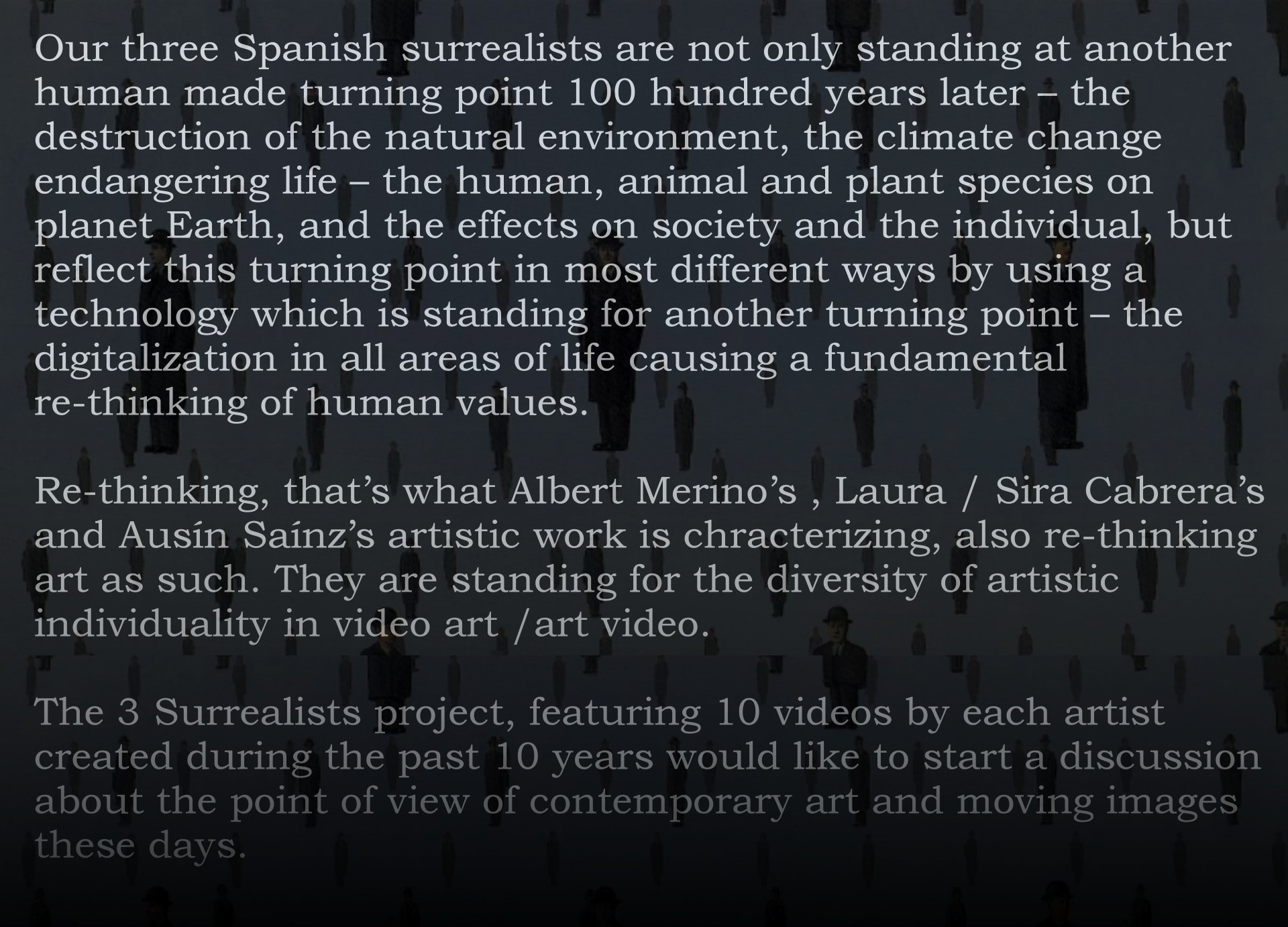


The 3 Surrealists

Concept
This work focuses on No form of violence is appropriate for children and cannot be ignored.

Laura y Sira Cabrera (Spain)

The video titles
Laura y Sira Cabrera (Spain) – Drifts in time , 2016. 7:34
Laura & Sira Cabrera (Spain) – “Irreconciliables, II”, 2014, 3:54
Laura & Sira Cabrera (Spain) – Revolutio, 2014, 6:20
Laura & Sira Cabrera (Spain) – Indicios / Inkling, 2017, 6’59”
Laura & Sira Cabrera (Spain) – Climate Disorder, 2019, 4:18
Laura & Sira Cabrera (Spain) – Climate Dementia, 2019, 3:51
Laura & Sira Cabrera (Spain) – Transmutaciones, 2020, 10:12
Laura & Sira Cabrera (Spain) – Monologue, 2020, 1:08
Laura & Sira Cabrera (Spain) – Between Species, 2021, 9:16









Albert Merino (Spain)

The video titles
Albert Merino (Spain) – The City and The Other, 2010, 3:09
Albert Merino (Spain) – Hidden Mud, 2010, 7:42
Albert Merino (Spain) – Les Bagneurs, 2010, 3:50
Albert Merino (Spain) – The White Rain, 2010, 8:10
Albert Merino (Spain) – The Trace of Salt, 2010, 7:38
Albert Merino (Spain) – Le Badinage, 2010, 6:32
Albert Merino (Spain) – Lot’s Shadow, 2011, 6:40
Albert Merino (Spain) – Compulsive Self-portrait, 2011,05:46
Albert Merino (Spain) – Memories of Detachment, 2021, 18:00
Albert Merino (Spain) – The Contemporary Art Festival, 2012, 20:20
Albert Merino (Spain) – Bestiary, 2018, 5:10
Albert Merino (Spain) – The Present Condition, 2020, 18:18









Ausin Sáinz (Spain)

The video titles
Ausin Sainz (Spain) – Peaceful Protest,, 2020, 5:00
Ausin Sainz (Spain) – Walls, 2020, 8:17
Ausin Sainz (Spain) – Today,, 2019, 5:00
Ausin Sainz (Spain) – Infecto, 2016, 2:55
Ausin Sainz (Spain) – Security, 2015, 06:25
Ausin Sainz (Spain) – Passport,, 2015, 04:36
Ausin Sainz (Spain) – Fidelity, 2015, 6:12
Ausin Sainz (Spain) – Dictator,. 2014, 03:47
Ausin Sainz (Spain) – The Unborn,, 2014, 4:43
Ausin Sáinz (Spain) – Spain Catalonia_Russia, 2022, 07:48










Credits




The show “The 3 Surrealists” is a collaboration / networked action between
THe New Museum od Networked Art,
the curator Wilfried Agricola de Cologne (Cologne/Germany) and the artists Laura & Sira Cabrera, Albert Merino and Ausín Saínz @ Alphabet Art Centre.
All texts, images and videos © by the artists/authors/curator or owners.
The Online/Offline Show – “The 3 Surrealists”, its concept, design and work out © 2023 by Agricola de Cologne/The New Museum of Networked Art.


